Category: Manga
Manga recommendations.
Jojo’s Bizarre Adventure – All Jojo Protagonists Ranked
Jojo’s Bizarre Adventure is one of the most popular and well-known manga series of all time, largely because of the oddball Jojo protagonists. In this article, I want to talk about each one of them, their personality, character development, as well as their strengths and weaknesses.
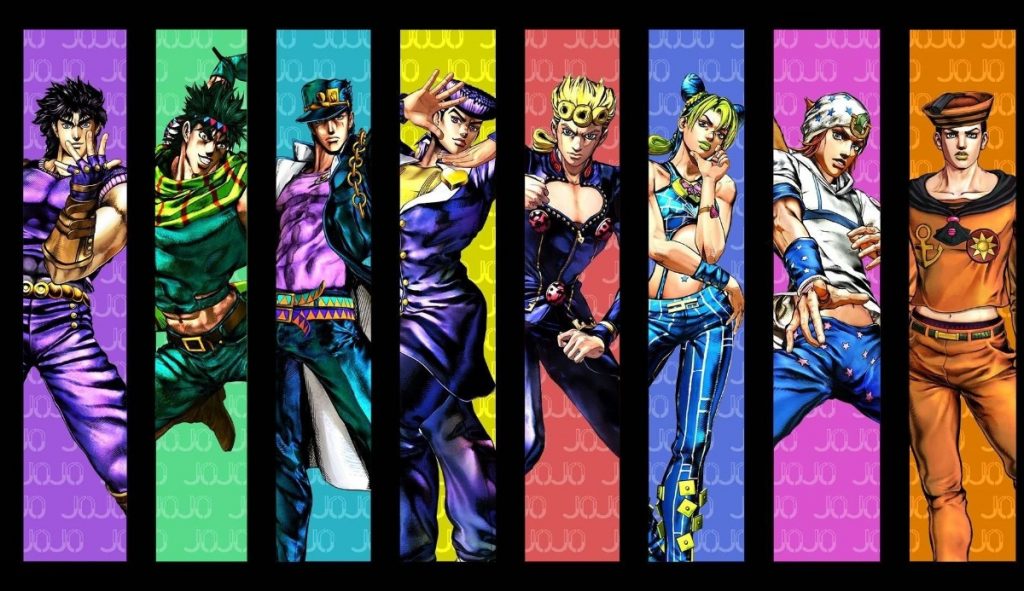
If you’re a fan of Jojo’s Bizarre Adventure, I hope you enjoy this ranking of all Jojo protagonists and find out who my favorite among them is.
Looking for more manga recommendations? Check out my list of the best shonen manga and the best martial arts manga.
Jonathan Joestar

Jonathan Joestar is the protagonist of Jojo’s Bizarre Adventure: Part 1 – Phantom Blood.
He was raised by his father, together with his adopted brother Dio Brando. Jonathan can be seen as a true gentleman who’s characterized by his honesty, kindness, and pride in his family name. He’s selfless and courageous, fights with honor, and has an unwavering moral compass.
Throughout Phantom Blood, he develops from an innocent and naïve youth to a powerful and determined hero. Jonathan is essentially a classical hero archetype.
His conflict with Dio Brando is at the center of Phantom Blood and becomes the driving force of the story of Jojo’s Bizarre Adventure. Dio Brando’s legacy influences the Joestar family for generations to come.
Jonathan Joestar is a typical shonen protagonist and by far the least complex and interesting of all the Jojo protagonists. He’s much too bland and doesn’t stand apart from other shonen manga protagonists of his time.
Josuke Higashikata

Josuke Higashikata, also known as ‘Gappy,’ is one of the more unique Jojo protagonists and is the main character of Jojo’s Bizarre Adventure: Part 8 – Jojolion.
Gappy is a character who has both physical strength and great combat skills. The most interesting part about him, and what makes him stand apart from other Jojo protagonists, is that he’s an amnesiac. Over the course of Jojolion, we follow him as he tries to figure out who he truly is.
While Gappy can be kindhearted and compassionate, he can also be ruthless, brutal, and logic-driven. This is especially clear in his battles, in which he has no qualms about killing his opponents in cold blood.
His stand, Soft and Wet, is one of the series’ most interesting. It allows him to use bubbles to steal aspects and properties of anything they touch or pop on. It’s an incredibly creative stand and makes for some truly unique and interesting battles.
Being an amnesiac, however, is also what makes Gappy a relatively weak Jojo protagonist. Repeatedly, he comes into conflict with other characters for reasons he doesn’t understand.
This, however, seems to be more intentional and adds to the overall mystery of Jojolion and its many themes. Overall, Jojolion is a story that focuses on a variety of overarching themes, such as family, identity, and truth-seeking.
Joseph Joestar

Many people consider Joseph Joestar to be one of the best, if not the best, Jojo protagonist. He’s the protagonist of Jojo’s Bizarre Adventure: Part 2 – Battle Tendency.
Joseph is a much more interesting Jojo protagonist than his grandfather. While Jonathan was a typical gentleman, Joseph is a cocky and sarcastic trickster. This gave Battle Tendency a much-needed breath of fresh air.
In battle, Joseph doesn’t solely rely on his physical prowess or his Hamon techniques. Instead, he fights by using a variety of ploys, psychological tricks, and clever strategies to outwit his opponents.
While Joseph’s character changes over the course of the story and he matures from the impulsive young man he was early on, he never loses his cocky jokester personality.
Personally, Joseph’s character grew tiresome to me after a while. While his cocky and sarcastic attitude was fun at first, they soon became annoying. The same was true for his constant clever comebacks. They didn’t feel like clever strategies, but unrealistic cop-outs or the writer employing Deus ex machina.
While Joseph is regarded as a fantastic Jojo protagonist, I never grew truly fond of him.
Jotaro Kujo

Jotaro Kujo is the protagonist of Jojo’s Bizarre Adventure Part 3 – Stardust Crusaders. He’s the most iconic and popular Jojo protagonist of all time and has been featured frequently in other parts of the series.
He can be best described as a mixture of Jonathan and Joseph, making him a well-rounded and less bland Jojo protagonist while tuning down the overly cocky and sarcastic attitude of Joseph.
Jotaro is considered by many as one of the strongest characters in the franchise, as is his Stand, Star Platinum, which is one of the fastest and most powerful Stands in the entire series.
While Jotaro starts out as a brash and stoic delinquent, he develops markedly throughout the story. He not only learns how to open up to others and show his softer side, but he also develops a strong sense of justice.
However, Jotaro felt almost too much like a shonen protagonist to me. While he started out unlikeable and rather atypical when compared to his predecessors, he turned into an almost as clichéd shonen protagonist as Jonathan. Another problem was his Stand, which felt almost too overpowered throughout the entirety of Stardust Crusaders.
The greatest part about Jotaro was undoubtedly his interactions and his relationship with his grandfather. It added a lot to his character and his character growth.
Overall, there are many reasons for Jotaro being as popular as he is, yet I think there are many other Jojo protagonists who are much more interesting than him.
Giorno Giovanna

Giorno Giovanna is the protagonist of Jojo’s Bizarre Adventure Part 5: Vento Aureo. He’s the son of both Dio Brando and Jonathan Joestar.
Giorno’s a great Jojo protagonist. He’s intelligent and calm, has a strong sense of pride and justice, and an almost unlimited willpower. However, he’s not as pronounced as other Jojo protagonists and is frequently outshined by other characters.
When growing up, Giorno had to endure poverty and childhood neglect. Yet his reasons for joining the mafia are not just for the sake of power and money. Instead, he wants to eradicate the drug trade and the reasons for the suffering he and others had to endure.
Giorno’s Stand, Gold Experience, is one of the more interesting and complex Stands in the series. It can bring inanimate objects to life, making it extremely versatile. Near the end of the series, his Stand evolves even further and becomes arguably the most powerful in all of Jojo’s Bizarre Adventure.
While Giorno has a strong moral compass and sense of justice, he’s also rather ruthless, making him, at times, almost comparable to his father Dio. He never shies away from battles and has no problem killing when necessary.
The greatest part about Vento Aureo, however, is not Giorno himself, but his interactions with the other characters. It’s these interactions that make Vento Aureo such a delight to read and one of the greatest parts of the entire series. Especially the character of Bruno Bucciarati stands out and is amongst the greatest characters in all of Jojo.
Josuke Higashikata

Josuke Higashikata is the protagonist of Jojo’s Bizarre Adventure: Part 4 – Diamond is Unbreakable.
The first thing one notices about Josuke is how different he is from earlier Jojo protagonists. He’s not a gentleman, nor a badass fighter, and he’s not out to save the world. Instead, he’s just a normal high schooler.
His stand, Crazy Diamond, is also different from Jotaro’s stand. Instead of being a battle stand, it’s a support stand with the ability to repair any object or person.
In terms of character, Josuke can be a rather perplexing Jojo protagonist. He starts out impulsive and almost vain, and especially early on, he is overshadowed by other characters such as Rohan Kishibe or Koichi Hirose.
While he has a friendly and upbeat character that can quickly turn strangers into friends, he can get serious in an instant. Yet, unlike Jotaro, he’s never one to charge into battle and avoids fights whenever possible.
All these aspects, whether negative or positive, make Josuke one of the more interesting and well-developed Jojo protagonists. Another reason is his character development. Over the course of Diamond is Unbreakable, he matures markedly and becomes a level-headed and compassionate young man. This is in turn because of his relationship with his friends, but also his estranged father, Joseph.
Despite his many flaws, or maybe because of them, Josuke remains a fan favorite and one of the most beloved Jojo protagonists.
Jolyne Cujoh

Jolyne Cujoh is the only female Jojo and the protagonist of Jojo’s Bizarre Adventure: Part 6 – Stone Ocean.
She’s known for her snappy and sassy personality, similar to that of her father, Jotaro. Yet there’s much more to her, and she’s a much more interesting character than Jotaro.
Jolyne’s stand, Stone Free, gives her not only control over strings but also allows her to turn part of her body into them. This makes her stand incredibly versatile. Amongst other things, it allows her to hide, pickpocket, eavesdrop, but also swing around similarly to Spider-Man.
The greatest aspect of Jolyne, however, is her character development. Over the course of Stone Ocean, she changes from a lost young girl framed for murder and thrown into prison into an absolute badass and the leader of her group of allies. This development also shows in the way she interacts with friends and enemies.
In battle, Jolyne always shows a strategic mind, using her stand in a variety of ways. This makes her not only a formidable opponent but also makes her fights some of the most interesting and unique in all of Jojo.
Jolyne stands out among other Jojo protagonists not only for being the only female Jojo but also for her character development. Her character arc is amongst the greatest in Jojo, making her one of the most memorable Jojo protagonists.
Johnny Joestar

Johnny Joestar is the protagonist of Jojo’s Bizarre Adventure: Part 7 – Steel Ball Run.
Set in an alternate timeline, Johnny Joestar is an alternate version of Jonathan Joestar. He’s a former jockey who was left paralyzed from the waist down after a horse riding accident.
After meeting Gyro Zeppeli, Johnny enters the Steel Ball Run hoping to find a way to heal his legs.
Johnny’s character arc is essentially a journey of self-improvement and a way to overcome his own limitations and his disability. This makes his journey and struggles much more relatable and turns him into a very compelling character.
Johnny is, however, quite ruthless in battle. He has no qualms about killing and does so frequently by using his stand Tusk. It allows him to shoot his fingernails like bullets, and comes with different acts, each more powerful than the others. While his stand isn’t as versatile or interesting as that of other Jojo protagonists, he’s still a formidable opponent.
While Johnny’s initial selfish and bitter behavior can be off-putting and even make him unlikeable, the reasons for it, his disability, make it much more understandable.
Yet over the course of Steel Ball Run, he slowly turns into a compassionate and confident young man and overcomes his limitations. This is in large part because of his relationship with Gyro, which is among the greatest in all of Jojo. Gyro doubles as both a mentor and friend for Johnny and helps him grow tremendously.
These reasons make Johnny Joestar my favorite Jojo protagonist and one of the greatest characters in all of Jojo.
The 15 Best Tournament Arcs in Manga
Shonen manga come in many forms. Yet when most people think of shonen manga, they think of battle manga. The best of these battles are often showcased in tournament arcs.
They’ve long become a staple of shonen battle manga. From Dragonball to Jujutsu Kaisen, almost all shonen battle manga feature a tournament in one way or another.
Tournament arcs aren’t so much about plot progression, but about fan favorite characters clashing in battle. They often revolve around such themes as rivalry, friendship, but also character growth.

Tournament arcs come in many forms. Some are traditional, follow a ladder system and offer a grand prize. Others are selections or friendly competitions. There are even manga such as Fate or Kengan Ashura who revolve entirely around a single tournament.
The best tournament arcs in manga, however, are often the highlights of their respective series and the fights are often amongst the most memorable.
While many shonen battle manga feature tournaments, their quality can vary. That’s why I put together a list of the best tournament arcs in manga. For this list, however, I focused on my personal favorites and featured only one arc per manga.
If you’re looking for more recommendations, check out my list of the best shonen manga and the best long manga.
So here we go, the fifteen best tournaments in manga.
Kyoto Goodwill Event – Jujutsu Kaisen

Jujutsu Kaisen is one of the new big three, and a series enjoyed tremendously.
The Kyoto Goodwill Event is a competition between the students of the Jujutsu schools in Kyoto and Tokyo. As we soon learn, however, the Kyoto school has a hidden agenda. This changes things and what was supposed to be a friendly competition turns into a dire battle.
The Kyoto Goodwill Event isn’t your typical tournament arc. Instead, it’s more of a gripping team battle leading to some amazing fights.
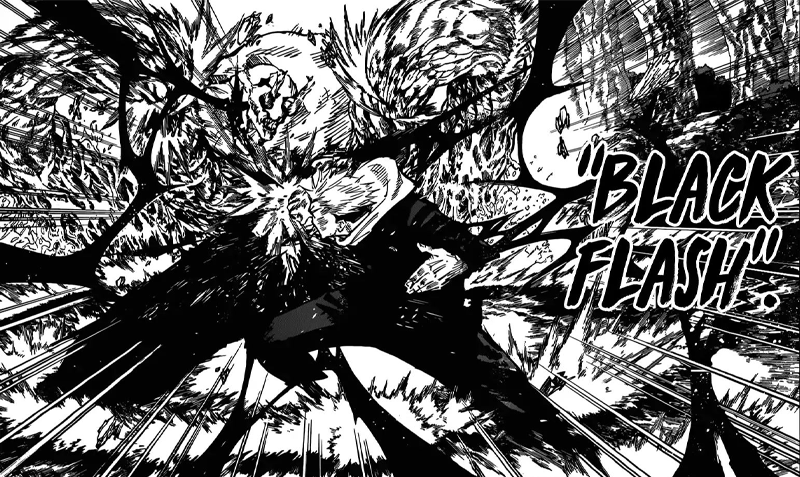
What makes it even more interesting is the appearance of special grade curses in its later half.
While the Kyoto Goodwill arc is often overshadowed by Jujutsu Kaisen’s other arcs, I still consider it amongst the best tournament arcs in manga. It features fantastic fights, introduces the bromance between Yuji and Todo and we finally see how powerful Gojo truly is.
Heavens Arena – Hunter x Hunter
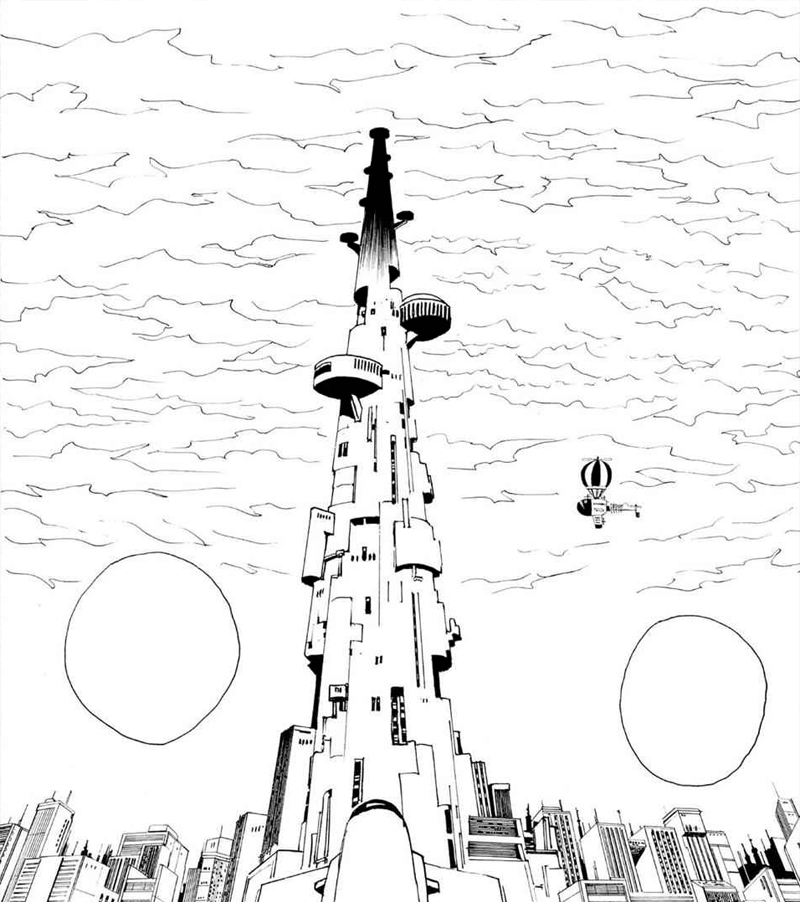
Hunter x Hunter’s official second arc introduces us to the Heavens Arena. It’s a giant tower comprising 251 floors and essentially a giant martial arts tournament in which the winner may climb to higher floors.
Gon and Killua decide to partake in its battles to earn some money.
The Heaves Arena isn’t your typical tournament arc. While we’re showcased some of the earlier fights, most of them happen off screen.
When Gon and Killua reach the 200th floor, however, they encounter an invisible wall they can’t seem to overcome. Even worse, Hisoka’s there and tells them they aren’t ready yet to set foot in that place.

What blocked them was Hisoka’s Nen, namely Hunter x Hunter’s complex system of super powers. And so Gon and Killua learn its intricacies.
Heavens Arena is more a development arc than anything else dedicated to introduce readers to the Nen system. Yet it also offers some fantastic fights, the best of them without a doubt the confrontation between Gon and Hisoka.
While the Heavens Arena arc isn’t amongst Hunter x Hunter’s best arcs, it’s amongst its most important. For this and its fights alone, it deserves to be added to this list of the best tournament arcs in manga.
Corrida Colosseum Tournament – One Piece
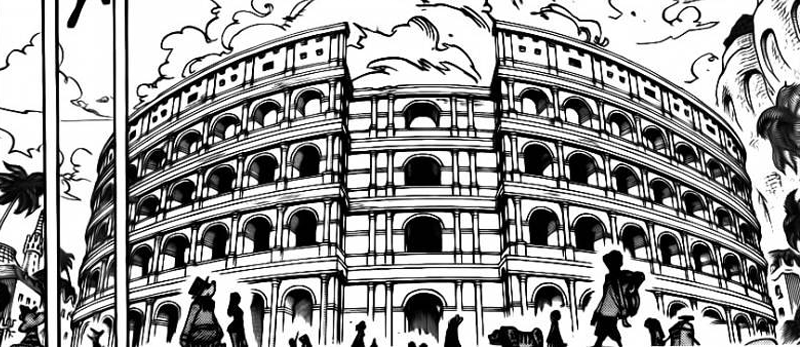
I’m not the biggest fan of One Piece. There are few arcs I truly enjoyed, but amongst them is the Corrida Colosseum Tournament.
While it’s only a small part of the Dessrosa arc, I still consider it one of the best tournament arcs in manga. One can’t also deny its importance to the plot. It features a variety of different characters, some returning, some new, but also introduces us to Sabo.
The Corrida Colosseum Tournament is a gladiator-like tournament organized by the Donquixote Family. The winner’s supposed to take home the Mera Mera No Mi, the devil fruit once belonging to Luffy’s brother Ace. Luffy, in disguise, promptly joins the battle to take it back.
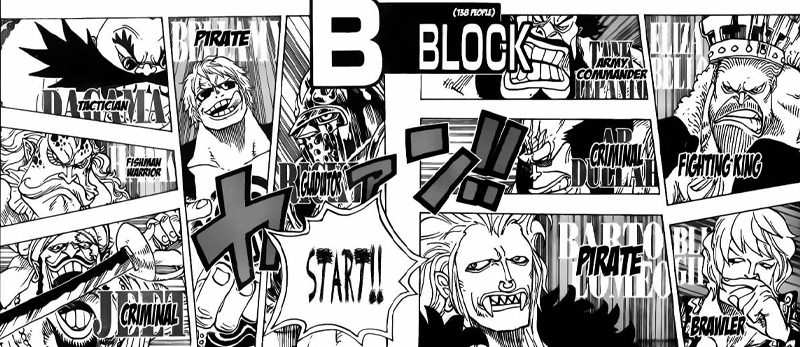
It’s a fantastic opening to the Dessrosa arc and for what’s coming later. While Luffy’s a powerhouse and wins most fights easily, there are some that are more serious and interesting.
The greatest part, however, and what makes it one of the best tournament arcs in manga aren’t the fights, but the impact of the tournaments end.
Ragnarok – Record of Ragnarok
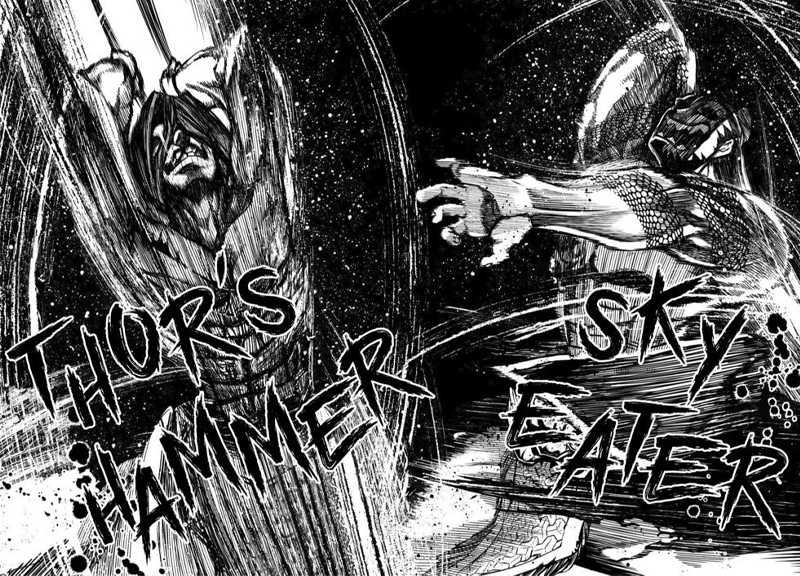
Record of Ragnarok is the first manga on this list that centers on a single tournament, one called Ragnarok.
It’s a competition that pits humans against gods in thirteen one-on-one fights to the death.
The tournament’s nothing short of a battle for the fate of humanity. If men lose, they are extinguished. Should they win, they will get to live for another thousand years.
This alone makes Ragnarok a worthy addition to this list of the best tournament arcs in manga.
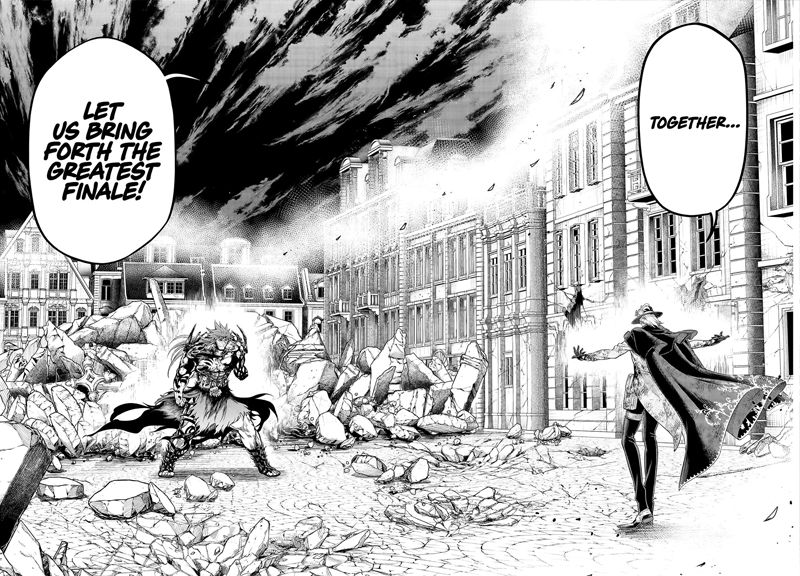
Interestingly enough, the manga reserves long stretches to introduces us to and tell us the backstory of all its competitors.
While all the fights in this manga are thrilling, some are better than others. The best of them are full of twists, turns and exciting developments, often making their outcome entirely unexpected. The standout amongst all of them, the fight between Jack the Ripper and Hercules.
If you’re a fan of tournament arcs or manga centering on tournaments, read Record of Ragnarok.
Super Fight Tournament – One Punch Man

One Punch Man is a fantastic manga. While it’s considered a gag manga, it comes with some of the best action and art in the entire medium.
All the while, One Punch Man pokes fun at a variety of clichés, tropes and scenarios common in manga.
It was only a matter of time until it would include its very own tournament arc.
Under a false name, and disguised by a wig, Saitama takes part in the tournament. He wants to win the prize many, but also experience some real martial arts.
Knowing Saitama’s power, however, all his fights are over in a heartbeat.
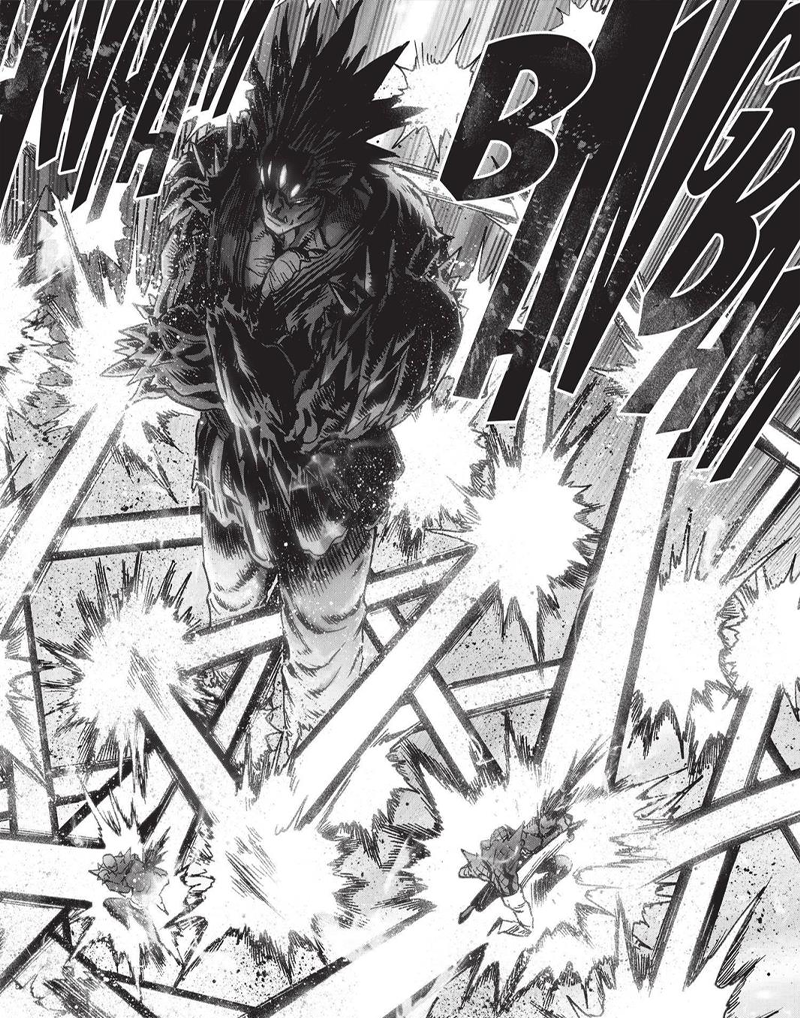
Eventually, he’s pitted against Suiryu, an extremely powerful martial artist. Yet while Suiryu unleashes insane technique after technique, the fight goes exactly as one would expect, but culminating in a result as ridiculous as typical for One Punch Man.
The true final of the arc, however, introduces us to Gouketsu, an extremely powerful monster who crashes the tournament and forces the fighters to either die or become monsters. While some are quick to agree, others, including Suiryu, chose to fight back.
One Punch Man’s Super Fight Tournament has a distinct filler feel to it and doesn’t even shy away showing how underwhelmed Saitama’s by all of it. Yet for Suiryu’s fight against Saitama and consequently Gouketsu alone, it deserves its spot on this list of the best tournament arcs in manga.
The Holy Grail War – Fate/Stay Night
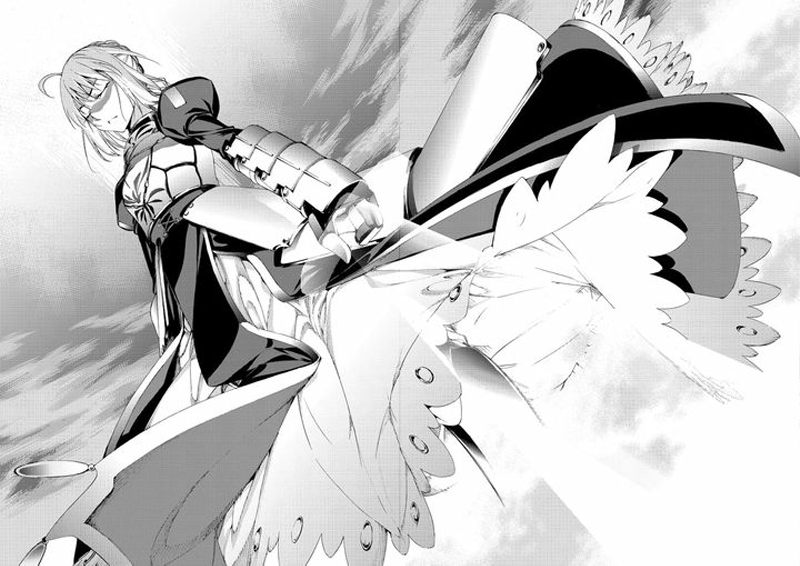
Fate/Stay Night is another manga centering on a single tournament, the Holy Grail War.
It’s a battle royal in which sorcerers summon powerful servants to fight for them. Many of these servants prove to be historical figures or fictional heroes, like Sasaki Kojiro or Merlin. The fights continue until only one sorcerer-servant pair’s left standing. This pair well then be granted the chance to wish upon the Holy Grail.
Shirou Emiya has no talent for sorcery, but when he accidentally summons one of the strongest servants of all, he becomes a participant in the Holy Grail War.

Fate is an amazing manga full of fantastic over-the-top fights. Even more interesting, however, each character, be they sorcerer or servant, has their own motifs and is well developed.
It’s a story full of betrayals, twists, but most of all, stunning fights.
While its story doesn’t always make sense and its lore is quite complicated, Fate/Stay Night is more than worth reading. The Holy Grail War is, without a doubt, amongst the best tournament arcs in manga.
Ura Buto Satsujin – Flame of Recca
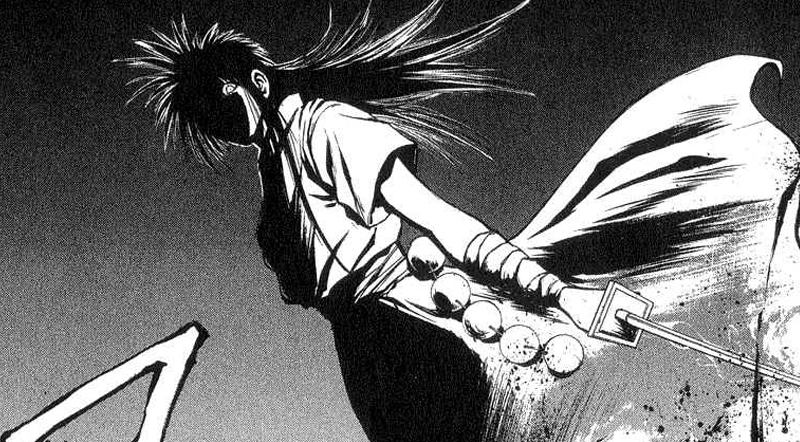
Flame of Recca’s an older series, but it’s definitely worth reading for fans of tournament manga.
It centers on the character of Recca Hanabishi who’s got the innate ability to control fire and wants to be a ninja.
He pledges to protect a kind girl named Yanagi Sakoshita, who herself has the power to heal injuries. This soon brings her to the attention of Koran Mori, who’s on a quest for immortality.
Flame of Recca truly shines during its third act, the Ura Buto Satsujin, a tournament organized by no other than Koran Mori in which Recca and his friends are forced to take part.
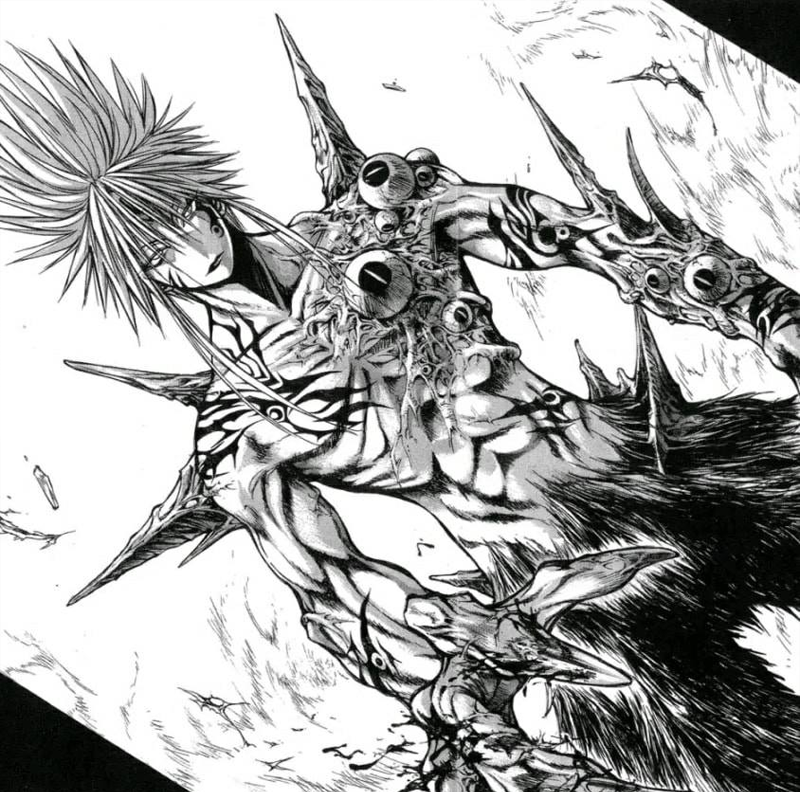
While Flame of Recca isn’t a bad manga, it truly comes to shine during the Ura Buto Satsujin. During this tournament, our protagonists are pitted against a variety of supernatural and dangerous adversaries.
The battles comprising this tournament arc are nothing short of amazing. They are suspenseful, but also allow each member of the cast to shine in their own way.
While Flame of Recca is an older series, the Ura Buto Satsujin is amazing and one of the best tournament arcs in manga.
Battle City – Yugioh

Yugioh’s a manga that features its fair share of tournaments. While the Duelist Kingdom’s a fan favorite, one can’t deny that the Battle City tournament is by far its best arc.
It’s a city-wide battle royal held by no other than Seto Kaiba. It features battles across the entire city, featuring a variety of different characters, both new and reoccurring.
What makes Battle City so memorable and one of the best tournament arcs in manga’s not only the introduction of the three Egyptian God cards but also its battles.

Battle City features some of the best battles in Yugioh. There’s of course the battle between Yugi and Kaiba, but also the fantastic one between Yugi and Dark Bakura.
The Battle City arc is essentially an evolution of the Duelist Kingdom arc. It features more mystical cards, various new items and traps and, of course, amazing new characters.
Battle City’s not only Yugioh’s greatest arc but also one of the best tournament arcs in manga.
Royal Knights Selection – Black Clover
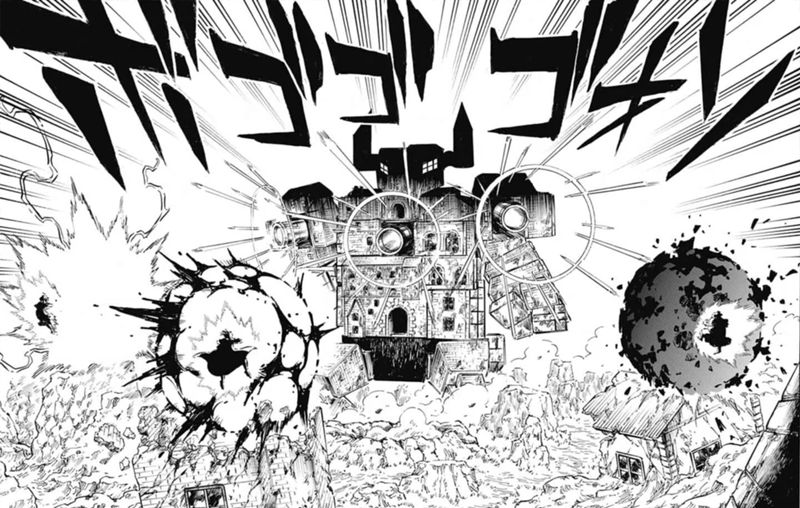
Black Clover’s another amazing shonen manga. While its story isn’t the deepest, it makes up for it with its amazing battles.
Black Clover features its fair share of tournament-like battles, but the best one of them is the Royal Knights Selection.
To fight the threat of the Eye of Midnight Sun, Wizard King Julius of the Clover Kingdom organizes a tournament. The winners will be declared the official Royal Knights.
In this tournament, the participating Magic Knights are grouped into teams of three. They now must not only protect their respective crystals but also be the last one standing.
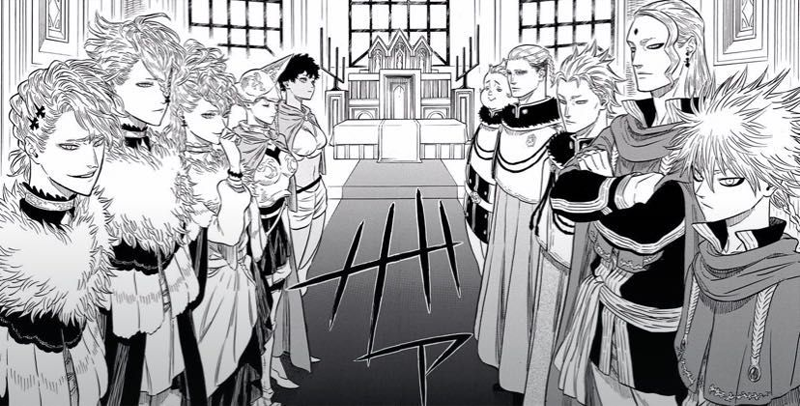
It’s an amazing tournament arc full of fantastic battles. What’s even more interesting, however, is to see how characters grow throughout the tournament and how they learn to work together. While Asta stands out as a surprising underdog, the greatest fight is that between Langris and Finral.
The Royal Knights Selection also stands apart from other similar arcs for featuring a wide variety of characters and abilities. Not everyone’s overpowered and not every ability’s purely offensive. It helps to make fights both more gripping and more interesting.
It’s without a doubt amongst the best tournament arcs in manga, culminating in some of the series’ best and most exciting fights.
UA Sports Festival – My Hero Academia
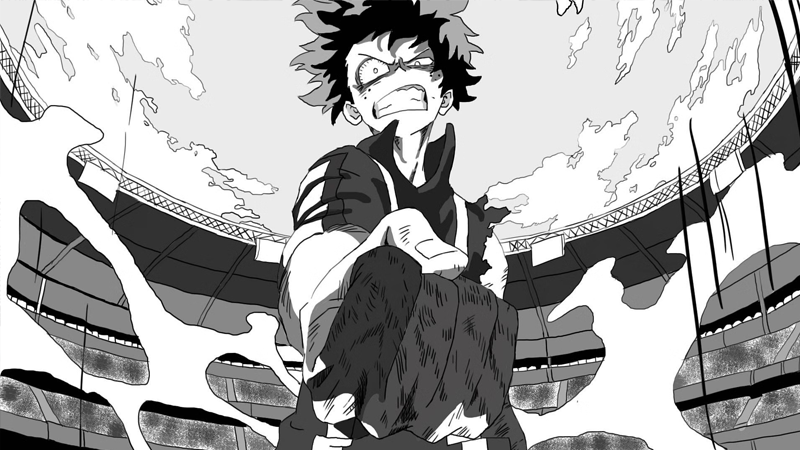
My Hero Academia is one of the most popular modern shonen manga. It’s a typical zero to hero story, but set in a world of superheroes.
While its story is rather typical, it makes up for it by its characters and its amazing battles.
The UA Sports Festival is amongst its best arcs. It’s an annual event held at the UA High School and pits students from different grades against each other in a variety of competitions.
It features not only obstacle courses and team-based battles, but also one-on-one fights between students.

The team-based battles allowed for many of the side-characters to shine, but also showcased how quirks can be used depending on the situation.
The arc’s highlight was, of course, the fight between Midoriya and Todoroki. It’s not only one of the manga’s greatest but also comes with some fantastic character development for Todoroki. We not only learn about his dark backstory but also the reason for the issues he has with his father.
The UA Sports Festival is clearly amongst the best tournament arcs in manga and gives us one of the most amazing and unforgettable fights in all of My Hero Academia.
Maximum Tournament – Baki
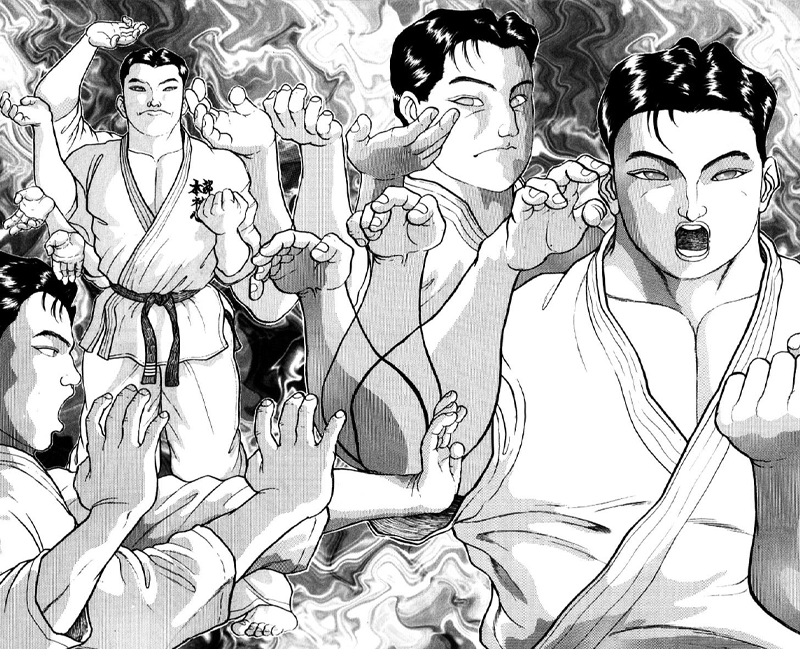
Baki’s another manga series full of tournaments. The best of them, however, is the Maximum Tournament.
As one of its earlier arcs, the art isn’t as good as in later installments of the series. The fights, however, are amazing throughout the tournament and amongst the best in the entire series.
The Maximum Tournament introduces us to a variety of characters, many of which should become members of the main cast. Two notable examples are Retsu Kaioh and Jack Hanma, both of which have fantastic fights against Baki.
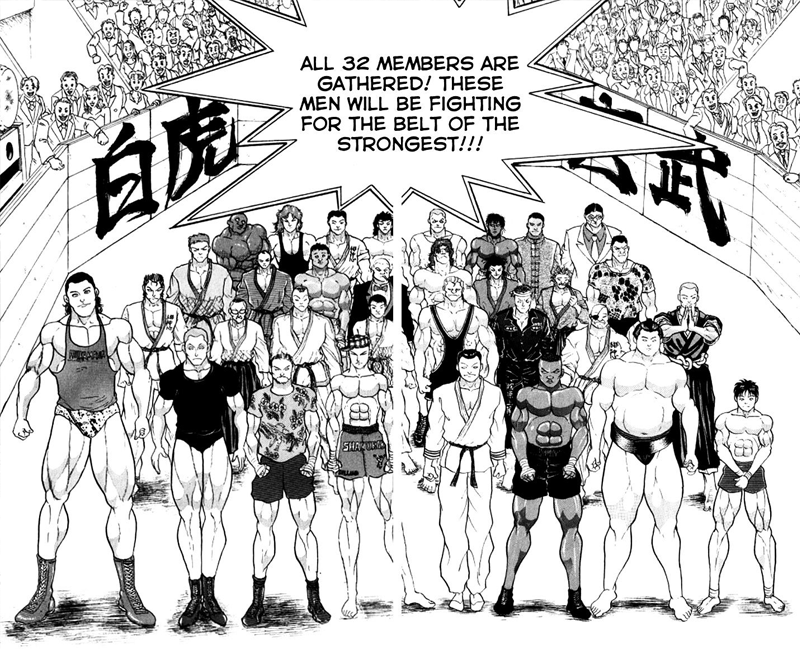
What makes the Maximum Tournament one of the best tournament arcs in manga is that it’s a pure martial arts tournament. There’s no Ki, no magic and no energy blasts. This being Baki, of course, many of the martial arts techniques are over-the-top and the fights are extremely brutal.
These fights are all unique because each fighter uses different martial arts and techniques.
Overall, the Maximum Tournament is without a doubt one of the best tournament arcs in manga and probably the best in the entirety of Baki.
Kengan Annihilation Tournament – Kengan Ashura
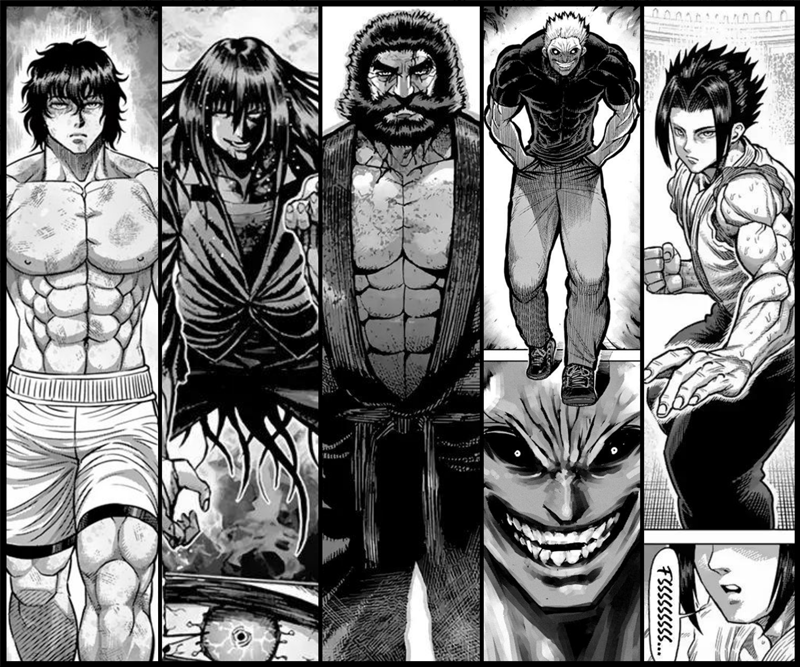
Kengan Ashura’s another manga dedicated to a single tournament.
In the world of Kengan Ashura, all Japanese business deals are decided by martial arts matches. Overseeing those matches is the Kengan Association.
Ohma Tokita becomes a fighter for the Nori group. After a brief introduction, we witness Ohma partaking in a few matches before the Kengan Annihilation Tournament is announced.
Anyone who likes shonen battle manga and tournament arcs will love Kengan Ashura.

The Kengan Annihilation tournament features 32 fighters who all have different motifs, personalities, and fighting styles. Over the course of the manga, we also learn each character’s individual backstory.
The fights in Kengan Ashura are nothing short of amazing, brutal and over-the-top and come with some of the best art in the entire medium. It’s hard to pinpoint a single fight that’s not great.
While the story has its twists and turns, it never strays from the original idea of a giant martial arts tournament.
If you’re a fan of battle shonen and tournament arcs, read Kengan Ashura. The Kengan Annihilation Tournament truly deserves its place on this list of the best tournament arcs in manga.
22nd World Martial Arts Tournament – Dragonball
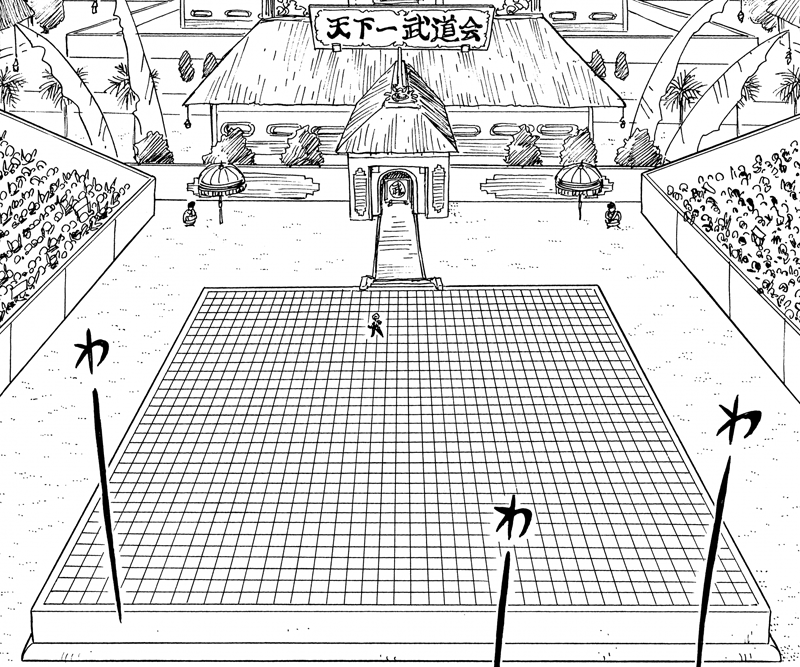
As the father of modern shonen manga, Dragonball established many of shonen’s most common tropes. While it wasn’t the first manga to feature a tournament arc, it helped popularize them.
Dragonball features a variety of tournaments throughout its long run, but the best by far has to be the 22nd World Martial Arts Tournament.
Set shortly after the Red Ribbon arc, it introduces us to two new, major characters, namely Tien Shinhan and Chiaotzu.
The fights in this tournament are amazing and amongst the best in all of Dragonball. Be it Tien vs. Yamcha, Krillin vs. Son Goku or the final which pits Tien against Son Goku. They are all gripping and nothing sort of fantastic.
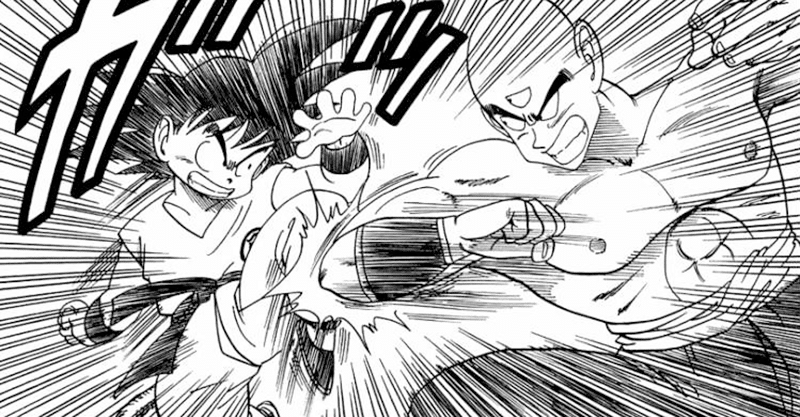
The 22nd World Martial Arts Tournament can be seen as an evolution of the preceding 21st one. While the 21st features quite a few gag battles, the 22nd felt much more mature and centered much more on fantastic action-packed battles.
Interestingly enough, the sake of the tournament is just that, the tournament and to decide who’s the strongest. Later tournaments, even the 23rd World Martial Arts Tournament, all had bigger stakes and were more important to the story. However, the impact of individual fights was often much less felt.
The 22nd World Martial Arts Tournament is one of the best tournament arcs in manga, amongst the best arcs in all of Dragonball and features some of the series’ greatest fights.
Dark Tournament – Yu Yu Hakusho
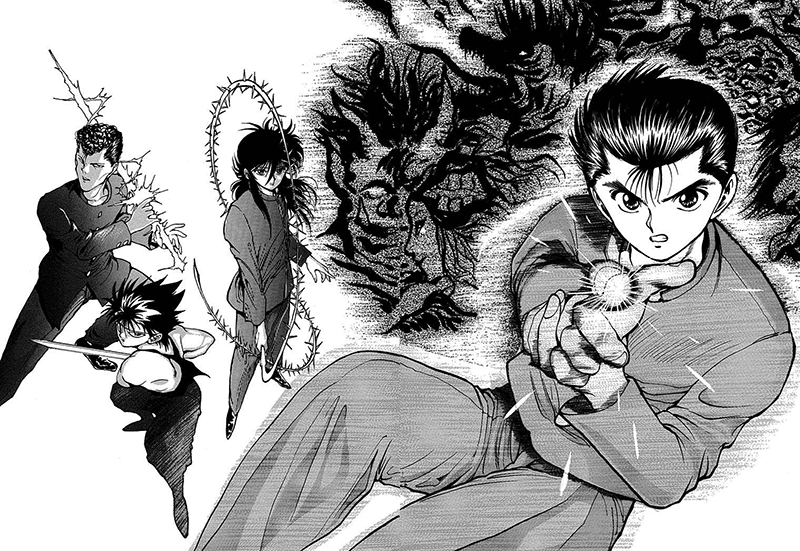
What’s there to be said about Yu Yu Hakusho’s Dark Tournament? It’s one of the best tournament arcs in manga, if not the best.
It’s a competition organized by rich humans, featuring teams of demons battling against each other. At the end of the tournament, the winning team is granted any wish. The contestants comprise the vilest and most violent demons.
Amongst them, the series’ greatest villain, Toguro.
Yosuke and friends are forced to partake in the tournament by no other than Toguro himself. In each round, they have to fight teams of stronger and stronger enemies before they eventually have to take on Team Toguro.

The Dark Tournament has it all. It features well-written characters, great action, and fantastic fights. Interestingly enough, each single fight in this manga stands apart from the rest, given how unique they are.
We also witness many of the manga’s characters finally unleashing the full extent of their powers. Hiei uses his Dragon of Darkness Flame and Kurama his death plants. Especially Kuwabara shines, and proves once and for all that he’s a force to be reckoned with.
The greatest fight, however, has to be the final between Yosuke and Toguro. With each chapter, we witness as Toguro morphs himself into a stronger and more outlandish version of himself.
The Dark Tournament is truly one of the best tournament arcs in manga, featuring one of the medium’s best villains and some of its greatest fights.
Chunin Exam – Naruto
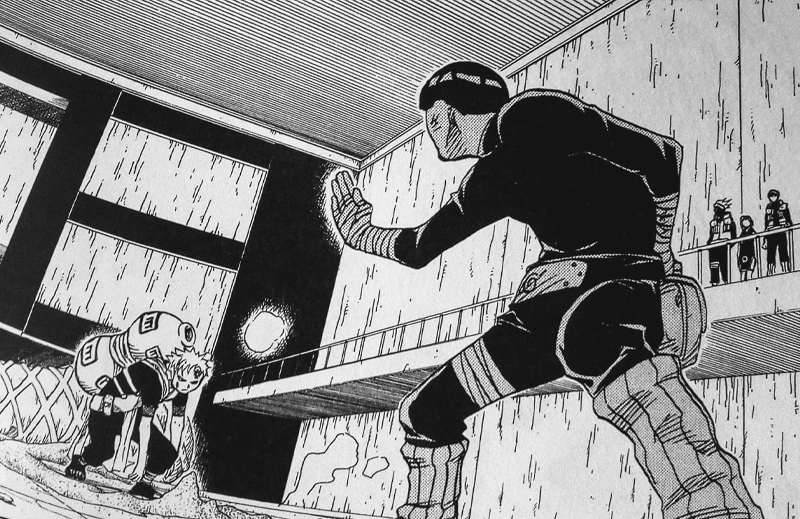
Naruto’s one of the most popular manga of all time. Almost everyone has heard of the story about the young underdog ninja who wants to become Hokage.
While the series suffered in its later half when it became more reminiscent of Dragonball Z, its earlier parts were absolutely amazing.
The focus was on hidden techniques, hand signs, subtlety, finesse and, of course, ninja arts.
The culmination of all these elements was the Chunin Exam, probably the best tournament arc in manga. It’s an arc that came to define the series.
When Genin want to rise in rank and become Chunin, they have to pass a variety of different challenges. From written exams, to one-on-one fights, and even the survival in the Forest of Death, this arc has it all.
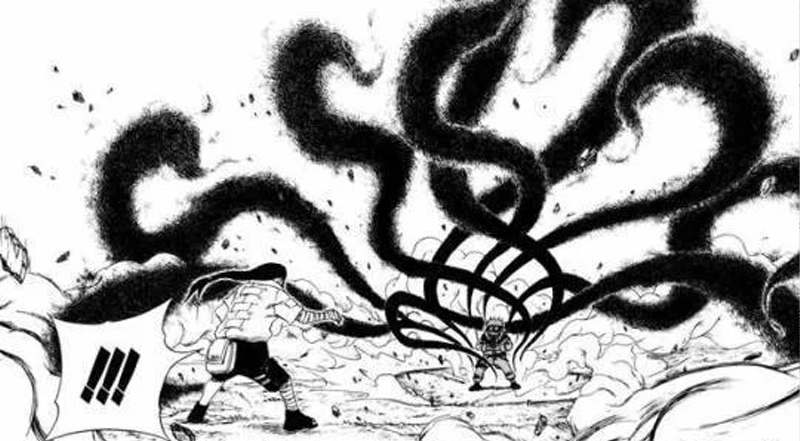
The greatest thing about the arc is its focus on each individual member of the cast. They all get their time to shine. We see their unique techniques, but also learn more about their personalities.
The Chunin Exam also features some of Naruto’s greatest fights, notable the one between Rock Lee and Gaara, but also the ones between Sasuke and Gaara and Naruto and Neji. All of them are nothing short of amazing.
The arc also vastly expands and fleshes out Naruto’s world, sheds more light on the Jinchuriki and introduces us to Orochimaru. It even foreshadows Sasuke’s eventual decision to abandon his village and become a rogue ninja.
The Chunin Exam is an absolutely fantastic arc and the best tournament arc in manga. It’s engaging, full of brilliantly choreographed fights, character-development and introduces some of the manga’s greatest characters.
15 Martial Arts Manga Any Fan Should Read
Over the years I’ve read countless manga. While my favorite genres remain horror, thriller and science-fiction, I’ve always had a weak spot for marital arts manga. There something about brutal martial arts fights that I can’t help but get pumped up about.
While the plot in martial arts manga is often simpler than those in other manga, they make up for it by stunning fights. These fights are often fantastic, at times brutal, and showcase a variety of techniques that might or might not be realistic.
For this list, I focused on a variety of manga that feature martial arts in one way or another, and which I enjoyed over the years. I decided, however, not to include samurai manga since I feel those are deserving of a list of their own.
I’d also like to give a spoiler warning. While I’m trying not to give away too much about a manga’s plot, it’s sometimes unavoidable. So here are fifteen martial arts manga any fan should read.
If you’re looking for more manga recommendations, check out my list of the best horror manga, best seinen manga and best shonen manga.
Over Bleed

Over Bleed is a relatively know, relatively short martial arts manga I came to enjoy.
The manga’s plot is relatively simple. Nishijima Kei’s being bullied at school. When he can’t take it anymore, he and his best friend Akira, decide to commit suicide. Kei, however, survives.
A year later, he discovers a website named Over Bleed. The site centers on bloody street fights. On this site, he witnesses a fighter named Bunen who bears a striking resemblance to Akira. Desperate to meet his friend again, he begins participating in fights himself. From here on out, he fights stronger and stronger opponents, hoping to eventually meet Bunen.
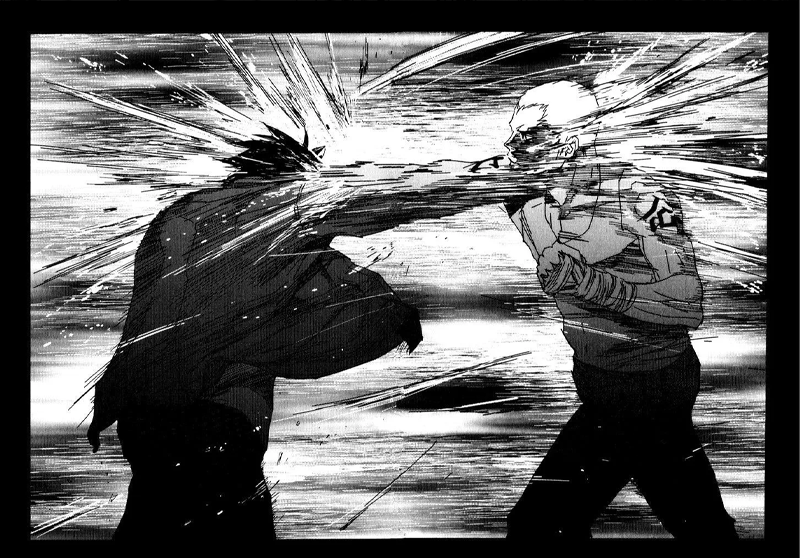
Over Bleed’s art is amazing. Its fights are extremely realistic, but also dirty, aggressive and desperate. Kei uses anything to fight, and any means to win. He doesn’t shy away from biting, cheap shots or even using weapons to beat his opponents.
At twenty-five chapters, Over Bleed is relatively short, but it’s long enough to tell the story it wants to tell. What’s great is that it dedicates all of these chapters to Kei’s storyline alone. There are no side plots, no filler chapters, nothing.
The only problem with Over Bleed is the ending. It felt somewhat rushed and rather anticlimactic.
Still, Over Bleed is a great, short martial arts manga that probably not many people have heard about. If you like martial arts, and especially street fights, read Over Bleed.
Ranma 1/2
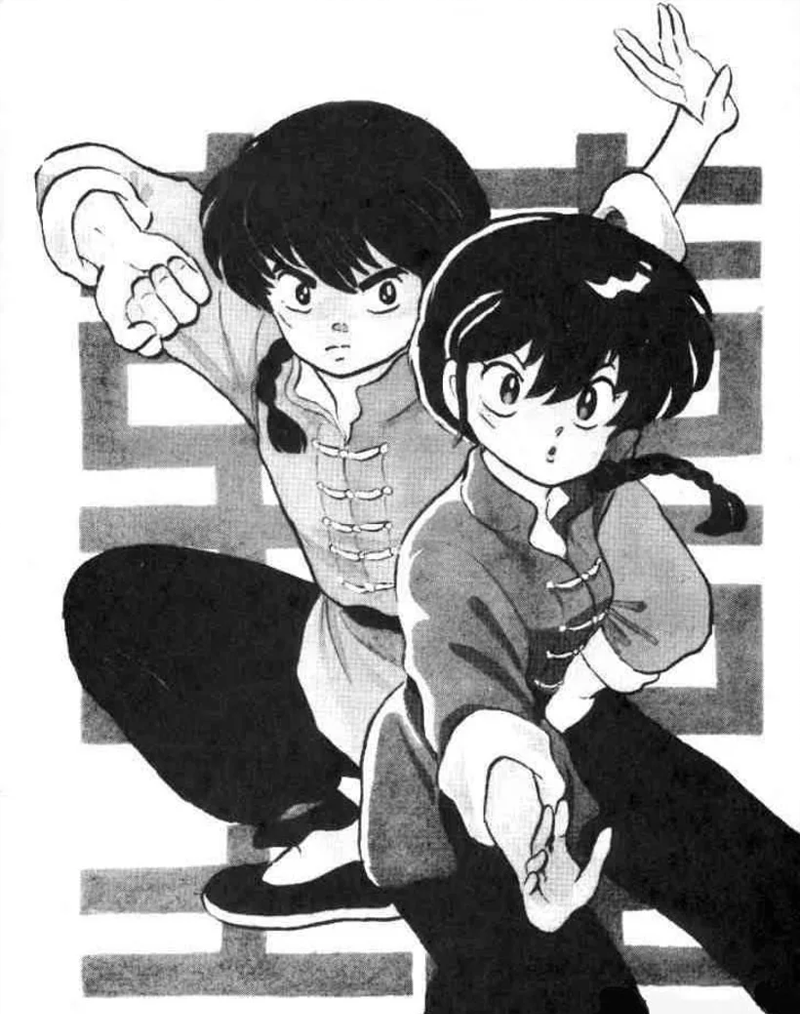
Ranma 1/2 is an older martial arts manga which is equal parts action, comedy and romance. It centers on the character of Ranma Saotome.
We meet the Tendou family. One day, father Soun informs his three daughters that one of them is to marry his best friend, Genma Saotome’s son Ranma.
Unbeknownst to them, the two of them recently traveled to China to train their martial arts. After an unexpected accident, however, the two of them have become cursed. Whenever they come in contact with cold water, their bodies change. Genma turns into a panda while Ranma turns into a girl.
Ranma gets betrothed to Akane, the youngest of the three Tenma sisters. Before long, various rivals appear and challenge him to a fight. Some out of revenge, others to win Akane’s love and break of her engagement to Ranma.

Ranma 1/2 is an episodic manga and more a collection of various stories featuring the same characters and the same setting.
It features both, explosive fights full of action, but also scenarios that are utterly hilarious, often caused by Ranma changing into a girl.
The manga’s cast is full of characters as weird as they are likeable. None of them are normal people. They are all over-the-top and defined by character traits as strange as they are hilarious.
The only problem I had with Ranma 1/2 was Akane. She’s one of the earlier examples of the so-called Tsundere trope, a trope I came to dislike immensely.
With 400 chapters, Ranma 1/2 is a long manga. Yet, there’s no real character or plot development. It might be a point of contention, but it never bothered me much.
Overall, Ranma 1/2 is a martial arts manga that’s fun and, at times, absolutely hilarious.
History’s Strongest Disciple: Kenichi
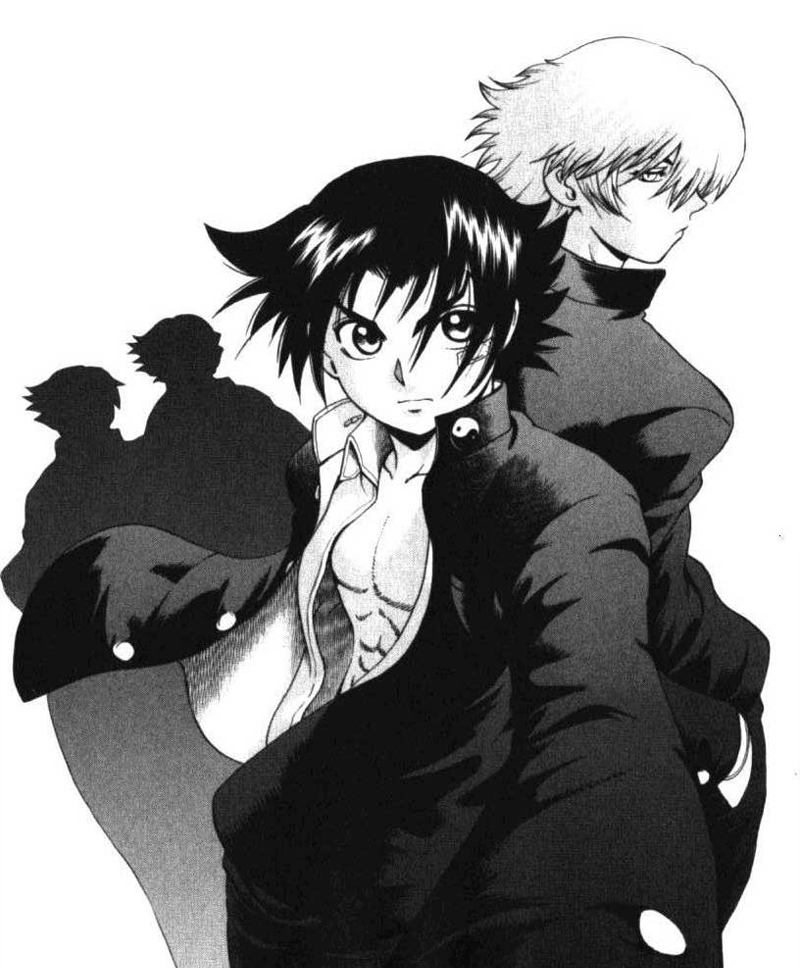
History’s Strongest Disciple: Kenichi’s as typical as a shonen martial arts manga can be. It’s a zero to hero story following Shirahama Kenichi.
Kenichi’s a weak kid who’s constantly bullied. Wanting to get stronger, he joins the karate club only for his miseries to continue and being forced to quit the club.
He’s helped by the beautiful transfer student Fuurinji Miu, who eventually invites him to Ryozanpaku, her home where the strongest martial arts masters gather. Soon enough, they take Kenichi under their wing and train him in martial arts. As Kenichi grows stronger, he soon draws the attention of various adversaries.
History’s Strongest Disciple: Kenichi’s one thing most of all, fun. Fights are often well done and gripping, characters are interesting and it doesn’t take itself too serious.

Yet, the manga has its problems. The first is the plot’s repetitive nature. Early on, Kenichi fights a delinquent group called Ragnarok. Once they are defeated, however, another, stronger faction sets their sights on him. This premise repeats itself for the manga’s entire run.
Another problem’s the tired trope of enemies becoming friends. Almost every bad guy turns out to be good and befriends Kenichi after their defeat.
Character development’s barely existent. Sure, characters grow stronger, but other than that, they don’t change much.
The most annoying part about History’s Strongest Disciple: Kenichi’s the fan service. The manga’s full of it. Every female character’s attractive, shown in overly-revealing clothes or poses, or, at times, almost completely naked.
For all its faults, however, History’s Strongest Disciple: Kenichi’s a decent martial arts manga featuring a cast of likeable characters and some great action.
Feng Shen Ji
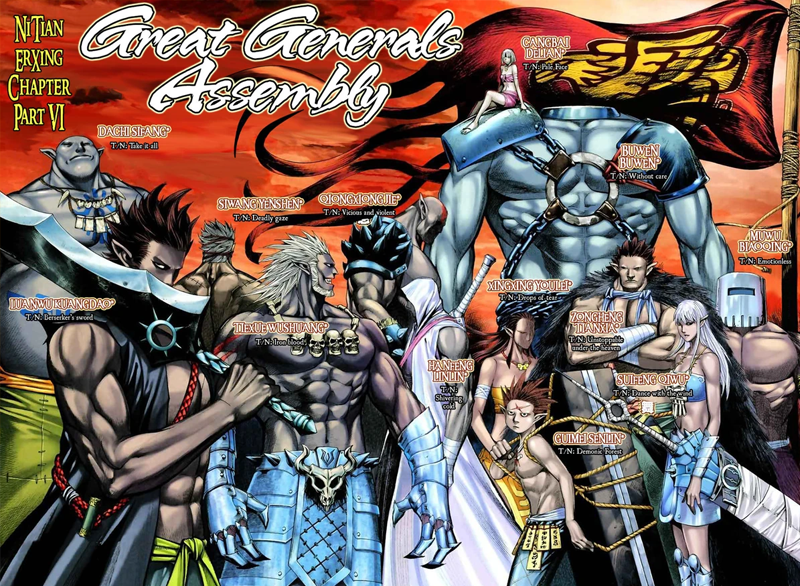
Feng Shen Ji’s a manhua inspired by Chinese mythology and set in a land reminiscent of ancient China.
One day, a messenger delivers a divine verdict to Emperor Zi Zhou of the Shang dynasty. He’s to invade the neighboring lands on behalf of the gods. When the emperor defies them, the gods become enraged, send a rival kingdom to invade Shang and take care of the emperor personally.
The manhua’s main character is Wu Geng, the emperor’s son. After miraculously being revived after his homeland’s destruction he vows to have revenge against the gods.
Wu Geng starts out as weak, arrogant and selfish to the point of being unlikeable. After the first act, however, he’s grown into someone the reader can actually root for.
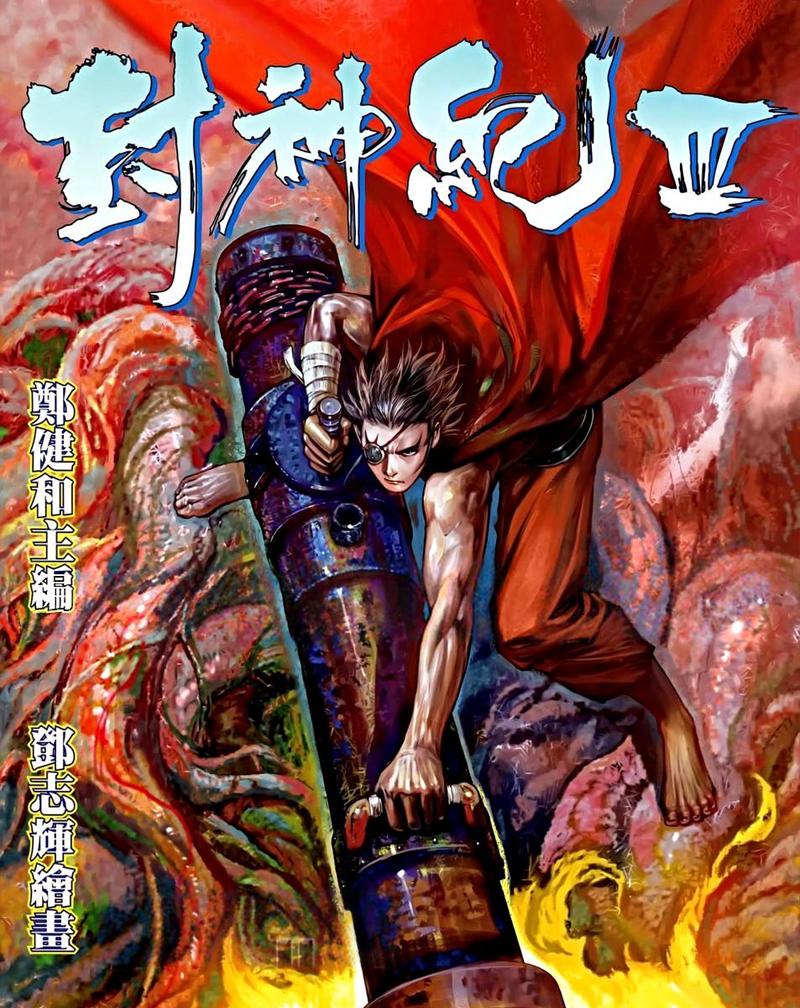
Feng Shen Ji’s high point is the fantastic art which comes in stunning full color.
As a battle manhua it features a lot of battles, and they are gorgeous to look at. Especially the gods look nothing short of amazing. Their design is both divine and villainous at the same time.
Feng Shen Ji isn’t free of its problems, however. Its world-building feels all over the place. It’s a mad mixture of divine powers, gods, and various creatures from mythology and fantasy.
The biggest problem however, is the writing. The story never strays from its premise of revenge against and freedom from the god’s oppression. There are no unexpected developments, no twists or turns.
The same can be said about the characters. Character development is surface level at best. Even worse are the many side-characters. Many of them are nothing more than arch-types.
Still, if you’re looking for a fantasy martial arts story with gorgeous art, and lots of stunning battles, give Feng Shen Ji a try.
Shamo
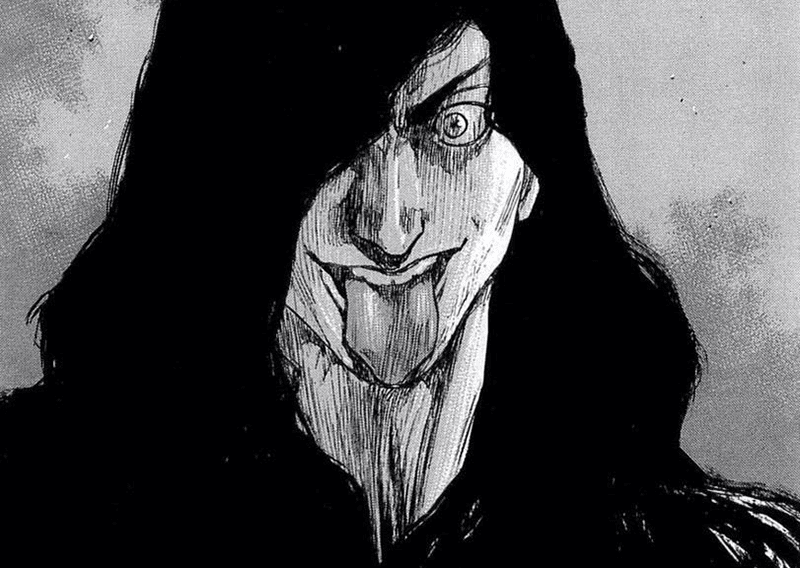
Shamo’s a martial arts manga that differs quite a bit from others. In this story we don’t follow a good guy, but rather a villain.
At age sixteen, high school student Ryo Narushima murders both his parents and is sent to a reformatory. There he meets Kenji Kurosawa. He’s a karateka who quickly recognizes Ryo’s talents and teaches him self-defense.
After two years, Ryo’s released because he was a minor at the time of his crime. Having experienced countless hardship in prison, he vows to gain strength and never be a victim again.
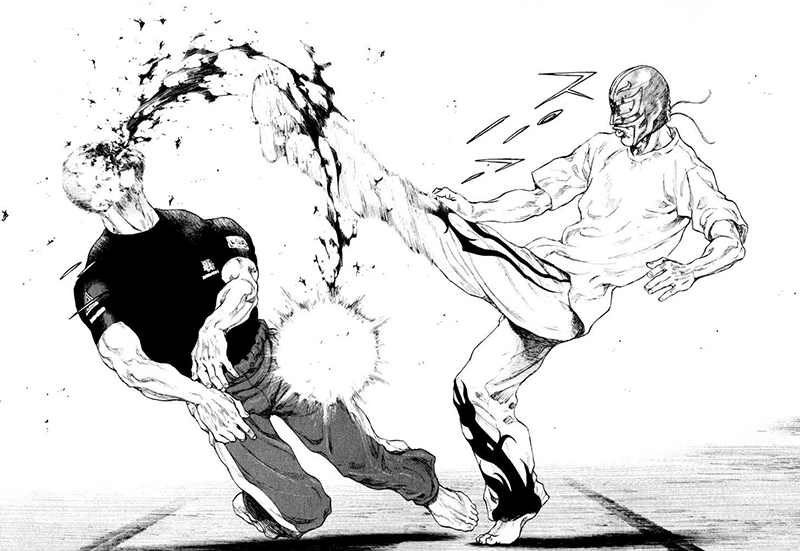
His time at the reformatory, however, has changed Ryo. He’s become a deprived and despicable character. When he’s forced to fight, he fights dirty, and he does anything to get money. This type of life, however, isn’t glamorized in Shamo. Ryo has almost no real friends, and what few acquaintances he has are trying to take advantage of him. The manga, however, begs the question what he can do about it. He’s a criminal, a murderer, and those are seldom given a second chance.
The art in Shamo’s good, but not outstanding. It comes with a gritty and realistic style, however, that lends itself perfectly to a dark story as this.
In the manga’s later half, this dark story takes a step back. The manga stops being a story about Ryo’s predicaments, and instead focuses on such concepts as Ki, or sword fighting. It makes Shamo’s second half a rather flawed experience.
Shamo’s a manga that starts out great, and its first half presents us with unique and dark martial arts manga. It’s second half, however, is nowhere near as good as what came before.
City of Darkness
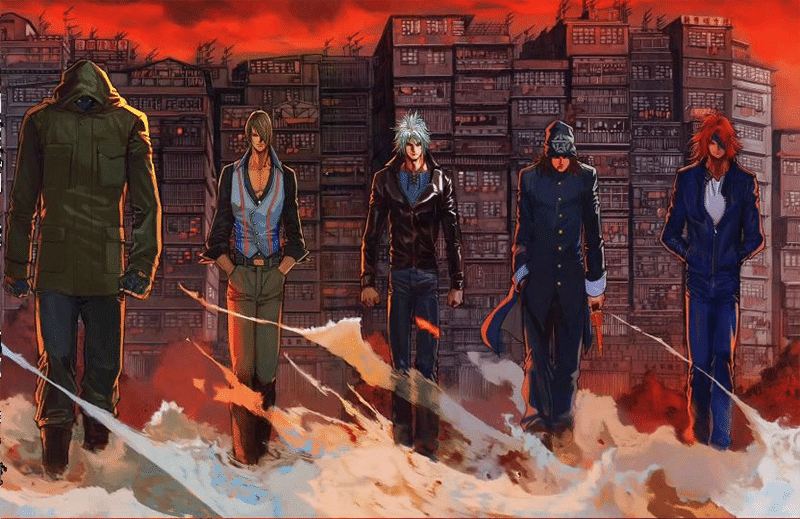
City of Darkness is another manhua, but it still deserves its place on this list of martial arts manga.
One day, Chen Luo Jun, a member of the triads, is betrayed by his boss and loses everything. Not knowing what to do, he sets his sight on Kowloon Walled City, the titular City of Darkness. As the story continues, he meets new allies, fights stronger enemies and slowly makes a name for himself.
City of Darkness stands apart from other martial arts manga by its fantastic, colorful art. When City of Darkness is at its best, few other works can compare. As an action manhua, City of Darkness is full of fights, many of which are suspenseful and rendered in gorgeous detail.
While City of Darkness exceeds in presentation, it suffers from a share of other issues.
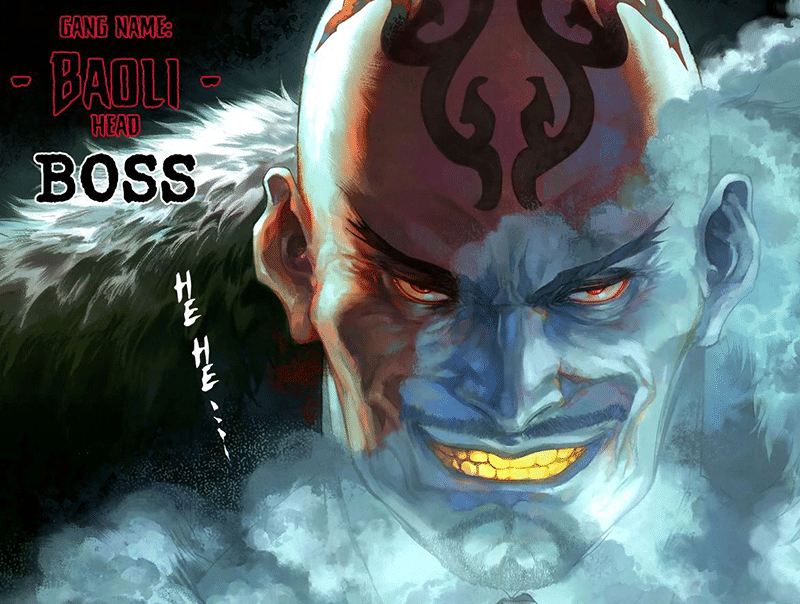
One of the biggest is the trope of friends becoming enemies. Each of City of Darkness’ arcs introduces us to a new antagonist. Once they are defeated, however, we learn of their backstory, that they’ve been good guys all along, and they join the main cast. It lessens the emotional impact of the preceding arc and feels rather cheap.
The way the story is told is another big problem. Large parts of City of Darkness’ story aren’t shown by visuals, but are explained to us by narrative voice.
The biggest issue by far, however, is the story’s pacing. At times, City of Darkness is slow and almost grinds to a halt before it goes into overdrive. Many times, we’re thrown right back into the action, into a new fight, without even knowing what’s going on.
Still, I had a blast reading City of Darkness. As an action manhua, its focus is on action and fights, and in that regard it delivers incredibly well.
Battle Angel Alita
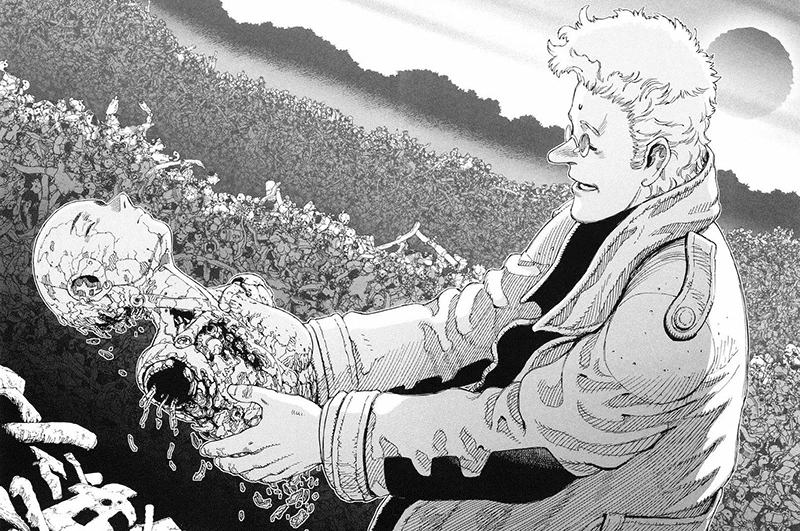
Battle Angel Alita’s for and foremost a cyberpunk, science-fiction manga, but it also includes its fair share of martial arts, namely in the form of Panzer Kunst.
One day, the scientist Ido discovers the remains of a cyborg girl and takes it upon himself to restore her. He names her Alita and gives her a new body.
Over the course of the manga, we follow Alita as she finds her way in this new world. She battles various adversaries and develops from an innocent, childlike character into a badass.
The manga’s setting is a post-apocalyptic world, prominently the gritty town of Scrapyard. It’s a mad cluster of machines, factories and rubble, populated by criminals and cybernetic freaks.
Battle Angel Alita’s art shines most during the various battles, many of which include the aforementioned martial art Panzer Kunst. The most notable of those is the fantastic motor ball arc.

The best part about the manga, however, is Alita herself. The manga doesn’t so much focus on an overarching plot, but on Alita finding herself. Deeper themes, such as learning who you are, or the meaning of life are also discussed.
While Scrapyard and many other locations in this manga are gorgeous to look at, the character design can be rather unrefined. Many of the cyborgs and robots we encounter throughout the story have a certain cartoonish look to them.
Alita, too, can be problematic. Over long stretches of the manga she acts immature and arrogant.
Still, Battle Angel Alita’s a great cyberpunk, science-fiction manga, but also one that’s very fitting for this list of martial arts manga. If you’re a fan of not only martial arts, but also cyberpunk and science-fiction, read it.
Naruto
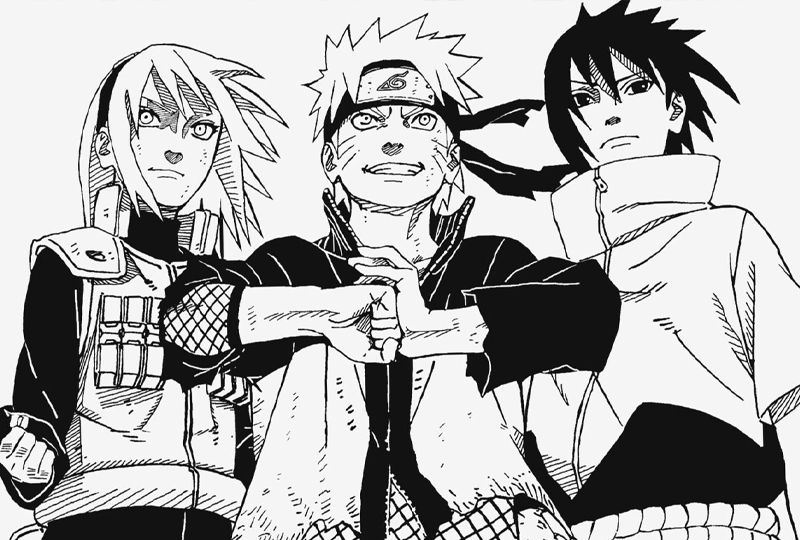
Anyone interested in manga has heard about Naruto. It’s one of the most popular shonen martial arts manga of all time.
Naruto Uzumaki’s a young ninja who’s shunned and ridiculed by everyone in his village. He’s cursed and a so-called tailed beast, a Jinchūriki, has been sealed away inside of him.
After a short introduction, Naruto and his two classmates Sasuke Uchiha and Sakura Haruno are assigned to team 7 under leadership of Kakashi Hatake. Naruto now has to learn to work with others and that being a ninja isn’t a game.
Naruto starts out great. While it’s a typical shonen story, it’s set in a complex world of ninjas.
Over the course of the first arcs, we’re introduced to many of Naruto’s main cast, all ninjas with their own unique techniques. This leads to one of the best shonen arcs of all time, the Chunin exam arc. It features great characters, fantastic fights and introduces us to one of Naruto’s most notorious antagonists: Orochimaru.

The problems with Naruto start in its second half. What made Naruto so interesting was the focus on ninja arts. Characters would use finesse, and hidden techniques requiring preparation and complex hand signs. In the manga’s second half, however, these are replaced by Dragonball-esque super powers. It made fights much grander, but the manga as whole less interesting.
The same is true for Naruto. He starts out as an underdog who has to work hard to get ahead. Yet in the manga’s second half he changes into a Mary Sue who constantly gets new powers and becomes overpowered.
The worst thing about Naruto, however, is its ending. After the drawn out Fourth Shinobi War arc, we’re introduced to an antagonist that comes out of nowhere and has almost no connection to the rest of the plot.
Overall, Naruto’s still a great martial arts manga, deserving of its popularity. It’s second half, however, is much less interesting than its fantastic first.
Dragonball
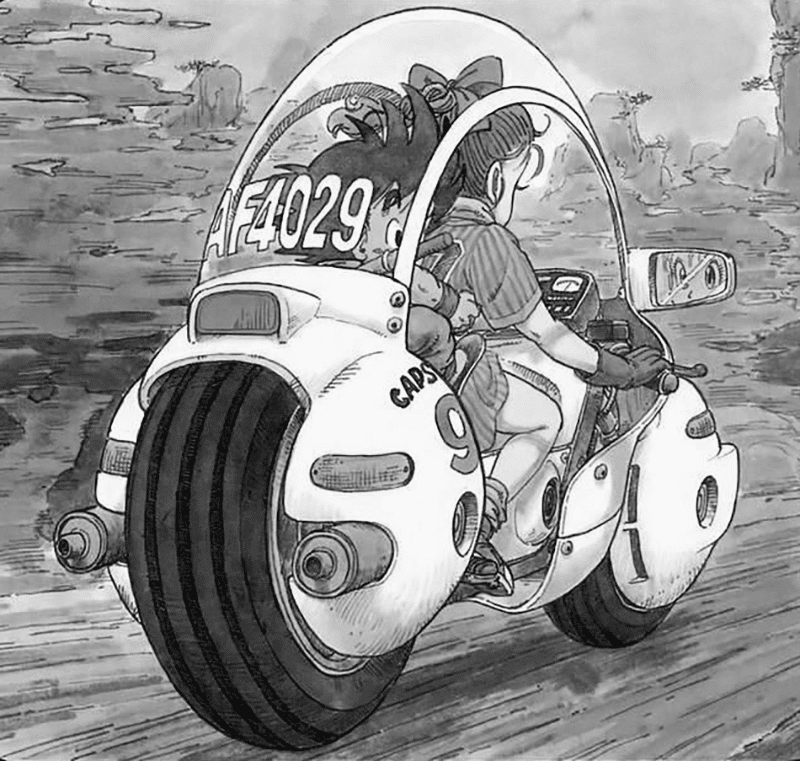
Nothing much needs to be said about Akira Toriyama’s masterpiece Dragonball. It’s one of the longest-running and most popular shonen martial arts manga of all time.
Dragonball tells the story of Son Goku from childhood to adulthood. We follow him as he gathers the seven Dragon Balls and fights stronger and stronger enemies.
Dragonball’s the father of modern shonen.
Yet when most people hear about it, they think of Dragonball Z, of Super Saiyans, energy blasts and impossibly strong enemies.
In its earlier arcs, Dragonball was an entirely different manga. It centered on Son Goku and Bulma going on wacky adventures in search of the seven Dragon Balls in a world full of mythology and martial arts.

Interestingly enough, these earlier parts of the manga are also much more lighthearted than later ones. Son Goku and Bulma’s adventures are full of humor and silly gags.
The greatest thing about Dragonball, however, is the art. Akira Toriyama’s a master of the craft. Characters are great and unique, the world’s nothing short of beautiful and brought to life by Akira Toriyama’s personal style.
As the father of modern shonen, Dragonball can feel too typical and rather dated. Its art and its many martial arts battles, especially during the World Martial Arts Tournament, still hold up today.
Dragonball’s a martial arts manga that I thoroughly enjoyed. While it’s not free of its faults, and later parts can be a bit lacking compared to earlier ones, it’s still one of the greatest martial arts manga of all time.
Blood and Steel

Blood and Steel is a martial arts manhua I enjoyed immensely and it’s a fantastic fit for this list.
We get to know Yan Heng, a member of the Quincheng martial arts group. One day, the Wudong group attacks and annihilates them. When Yan Heng’s about to be killed, he’s saved by Jing Lie, also known as the Wudong Hunter.
Bound by their desire for revenge against the Wudong, the two of them set out together.
Blood and Steel’s story is relatively simple and typical for manhua in the Wuxia genre. It stands out, however in terms of art.
It’s one of the most detailed and beautiful works on this entire list of martial arts manga. Characters are gorgeous to look at, fights are stunning and the world is nothing short of beautiful.
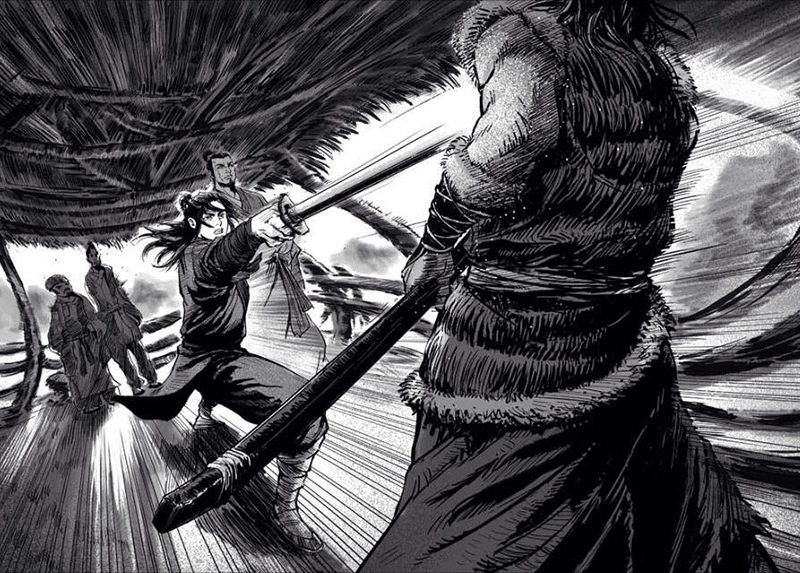
The fights in this manhua are fantastic, as is the way they are presented. Fights in other martial arts manga, tend to be drawn out, lasting multiple chapters and are often over-the-top. In Blood and Steel, however, fights are brisk and over quickly, making them both more realistic, but also more interesting.
The biggest problem with Blood and Steel, comes in terms of story progression. It’s for and foremost a revenge story, but proper conduct and morals are often held to a higher standard. Quite a few times, our protagonists let an enemy escape because fights didn’t start on equal footing.
This, however didn’t deter my enjoyment of Blood and Steel much. While its story isn’t the deepest, the arts and the fights are fantastic. If you’re a fan of martial arts manga, and want to read a work with beautiful art, check out Blood and Steel.
Crows

Crows is another fantastic martial arts manga, one focusing on delinquents.
When Harumichi Boya transfers to Suzuran, a high school full of delinquents, he sets his sights on conquering the school and becoming its number one fighter.
Of course, things don’t go as planned, and soon fights between all the gangs in the area break out.
Crows is such a great martial arts manga because of how simple it is. It’s a delinquent story about street fights and that’s exactly what you get. This doesn’t mean it doesn’t have its deeper themes or tragic moments, but, overall, it’s a rather lighthearted series.
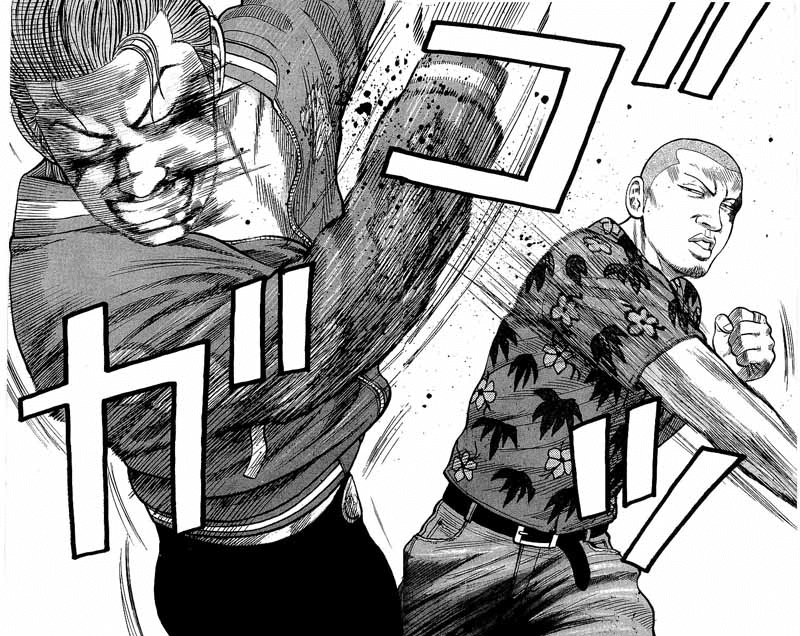
What Crows does, however, it does well. The series is a lot of fun, the fights are fantastic and many of the characters are likeable and unique in their own right.
Crows is an older series, so its art style might be a bit off-putting to so me. It has a distinct 90s look to it. It’s by no means bad, it just takes a bit of time getting used to.
The biggest problem with Crows is realism. It seems that in the world of Crows, teachers, parents and even law enforcement are non-existent. Fights between juvenile delinquents can break out in the middle of the city, but no one cares or intervenes.
Apart from this minor complaint, Crows is immensely enjoyable. If you’re a fan of martial arts manga or manga about delinquents, I highly recommend it.
Baki
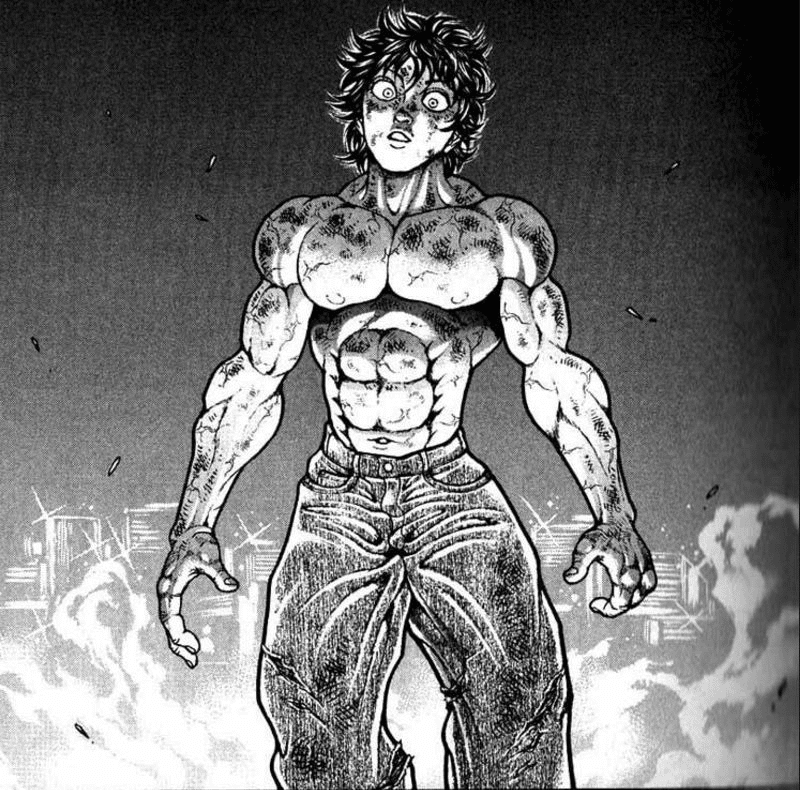
Grappler Baki and its sequels is a name that anyone interested in martial arts manga has heard about for how crazy and over-the-top it is.
The story centers on Baki Hanma, a young martial artist. He takes part in violent fights in Tokyo’s underground fighting arena, the Kourakuen, to not only prove himself, but also to grow stronger.
Yet, there’s more to Baki, for he’s the son of Yuujirou Hanma, the ‘Ogre,’ or ‘Strongest Creature on Earth.’
Over the course of the series and its many installments, Baki fights various adversaries. His reason to do so is simple: he wants to be strong enough to not only stand up to, but defeat the father he hates so much.
While Baki can get crazy and over-the-top, its depiction of martial arts is much more realistic than that in other similar manga. There are no power levels, no Ki, and no energy blasts. All we get is pure martial arts, but taken to a crazy extreme.
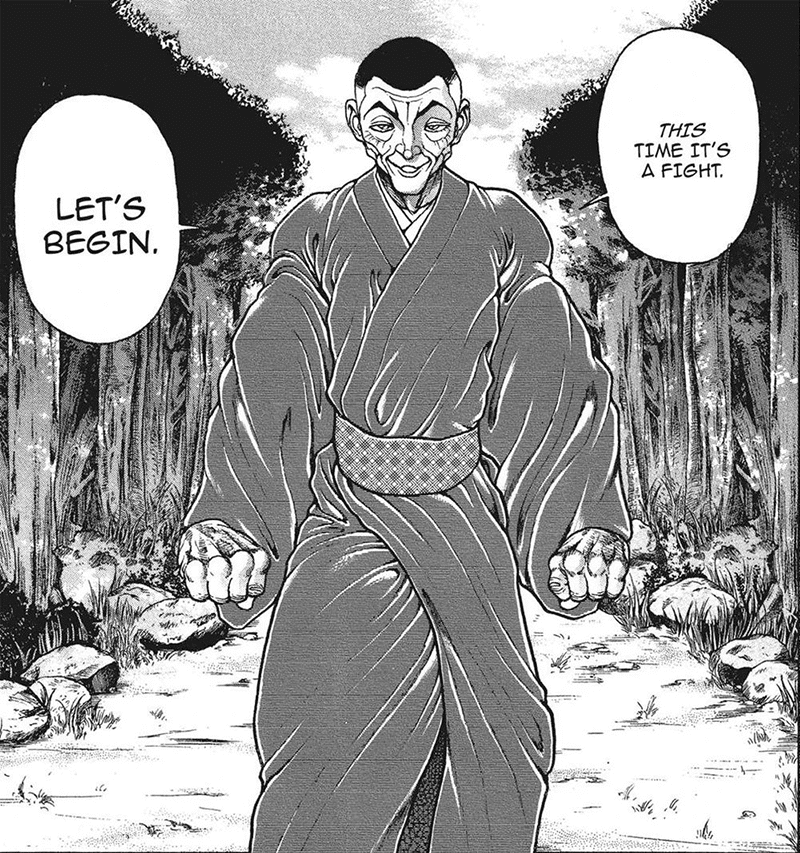
Baki’s a long series, but it’s all about martial arts and fights. The level of dedication taken in their depiction’s impressive. Almost every fight in Baki’s exciting, enjoyable and well-written. At the same time, however, Baki can also be quite brutal. We see bones break, flesh tear and blood spray constantly.
The greatest thing about Baki, however, are the characters. Each character in this manga has their own backstory, fighting style and reason for growing stronger. One of the most notable examples is Shibukawa, an old man and master of Aiki.
The only problem with Baki’s the art. Especially in the series earlier installments, it’s not only old-fashioned, but rather ugly to look at.
Still, Baki’s one of the longest running and most popular martial arts manga out there. Any fan should read it.
Holyland
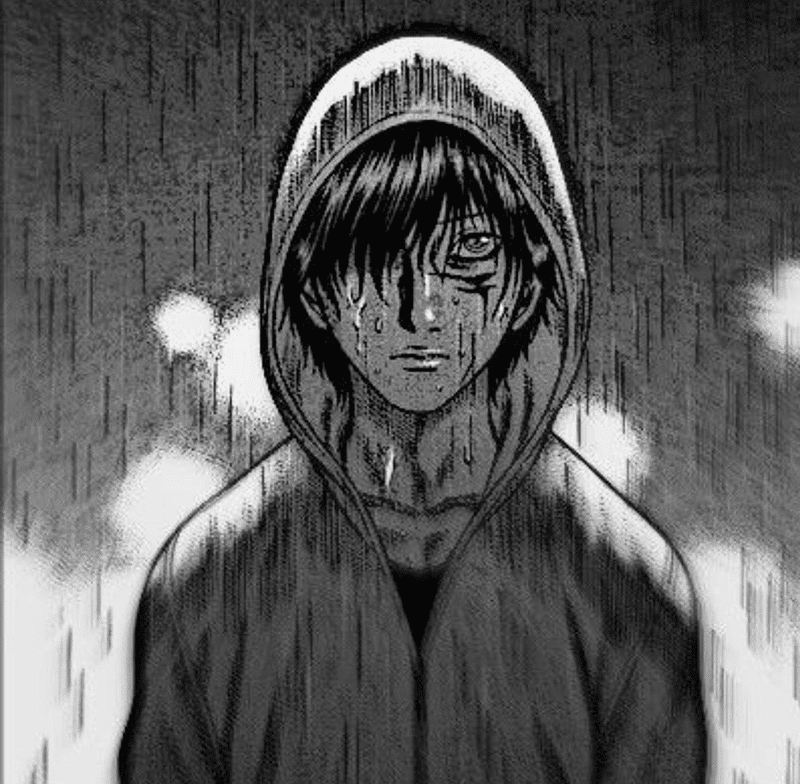
Holyland is one of the greatest martial arts manga out there.
We’re introduced to a boy named Yuu Kamishiro. He’s being bullied by his peers and doesn’t seem to have a place in society. Eventually, he stops going to school and instead trains a single boxing punch.
Once satisfied with the results of his training, he begins wandering the streets, fights thugs and builds a reputation for himself.
The more he fights, however, the more his name spreads. Soon enough, quite a few of those out in the streets know of the ‘Thug Hunter.’
The greatest thing about Holyland are without a doubt its characters. Yuu stands out especially. He’s relatable, one can feel how lost he is, and how desperate he’s to find a place to belong. In essence, Holyland’s a coming of age story that’s told via martial arts and street fights.
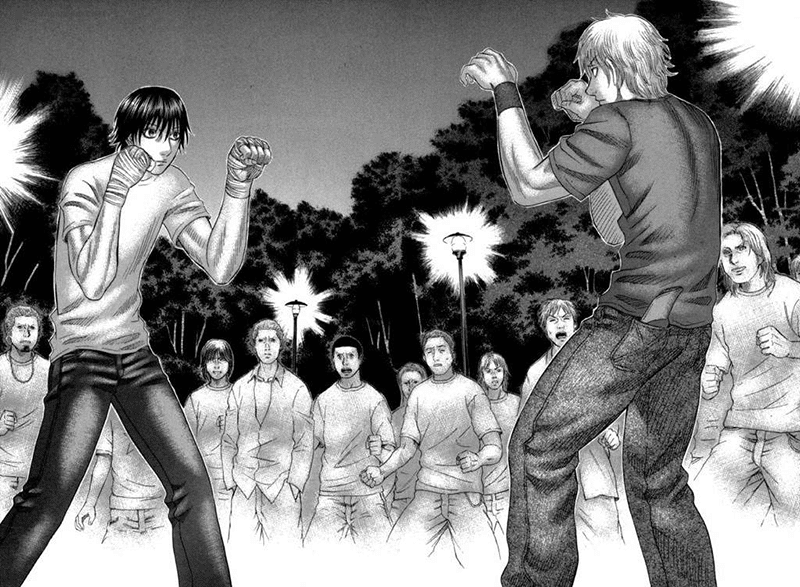
Many other members of the cast, however, are as developed as Yuu. They all have their own reasons for being out in the streets. Two notable examples are Masaki Izawa and Shougo Midorikawa.
This character-driven approach to storytelling leads to another problem. While Holyland focuses heavily on character development, it spends almost no time on developing an overall plot. Holyland’s story is rather repetitive. After each fight a new enemy appears, and another fight follows.
This, however, is only a minor problem. Holyland’s a manga about characters and their development, and it’s here the series shines the most. If you enjoy martial arts manga, Holyland’s a must read.
Fist of the North Star
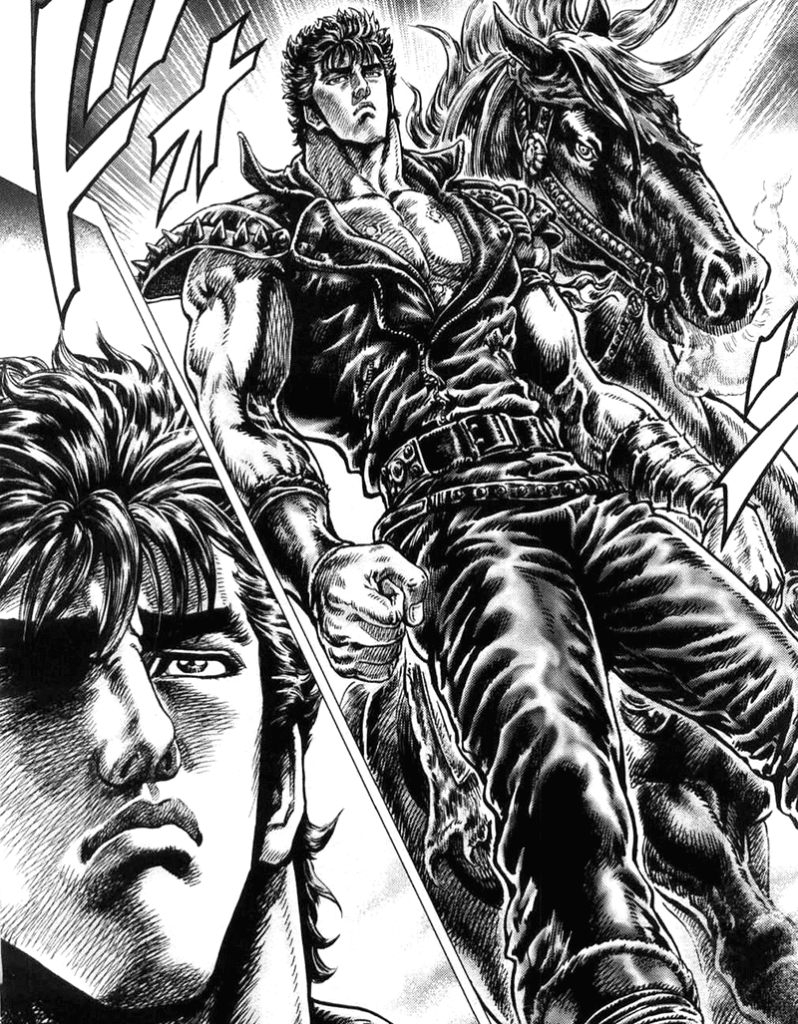
If you’re a fan of blood, gore and martial arts, Fist of the North Star is exactly what you’re looking for.
The story’s set in a post-apocalyptic world. What remains of civilization is ruled by the strong.
Kenshiro, a mysterious wanderer, travels the land. Using his deadly martial art, Hokuto Shinken, he fights evil wherever he goes.
At the outset, Fist of the North Star, tells a rather simple, more episodic story. The more we learn about Kenshiro and his past, however, the deeper and more ambiguous the manga becomes.
Fist of the North Star is a martial arts manga that’s all about action and fights. These fights stand out when compared to other martial arts manga for how brutal they are and how gratuitous the violence is.
Another thing to know is that Fist of the North Star is a manga typical for its time period. It’s a manly manga, and all its male characters are testosterone fueled masses of muscle who do manly things and shed manly tears.
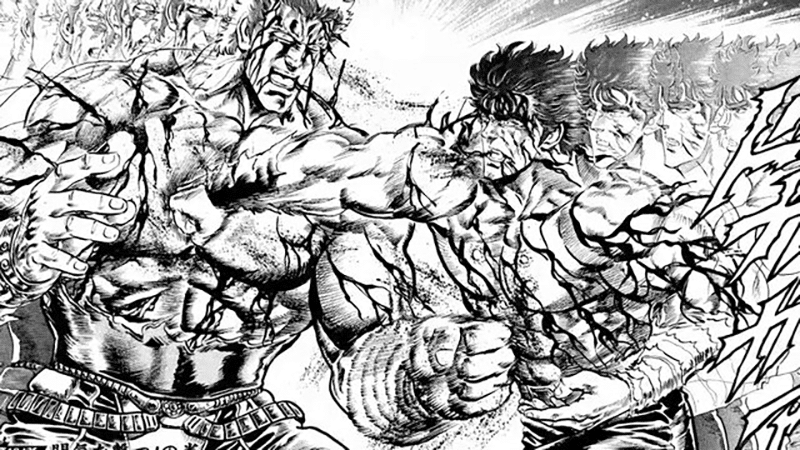
The manga’s high point are clearly the brutal battles, but the setting’s also fantastically realized. It’s a desolate, but beautifully rendered and detailed post-apocalyptic world.
One problem with Fist of the North Star is the character of Kenshiro. He appears less a character in his own right, but more a vessel to convey a story. His actions never seem to affect him directly, but only the people around him. He’s more savior figure than fully fleshed out character.
Other characters, however, are much more alive and developed. Notable examples are Rei, Mamiya, but also the antagonist Raoh.
Overall, Fist of the North Star is a fantastic martial arts manga set in a post-apocalyptic world that comes with some of the medium’s best action.
Kengan Ashura

Kengan Ashura’s one of the greatest martial arts manga out there.
Many shonen or martial arts manga feature tournament arcs, but Kengan Ashura takes it to the next level. Apart from a short introduction, the manga’s essentially one giant, long-lasting martial arts tournament.
The manga’s plot centers on a single premise: every major business deal in Japan is decided by martial arts matches. Responsible for these matches is an organization comprising the biggest and most influential figures of the Japanese business world, the Kengan Association.
Ohma Tokita becomes a fighter for the Nogi Group to get closer to his goal of becoming the strongest martial artist.
Kengan Ashura’s first chapters center on Ohma’s matches against fighters of other companies, but soon enough, the Kengan Annihilation tournament is announced. It’s a martial arts tournament held to decide the chairman of the Kengan Association.

Kengan Ashura gives you exactly what you’re hoping for: a martial arts tournament full of brutal and over-the-top fights. The story might have its twists and turns and some characters have hidden motifs, but the overall focus remains on the tournament.
Kengan Ashura stands out for two major reasons. One is its characters, the other is the art.
Each and every character in this manga has a unique design, fighting style and even backstory.
The art, however, is clearly the best part of this manga. It’s nothing short of gorgeous and presents the many brutal fights in all their glory. These fights are absolutely fantastic, over-the-top and feature a variety of insane techniques.
If you’re a fan of martial arts manga, crazy characters and brutal fights, Kengan Ashura’s a must-read.
25 Amazing Manga You Must Read Right Now
I read mana books, stories published online, but I also enjoy reading manga. It’s a medium I’ve loved for years. Amazing manga stand out not only for their story but also for breathtaking visuals.
The reason manga are so interesting is the combination of cultural differences, unique stories, and visuals.
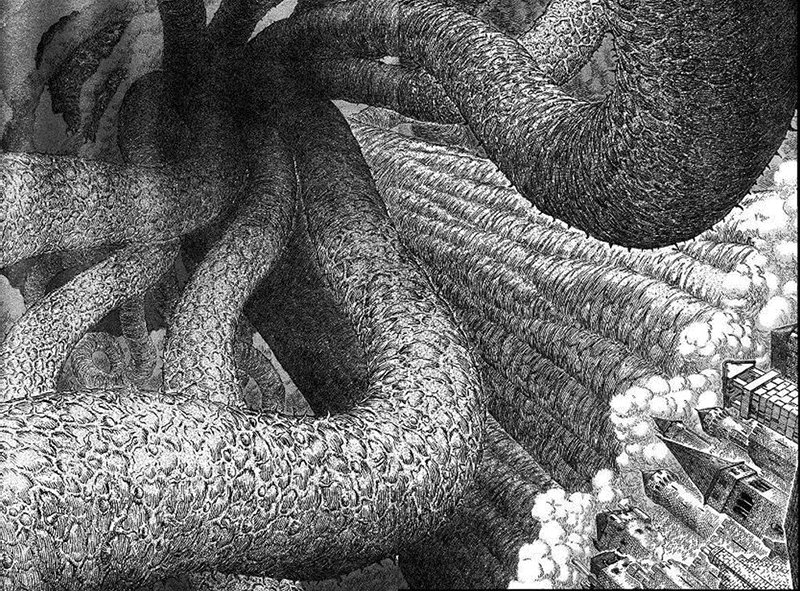
I’ve read hundreds of manga, but I noticed their quality can vary. Because of this, I created a list of twenty-five amazing manga. While some of the manga on this list might be popular and well-known, I believe there’s also some hidden gems.
If you want more manga recommendations, check out my lists of the best horror manga, the best seinen manga, and the best shonen manga.
I’d also like to give a spoiler warning. I’ll try not to go into too much detail regarding the plot, but sometimes it’s unavoidable.
So, here are twenty-five amazing manga you must read right now.
Ichi the Killer

Ichi the Killer by Hideo Yamamoto is amongst the most depraved and sick manga out there. It’s also one of my favorites.
The manga concerns two characters. One is the twisted, insane yakuza Kakihara, the other Ichi, the titular killer. The story starts when Kakihara’s boss goes missing. This event sets into motion a brutal search, bringing Kakihara into conflict with other yakuza groups, but also leads to a confrontation with Ichi.
The most interesting part about Ichi and Kakihara, however, is how different they are. They are polar opposites and it’s this distinction that helps to bring forth tension, but also makes the manga much more interesting.
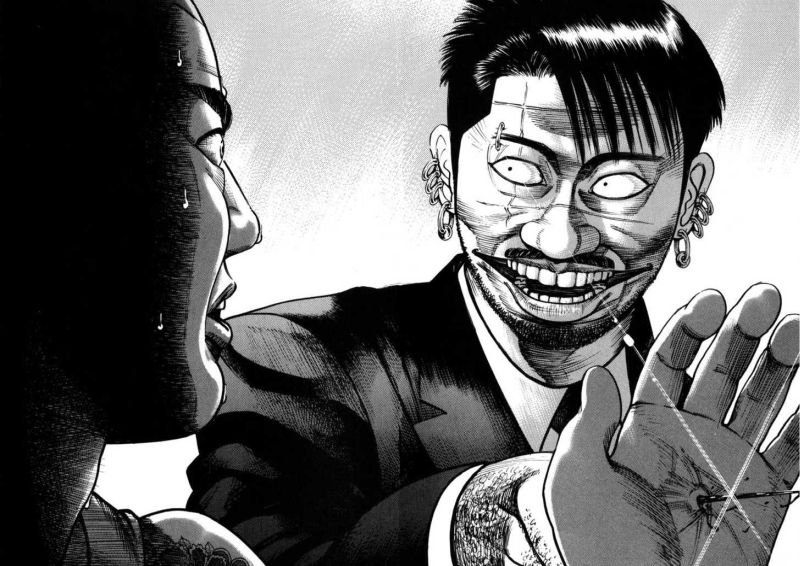
Ichi the Killer features copious amounts of violence, including torture, rape and murder, but it’s not a mere gore fest. It’s a deep, psychological masterpiece about the interplay between masochism and sadism, childhood abuse and identity disorder. All these themes are mixed into a manga as brutal as it is compelling.
What makes Ichi the Killer work so well is the raw violence it features. Its characters aren’t normal people, but the most depraved and twisted inhabitants of society’s underbelly. It shows us all those people, their depravity, how far they will go to reach their goals, and filters none of it. It’s a manga as sick as it’s satisfying.
Ichi the Killer’s not for the faint of heart. It’s fucked up, brutal, and often downright disgusting. Yet, it’s also one of the deepest, psychological and amazing manga of all time.
Kingdom

Kingdom by Yasuhiro Hara is an amazing manga and one of the best in the history and military genre.
It’s set during the Warring States era of China and aims to detail the unification of China under the state of Qin. Shin, our protagonist, is a young servant boy who becomes entangled in the matters of state. After helping the soon-to-be king of Qin, Ei Sei, he sets out to become a Great General under the Heavens.
Kingdom’s focus is on the many large-scale battles so common during the Warring States era, and presents them in intricate detail. What makes Kingdom such an amazing manga, however, is the showcasing of strategies and tactics. The manga details the various engagements, strategic finesse, tactics deployed, but also the brutality of these battles.
Kingdom also outlines important political events. The most notable of those being the power struggle between Ei Sei and Ryo Fui.

Kingdom’s art starts out average. During the first arc, it’s merely decent. This changes in later parts when we witness the many large-scale engagements and see the giant, walled cities of ancient China. They are a marvel to look at.
Kingdom’s biggest problem is its protagonist. Shin is rather clichéd and more a shonen protagonist. He’s a young hothead, not smart, and aims for the top because it’s the top.
Apart from him, however, the manga features many other fantastic characters, for example Kanki, Riboku, Ryo Fui and General Ou Ki.
Kingdom’s first arc, the Sei Kyo Rebellion arc, is easily its worst. While it was interesting, it felt more like a shonen manga. All that changed during the first large scale battle.
Kingdom’s an amazing historical manga, and one of the greatest military manga of all time.
Yamikin Ushijima-kun
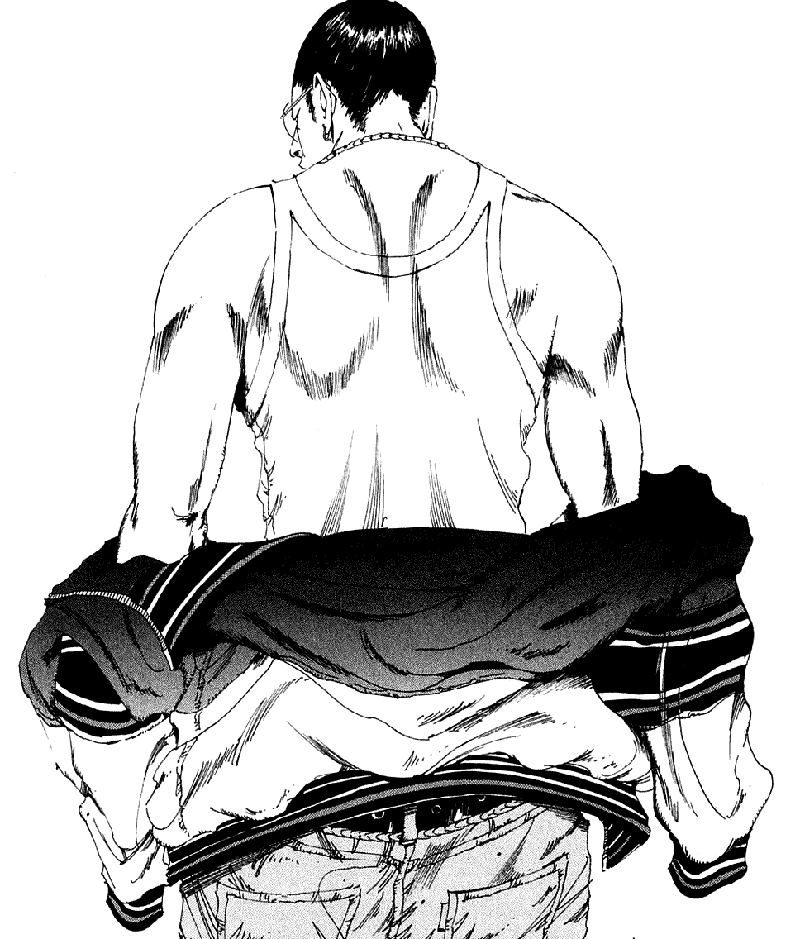
Manabe Shouhei’s Yamikin Ushijima-kun’s a manga about illegal money lending. While it’s an amazing manga, it’s also a very dark one. People are being betrayed, tortured and even use their life.
Kaoru Ushijima is a money lender. He offers cash loans with an interest rate of fifty percent to be paid back within ten days. Who’d accept such an outrageous loan? Those who are drowning in debt, or who gave into their various vices.
As the manga continues, we follow Ushijima as he makes sure he’s paid back at all costs and takes from people everything they have. He’s not shy about using identity theft, extortion, and even prostitution. And every once in a while, he might even set an example for those who think they can get away.
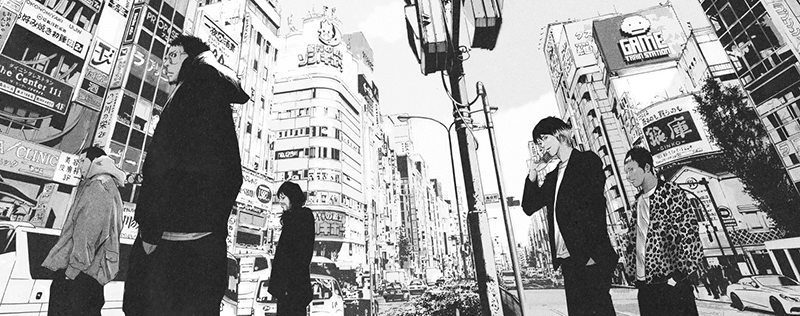
Interestingly enough, it’s often hard to feel sympathy for any of these characters. While Ushijima’s not a good guy, one can’t help but root for him.
This changes in later arcs, when the manga focuses more on other characters, detailing their life, and the reasons that eventually drive them to visit Ushijima’s office. Many of these stories are tragedies, and we watch as misery and trouble are piling up on people until there’s no way out. Yet, there are the occasional glimmers of hope that can be found as well.
The art style in Yamikin Ushijima-kun is unique. It’s not as refined and as that of other manga, and can best be described as gritty and dirty. For a manga like this, however, that focuses on the dregs of society, it’s perfect and helps so much to set the tone.
Yamikin Ushijima-kun is a fascinating, dark and amazing manga, especially for those who are interested in crime and the dark underbelly of society.
Gantz
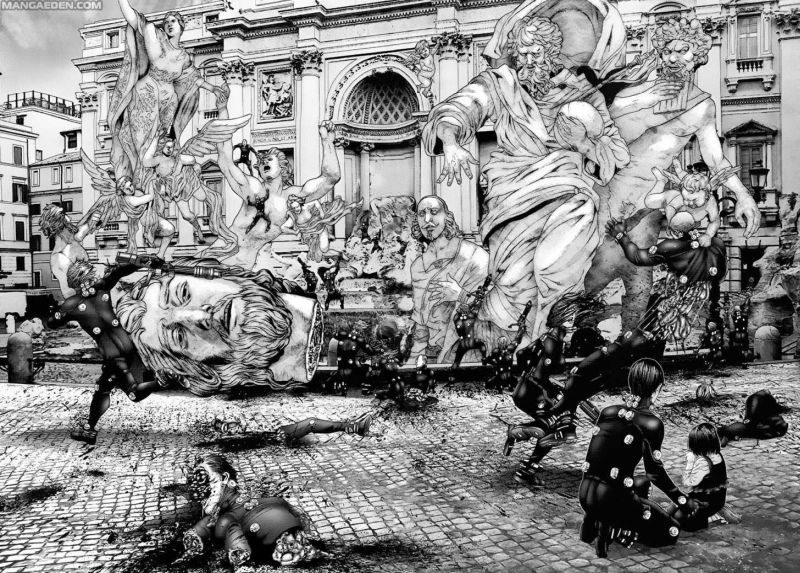
Gantz is one of the most insane and amazing manga out there.
One day, Kei Korono and his childhood friend Masaru Katou die in a tragic train accident. Yet, mere moments later, they arrive in a Tokyo apartment. It’s populated by various other people, and in the room’s center is a black sphere. It’s called Gantz, and it informs them it’s now their mission to go out and hunt down aliens who live amongst humans. Before anyone can react, they are teleported outside. Thus, the first mission begins.
Gantz is a brutal manga about hunting aliens, and full of fluid action and glorified gore. While the very first mission only features two aliens, the stakes throughout the manga are constantly rising. Later missions feature huge amounts of creatures that are as dangerous as they are outlandish.
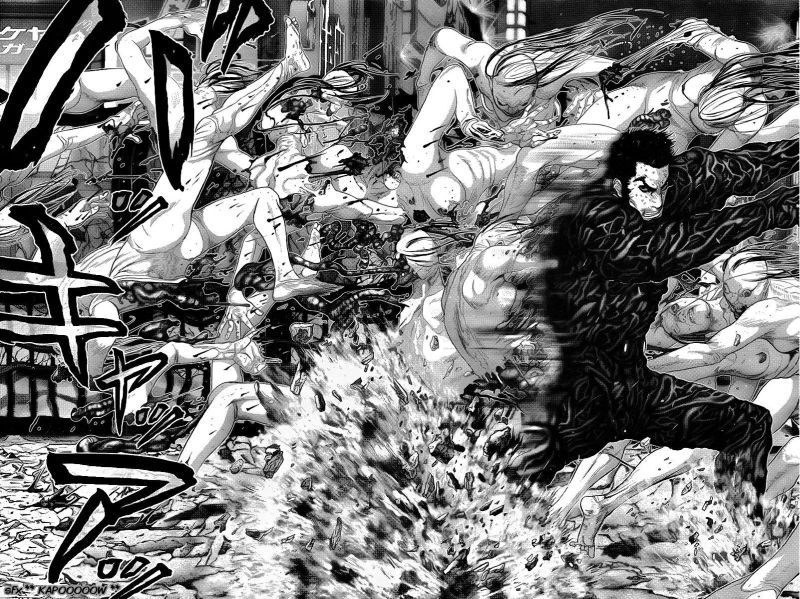
What makes Gantz so amazing is the action and the art. Gantz comes with some of the most dynamic action, and it’s all rendered in beautiful detail and stunning to look at. The same is true for the many aliens. Gantz’s monster design is amongst the greatest in all of manga.
Another reason Gantz stands out is because of its protagonist, Kurono. He starts out as an egoistic, unlikeable teenager, but develops tremendously throughout the manga. It’s a delight to witness him grow and eventually become the leader of the Gantz team.
The world of Gantz is dark, and this is not exclusive to the missions. We bear witness to severe bullying, rape and even a mass shooting.
And yet, Gantz is an action-packed masterpiece and one of the most amazing manga out there. It’s nothing short of weird, insane, and gory madness.
Liar Game
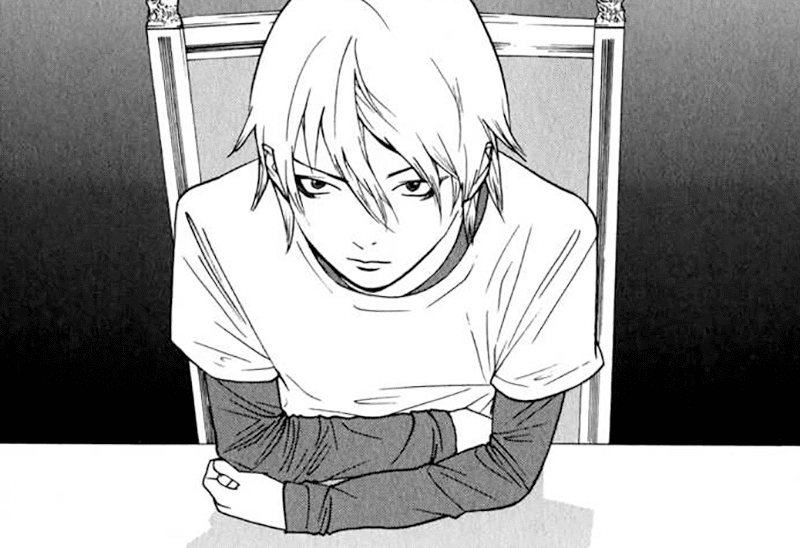
Shinobu Kaitani’s Liar Game is amongst the best mind game manga out there.
We meet Nao Kanzaki, an extremely honest girl who finds herself a contestant in the Liar Game, a game of deceit with stakes in the hundreds of millions.
It’s not long before Nao’s tricked, but finds help from the genius swindler Akiyama.
Liar Game’s such an amazing manga because of the games featured in it. While they might start out simple, they become more and more complex the longer the manga continues on.
Yet, it’s not so much the games themselves, but the many ploys, tricks and strategies employed by the characters that make them so great. It’s nothing short of amazing to watch them out-play each other repeatedly over the course of a single game.
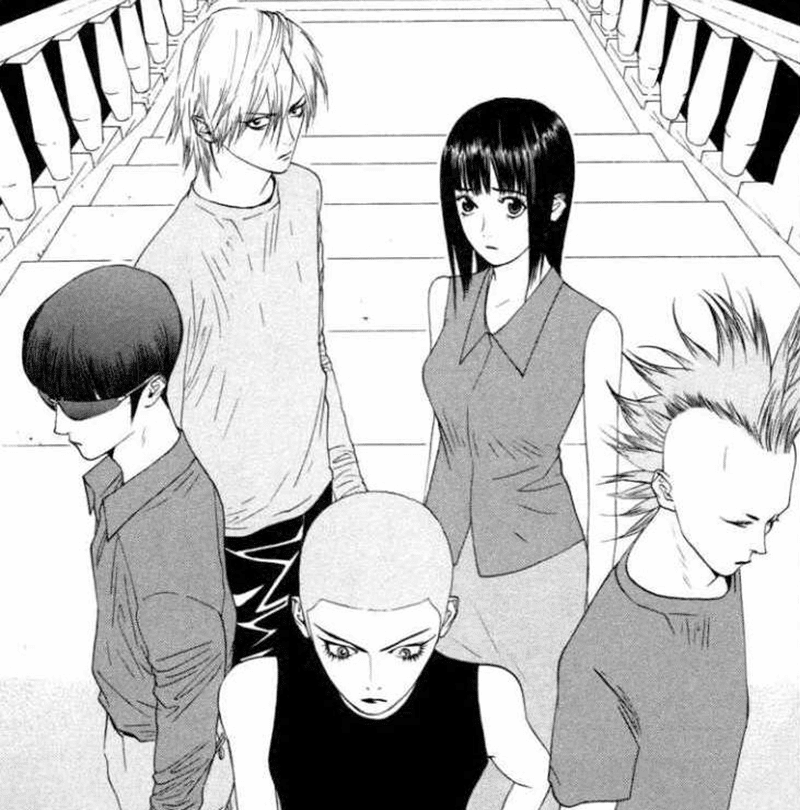
This is most noticeable during the Contraband Game and the Musical Chair Game, which were absolutely amazing. Yet, this wasn’t solely because of how these two games were constructed, but also because of certain characters they featured.
Most characters in Liar Game represent a certain character type, and many of them are easily out-played by Akiyama. Yet, the Contraband Game introduces us to Yokoya and the Musical Chairs Game to Harimoto. Both of them were formidable adversaries and a match for Akiyama. This made these games much more interesting and suspenseful.
Liar Game’s a well-written and absolutely amazing manga. It features complex games, clever strategies, and great characters. If you’re a fan of mind game manga, read it. It’s the best mind game manga out there.
Bokutachi ga Yarimashita
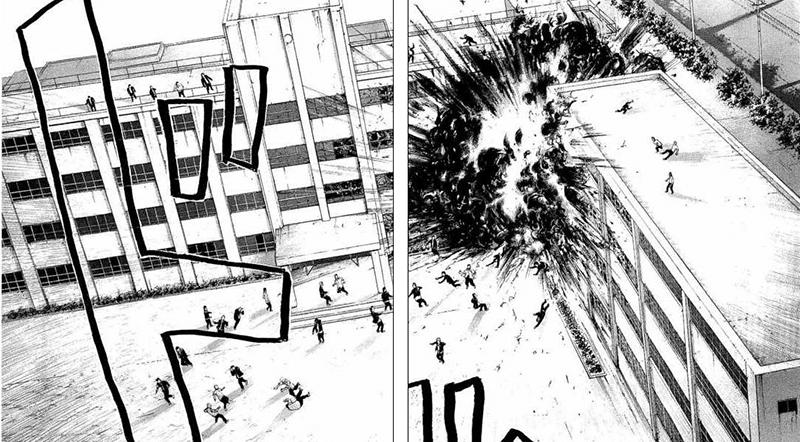
Muneyuki Kaneshiro and Hikaru Araki’s Bokutachi ga Yarimashita’s one of the darkest, most amazing manga of all time.
It centers on Tobio Masubuchi, and his three friends Isami, Maru, and Paisen. One day, Maru gets in trouble with delinquents from a neighboring school, and is beaten up. Promptly, the friends hatch a plan for revenge.
What they planned to be nothing but a prank, turns into deadly reality. In an instant, their normal, every day lives ended.
Bokutachi ga Yarimashita is extremely well-written. It’s a story that centers on a variety of psychological themes, the most important being guilt and redemption. It’s these themes that make Bokutachi ga Yarimashita such a dark, depressing, yet amazing magna.
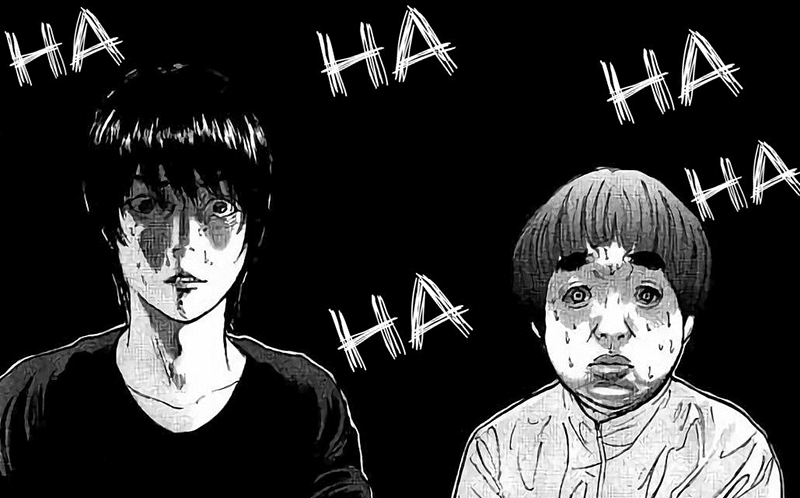
Reading this manga was quite the unique experience. Bokutachi ga Yarimashita’s plot is ripe with tension, but most of all, it will make you uncomfortable on a deeply psychological level.
The writing, the storytelling and pacing are nothing short of brilliant, but more so are the characters. It’s a manga that’s almost entirely character driven. These characters, however, aren’t heroes, they are normal, every day people. They are immature, weak, and never thought about the consequences of their actions.
It’s interesting to see how these types of people handle the events happening in this manga, and the toll it takes on their emotions and psyche.
Bokutachi ga Yarimashita’s a realistic tale. It shows us there are no magical endings in real life. Instead, life goes on, and you’ll have to live and come to terms with the consequences of your actions.
Bokutachi ga Yarimashita is a fantastically dark, suspenseful and amazing manga. It gives readers one of the deepest looks into the human psyche.
Homunculus
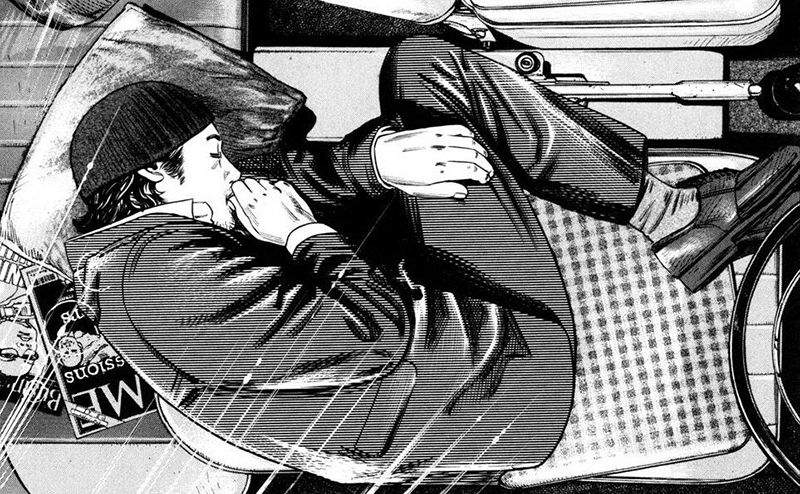
Homunculus is another masterpiece by the creator of Ichi the Killer, Hideo Yamamoto. Where Ichi the Killer’s disturbing, Homunculus’s surreal.
The story centers on Susumu Nakoshi, a young homeless man who lives in his car. One day, Manabu Ito, a young medical student, approaches him. He researches the process of trepanation, and is looking for a test subject to undergo the process. Eventually, Nakoshi agrees.
While this premise is odd enough, the results of the operation are even stranger. From this point on, whenever Nakoshi covers his left eye, he sees distorted versions of people, which are referred to as homunculi.

As the manga continues, the story only gets weirder. While there are the homunculi, which are weird in their own right, the manga’s plot discusses a variety of deeper, psychological themes.
This plot, however, is almost unpredictable, and more a character study, one that slowly turns into a man’s descent into madness.
The art all throughout Homunculus is nothing short of fantastic. While it features its fair share of disturbing and explicit scenes, it’s also full of surreal and even abstract ones. Yet, the most outstanding thing in this manga is, without a doubt, the grotesque homunculi.
Homunculus is an amazing manga. It’s a work of surreal fiction, featuring two extremely complex characters, a unique scenario and an unrestrained, yet deeply interesting narrative.
Alice in Borderland
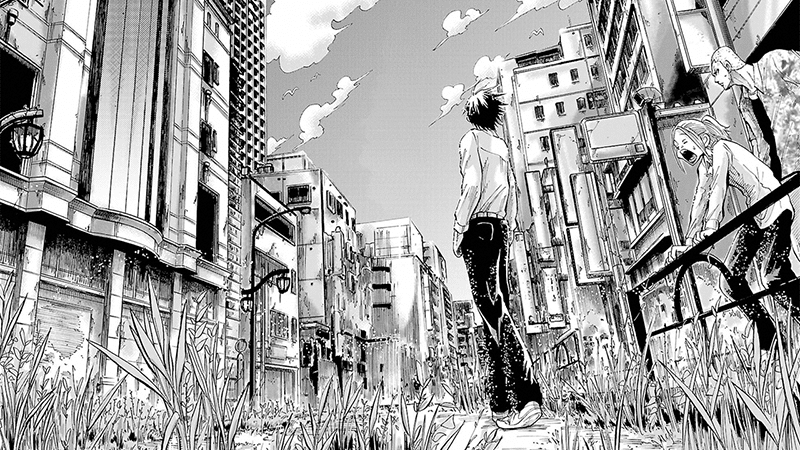
Haro Aso’s Alice in Borderland is an amazing manga about death games and one of the best the genre offers.
Ryohei Arisu tries his best to avoid thinking about the future. One night, he and his friends Chota and Karube witness first fireworks and then a blinding explosion. Moments later, they find themselves in a different world. This world’s Borderland, where people are forced to take part in deadly games or die.
The greatest part about Alice in Borderland is that games differ not only by type but also by difficulty. Each game is tailored towards specific qualities; some require intellect, others might require physical fitness.
Yet it’s still a manga about death games, and these games are as brutal as they are unforgiving.
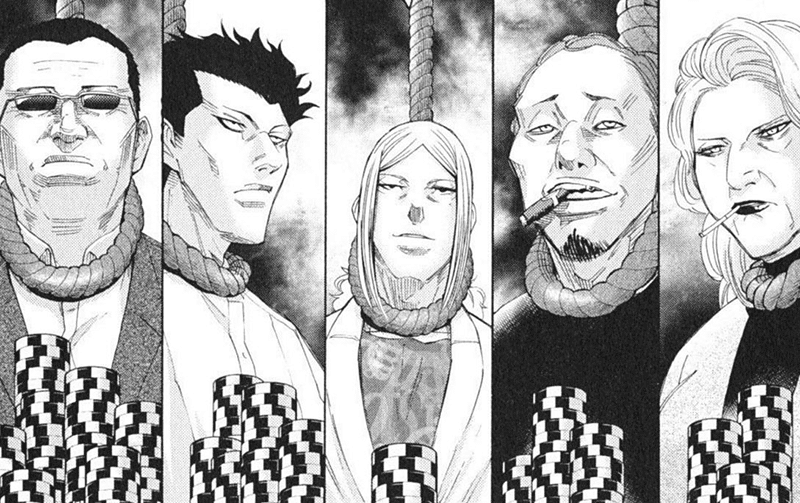
One of the best things about Alice in Borderland is the characters, especially Arisu. He’s not only a fantastic protagonist but also a realistic one. While he’s resourceful and smart, he’s not a genius. He’s also a rather somber character, one surrounded by a deep-set melancholy. He’s not the type to fight ruthlessly or until it kills him. All this, however, makes him so complex and interesting.
The same is true for many of the side characters. Yet, in later parts, the manga focuses on them a little too much. It gives Alice in Borderland an almost episodic, rather unrestrained feeling.
Another problem’s the ending. While it worked well and there wasn’t much of a different choice, it still felt rather anti-climactic.
Even though Alice in Borderland is one of the best death game and survival manga. If you like this genre, read this amazing manga.
Freesia

Jiro Matsumoto’s Freesia’s an amazing manga set in a dystopian Japan in which retaliatory killings are legal. This means, when a loved one’s murdered, you can hire someone to take revenge, or even take justice into your own hands.
Kano, our protagonist, works for an agency which specializes in retaliatory killings.
Reading this, one might think Freesia to be a manga about bloody retaliatory killings, but it’s so much more. The manga’s focus is not so much on the killings, but on the target’s background and personal story. These individual stories are well written, make us sympathize with the characters, and their death into genuine tragedies.
The manga’s setting is gloomy, dark and depressing. Similarly, the cast is full of broken and mentally ill people.
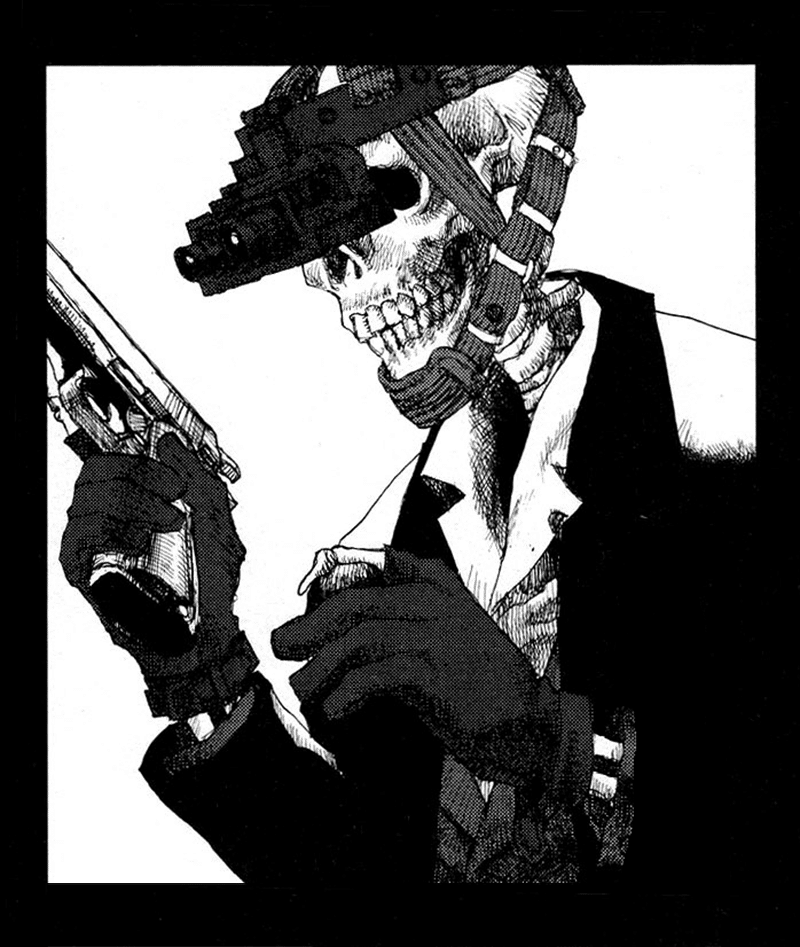
Especially Kano stands out. He’s a character suffering from memory failure, schizophrenia, and hallucinations. Yet, Freesia goes further than just presenting these issues to us. Instead, we see the world through Kano’s eyes, making the entire manga a surreal experience. It also constantly makes us wonder what’s real and what isn’t.
Kano’s not the only one suffering from mental problems, however. Many other members of the cast are plagued by delusions and hallucinations. These, too, are presented to us at face value, and as with Kano, we only understand what’s truly going on when we get a rare glimpse at reality.
Freesia’s a brilliant masterpiece. It’s a dark, depressing work, but also an amazing manga. It presents mental illness in a light I’ve never encountered in another manga before.
Kamisama no Iutoori and Kamisama no Iutoori Ni
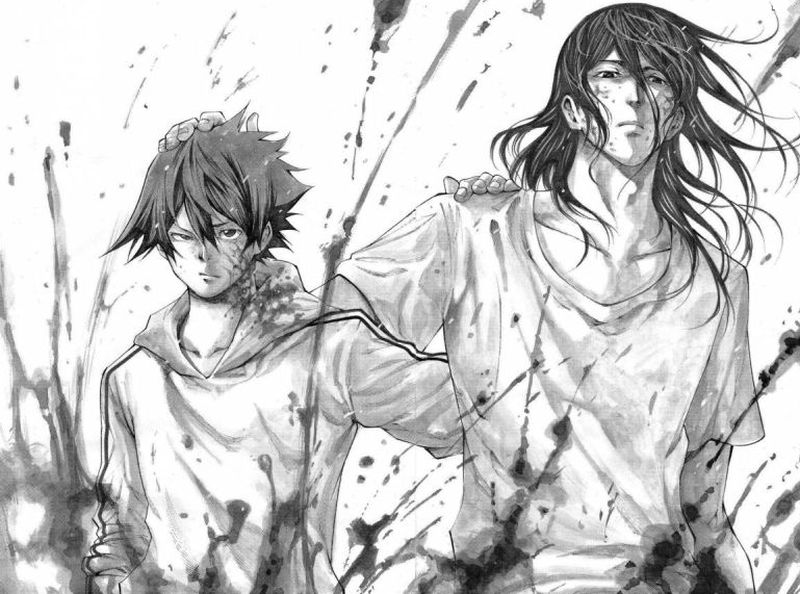
Akeji Fujimura and Kaneshiro Muneyuki’s Kamisama no Iutoori and its sequel are two of the weirdest manga out there.
They center on death games, and are amongst the best the genre offers, yet they stand out for how weird, almost surreal they are.
Takahata Shun is a normal high school student, and incredibly bored with his life. One morning, his teacher’s head explodes, a Daruma doll appears, and the very first death game in the series begins.
Over the course of the manga, we’re introduced to a cast of fantastic characters, and witness death games that get progressively weirder and more complex.
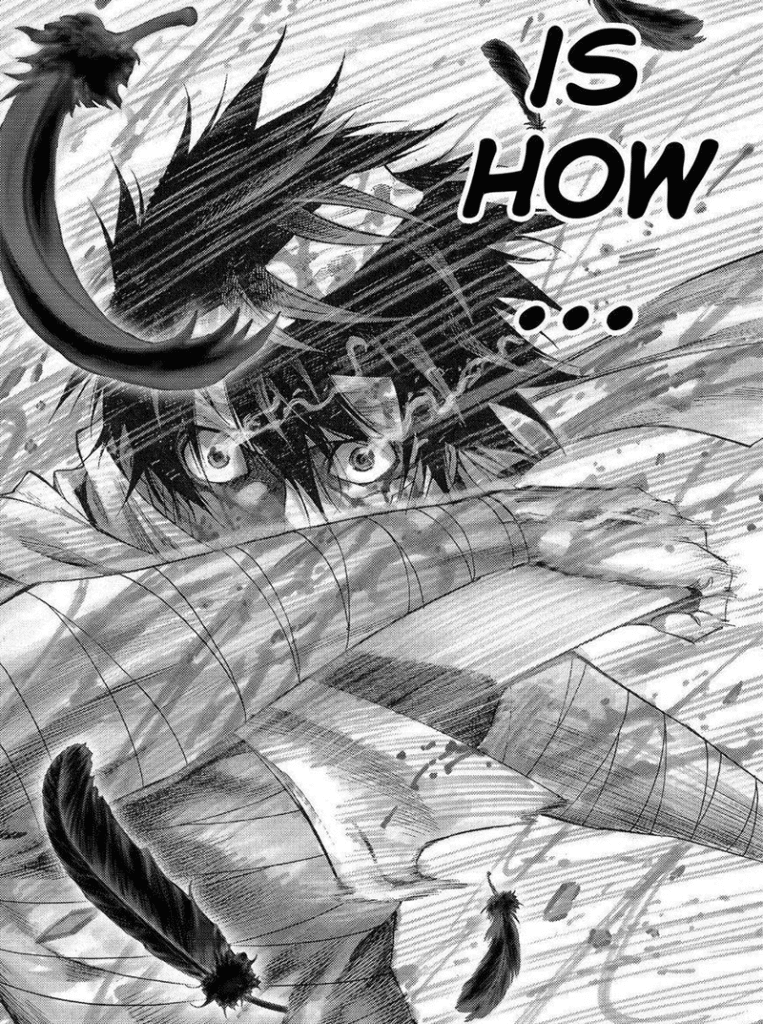
It’s, however, not only the games that are weird. Kamisama no Iutoori’s cast of characters is populated by some of the most eccentric weirdos in all of manga, especially Amamiya and Ushimitsu.
The greatest thing about the series, however, is how it handles these characters. Apart from one notable example, it’s never shy about killing them off and does so at the most unexpected moments. More than once, we’re introduced to a new character, see their backstory before they are unceremoniously killed. This gives the manga an unforgiving, but also strangely humorous, atmosphere.
Kamisama no Iutoori’s art is mostly average, but it improves vastly in its second part. Especially near the end, the manga features some of the most stunning and gorgeous page spreads in all of manga.
Kamisama no Iutoori and its sequel are a strange series, yet they are also incredibly enjoyable. If you’re a fan of death games, especially the weirder kind, read this manga.
Junji Ito Horror Collection
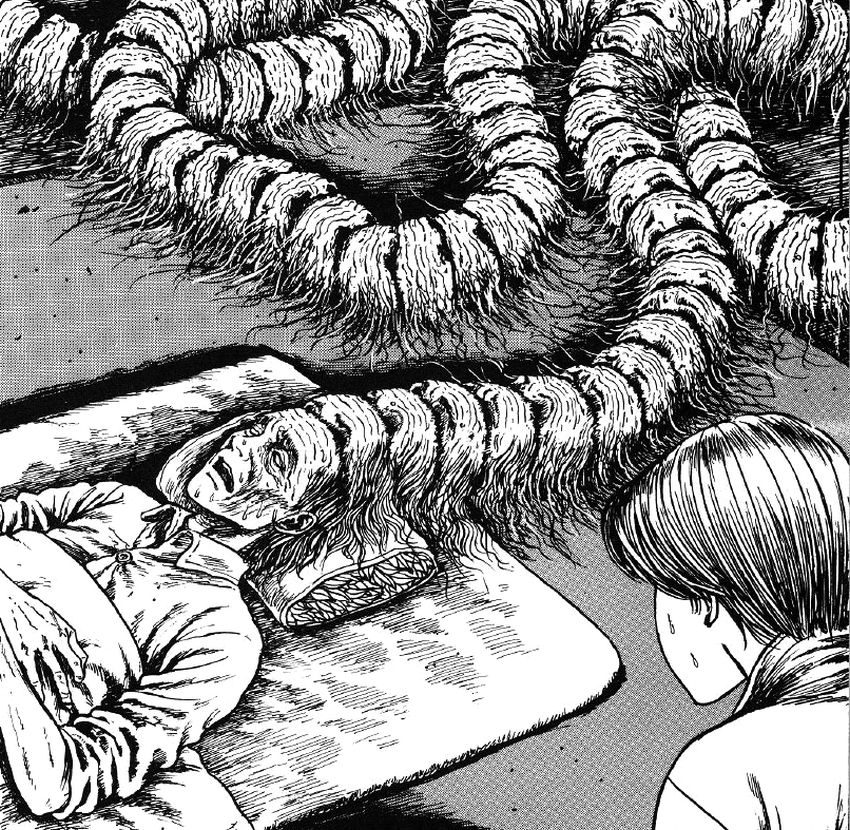
In horror manga, there’s no name as popular as Junji Ito. His horror collection is amongst the best works of Japanese horror of all times.
It comprises mostly terrifying one-shots, but also includes some of his longer works, notably Tomie and his adaption of Mary Shelley’s Frankenstein. If you’re interested in learning more about Junji Ito’s work, check out my article on my favorite Junji Ito stories.
This collection is full of outstanding works, for example Long Dream, Hanging Balloons, The Lovesick Dead or my Dear Ancestors, to name a few.
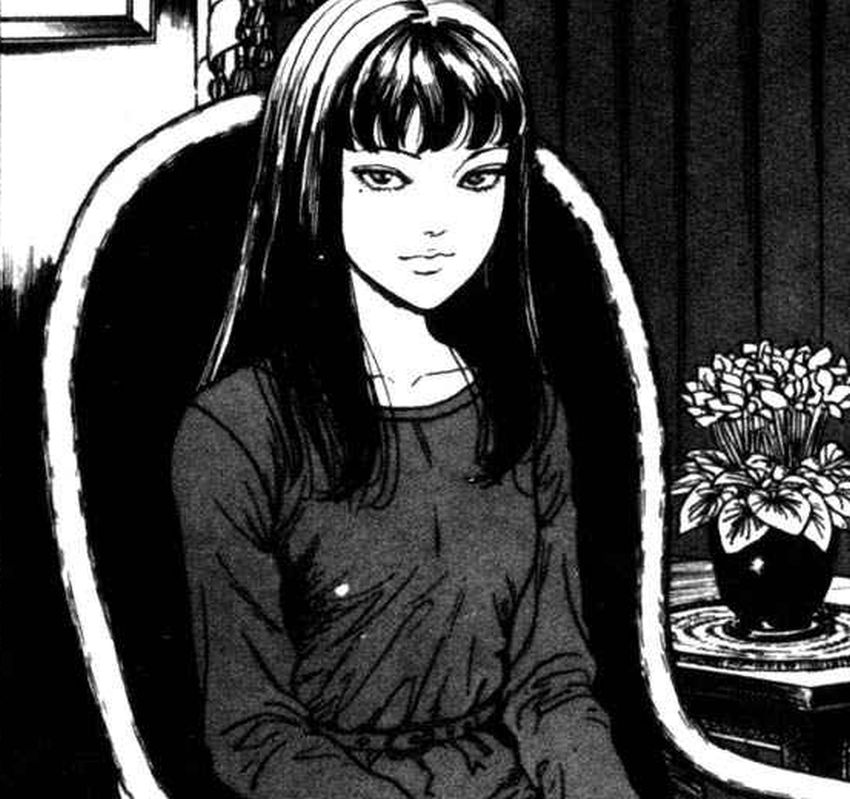
Ito’s work stands out so much because of his beautiful and unique art style. He’s a master of the craft and his works are full of gruesome imagery, violence and gore. One of the most prevalent themes in his works is that of body horror. We witness people being distorted, twisted, and changed into outlandish abominations. If you want to learn more about this, read my article on his style, his themes and how he scares us.
Ito’s characters, however, aren’t heroes. They are mundane nobodies who go about their normal lives until they stumble upon horrific and outlandish situations.
These horrific situations, however, are also special. Ito’s work is seldom about monsters or killers. Instead, his horror comes from things as mundane as his characters: dreams, love, hair, and even musical records.
Junji Ito’s one of the greatest, if not the greatest, Japanese horror mangaka and his horror collection is an amazing manga worth reading for any horror fan.
Omoide Emanon
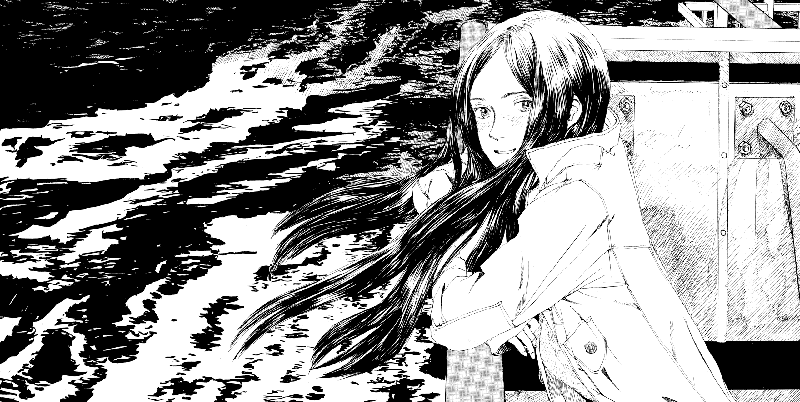
Sometimes, a short tale can be much more brilliant than longer works. Kenji Tsuruta’s Omoide Emanon is one such work and an amazing manga. This short, beautiful tale is based on the novel by Shinji Kajio.
When a young man returns home from his travels via ferry, he meets a beautiful young woman who introduces herself as Emanon. The two of them soon begin talking.
When he invites her to dinner, she tells him an unbelievable story about herself.
What makes Omoide Emanon so special is the warm, solemn atmosphere so prevalent throughout the entire work. It might be the way our characters meet, or the reason the young man returns home; it all fits perfectly.
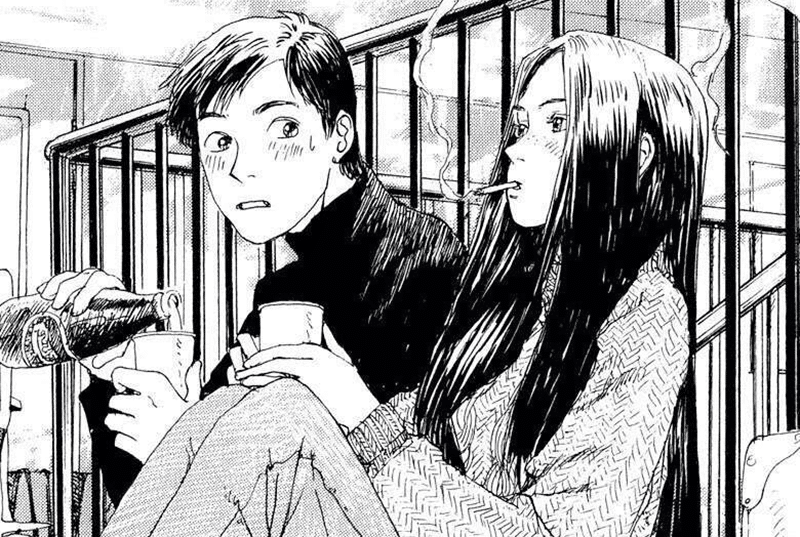
Omoide Emanon’s art is nothing short of beautiful, but focuses on presenting us with realistic characters. Emanon stands out the most. She’s charismatic, rendered in beautiful detail, and there’s this ominous aura to her. Yet, she’s not unreasonably beautiful, but is painted entirely realistically.
What makes this such an amazing manga are the emotions conveyed in this one, single volume. Omoide Emanon had a much bigger impact on me than many other longer series.
We get nothing but a glimpse into the life of two characters, and witness nothing but a chance meeting.
Yet, it’s these small things, those little chance meetings that stay with us the longest, and Omoide Emanon might just be one of them.
Onani Master Kurosawa
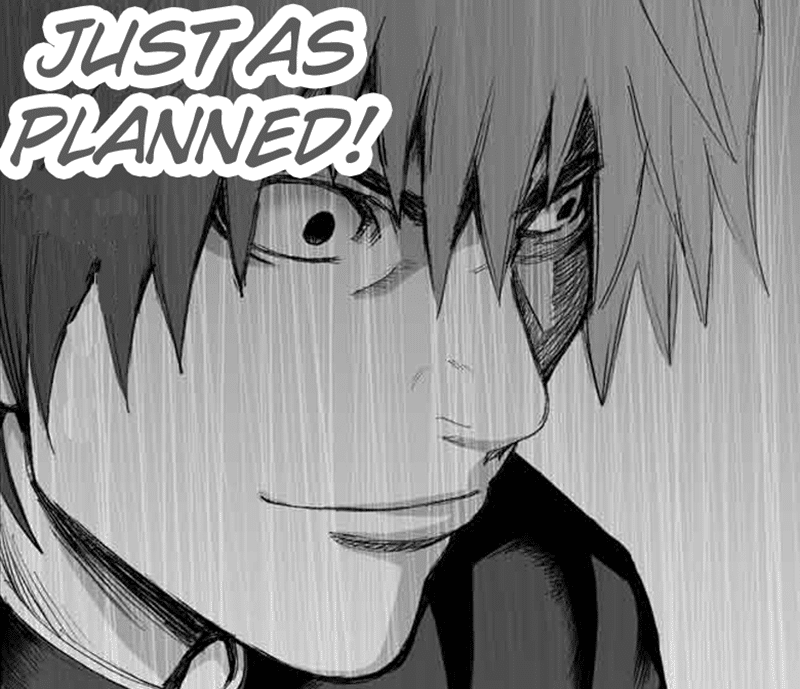
Katsura Ise and Takuma Yokota’s Onani Master Kurosawa’s one of the biggest surprises in the entire manga industry. One would expect it to be nothing but a big, perverted joke, but that’s far from what this manga truly is.
We meet Kakeru Kurosawa, a fourteen-year-old student with a peculiar habit. When classes are over for the day, he retreats to a seldom-used school bathroom to masturbate.
When his mousy classmate Aya Kitahara is bullied by some of the popular girls, he takes revenge into his own hands.
Soon enough, Kitahara figures out he was behind the incident. Instead of thanking him, however, she blackmails him and forces him to do the same thing to other girls who bullied her.
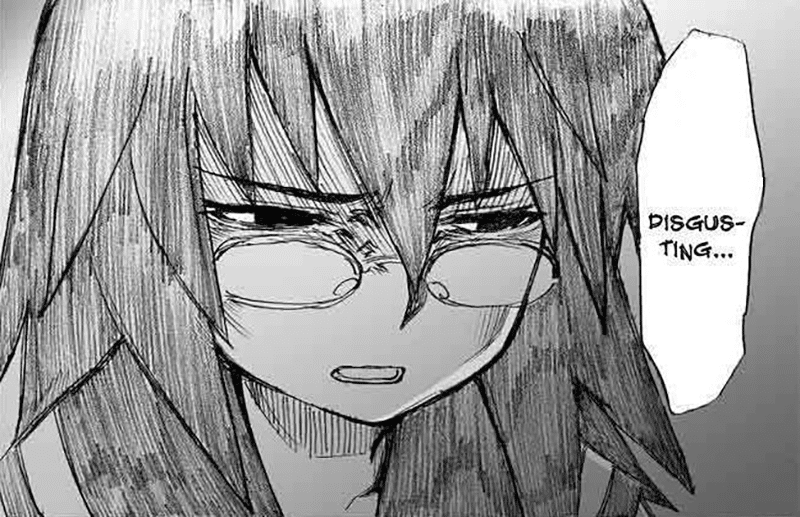
In its earlier chapters, Onani Master Kurosawa’s rather humorous and considered a parody of Death Note. Before long, however, the story matures and becomes one of the most inspiring coming-of-age tales in the entire industry.
The reason this manga’s so good is mostly because of its characters. Especially Kurosawa stands out as one of the best, most believable and eventually likeable characters in all of manga. He might start out as an anti-social pervert, but develops tremendously.
For all his faults, he’s an extremely relatable character, and his development is incredibly well done. We’re not merely witnessing what happens, or how he feels, we learn to understand him. There’s a sort of intimacy between reader and Kurosawa that makes this such an amazing manga. This is also true for many of the side-characters, like Kitahara, Takigawa and even Sugawa.
Onani Master Kurosawa’s one of the most amazing manga I’ve ever come upon. What started out as a perverted joke manga about masturbation turned into a sweet and complex coming-of-age tale.
Biomega
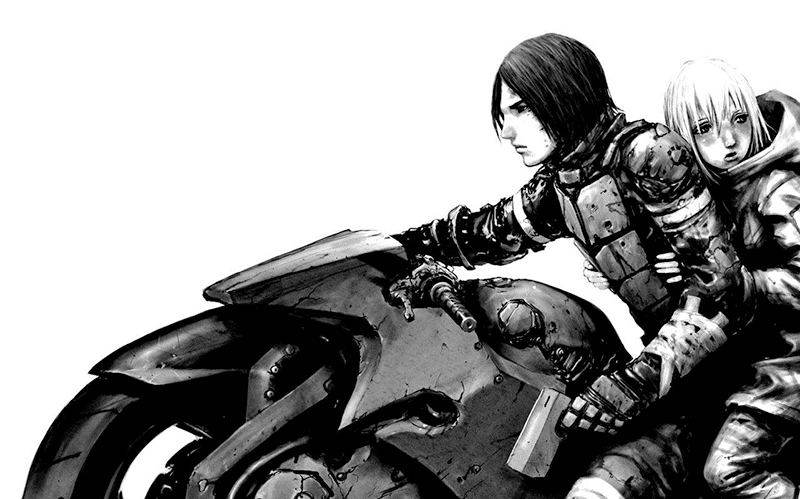
Tsutomu Nihei’s Biomega’s a mixture of science-fiction, cyberpunk and zombie apocalypse.
Zouichi Kano and his AI companion, Fuyu Kanoe, are sent out to retrieve a human immune from the N5S virus. This virus is rapidly spreading across the world and all infected by it become zombie-like beings known as drones.
As the story progresses, we’re introduced to various characters and factions. The most notable of them is the DRF, under the leadership of Niardi.
Biomega’s set in a futuristic world and full of cyberpunk madness. Tsutomu Nihei’s art is nothing short of gorgeous. It’s gritty, raw and features his typical, detailed, wide-reaching architecture. It’s a world populated by stunning cybernetic horrors and crazy futuristic technology.
Biomega stands out amongst other manga in terms of pacing and storytelling.
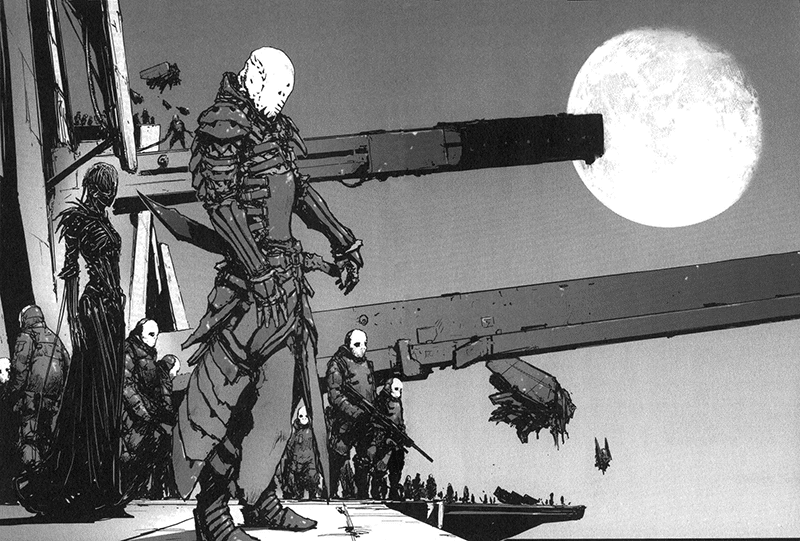
Biomega’s pacing’s insane. The first half of the manga consists almost entirely of action and is incredibly fast paced. While the action’s always fluid, the pacing can make it hard to keep up with what’s going on in the manga’s story.
Even more so than Blame! Biomega’s story’s almost entirely told via visuals. A division between art and story’s impossible.
Biomega’s most notable, but also problematic part, however, is a shift that happens in the middle of the manga. The setting, the atmosphere, and even the art style change vastly in its second half. What starts out as a fast-paced cyberpunk apocalypse becomes a somber, cyberpunk-fantasy story. Another problem’s the ending which brings the story to a close, but feels strangely out of place and somewhat rushed.
Still, while Biomega has its problems, and the story can be weird, it’s still an amazing manga. I highly recommend it to any fan of science-fiction and especially cyberpunk.
Smuggler

Smuggler’s a short, one-volume manga by Manabe Shohei, but also his best work to date.
Yosuke Kinuta’s a failed actor. After he landed himself in serious debt, he’s forced to work as a smuggler and become part of a corpse disposal crew. Trouble brews when the crew gets involved in a mob war and two deadly Chinese assassins join the fold.
Smuggler’s an amazing manga and one of the best in the thriller and crime story. It’s a story that can best be compared to the movies of Quentin Tarantino and Guy Richie.
It features a cast of over-the-top characters, and its fair share of fantastic action. Especially Spine and Guts, the assassins, and Joe, the leader of the corpse disposal crew, stand out by being absolute badasses.
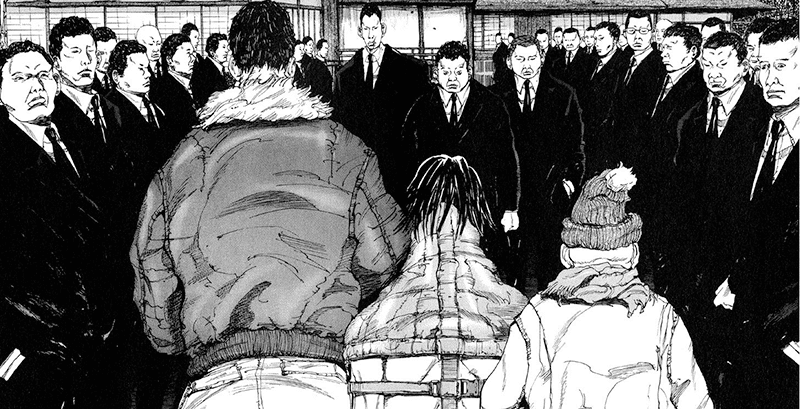
Of all the characters, however, Kinuta stands out the most. He’s the most relatable of all the characters, not a madman, but a badass in his own right as we learn in later parts of the story.
The manga even features the occasional scene of subtle humor, but they never ruin the overall, serious feel of the story.
Manabe Shohei’s typical art style is noticeable at first glance. The manga’s setting is gritty and dirty. The characters are rendered uniquely but realistically. Yet, it gives them a somewhat ugly look compared to those in other manga.
Overall, Smuggler is a gem that few people might know about. It’s an amazing manga and a disturbing crime story full of memorable and badass characters.
If you’re a fan of crime stories, read Smuggler.
The Climber
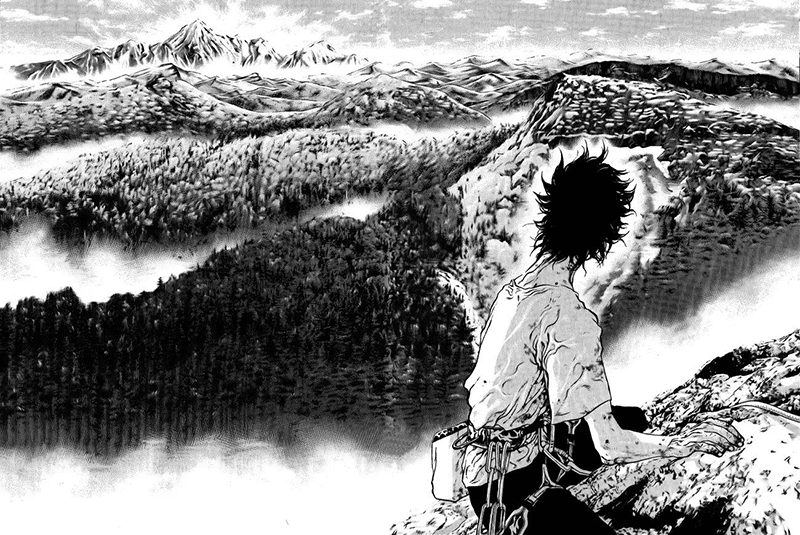
There are few manga as beautiful and well-written as Shinichi Sakamoto’s The Climber.
Buntaro Mori’s a lonesome teenager, but when a classmate challenges him to climb the school building, he doesn’t hesitate. This moment awakens his passion for climbing.
The Climber’s a work focused heavily on perseverance and dedication. It’s almost as if this manga’s saying: if you work hard enough, you can do anything.
What makes this such an amazing manga, however, is the presentation and the main character. While The Climber’s a story about climbing, it uses the sport as a vessel for a largely character-driven narrative.
The manga focuses more on Mori’s development as a person than on anything else. He’s someone with problems, but as he climbs mountain after mountain, he also overcomes his personal problems. This dualism is masterfully done.
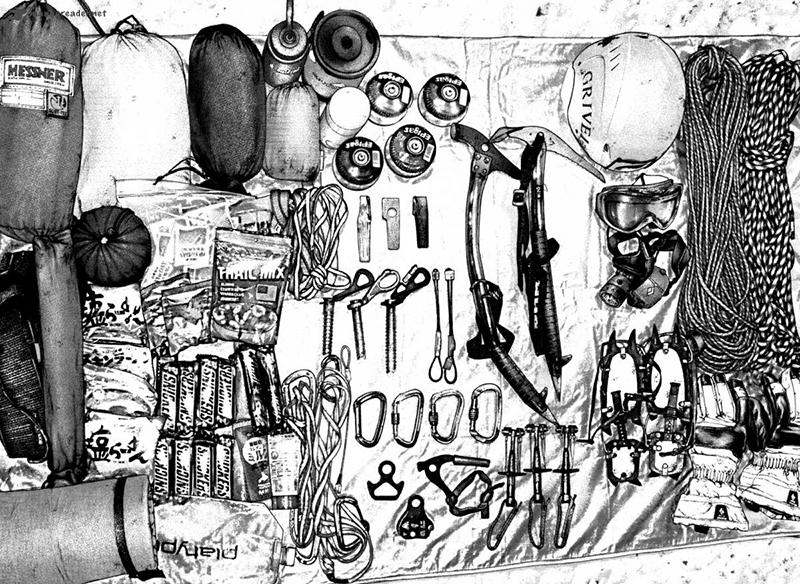
The Climber’s art is some of the best in the entire medium. It’s nothing short of breathtakingly beautiful and full of stunning page-spreads of mountain ranges.
YEt, there are also glimpses of poetic beauty to be found. Many pages are entirely without dialogue, showing us nothing more than Mori climbing. In these scenes, the visuals speak for themselves, and it’s a thing of beauty. Even move, these pages often contain metaphors, allusions, and literary passages. It makes The Climber a work of profound joy and character without ever feeling pretentious.
The Climber is a work of art, of beauty. It’s more than a manga about climbing, but a character-driven narrative and coming-of-age story. While it can be a heavier read and features its fair share of unpleasant experiences, it is always beautiful.
Me and the Devil Blues

Me and the Devil Blues is a manga by Akira Hiramoto, retelling the life of Robert Johnson, set in the American South.
Robert’s a dabbling musician and wants nothing more than to learn how to play the blues. Yet, he’s no good at it. One day, he learns of a certain urban legend. If you play at a crossroad at night, the devil will visit you and, in exchange for your soul, he’ll make you a genius blues player.
Robert, desperate, does as the legend says and his life changes forever.
Me and the Devil Blues is an absolutely amazing manga, one of the best I’ve read in years. The art is gritty, but extremely detailed, making it a strangely beautiful manga.
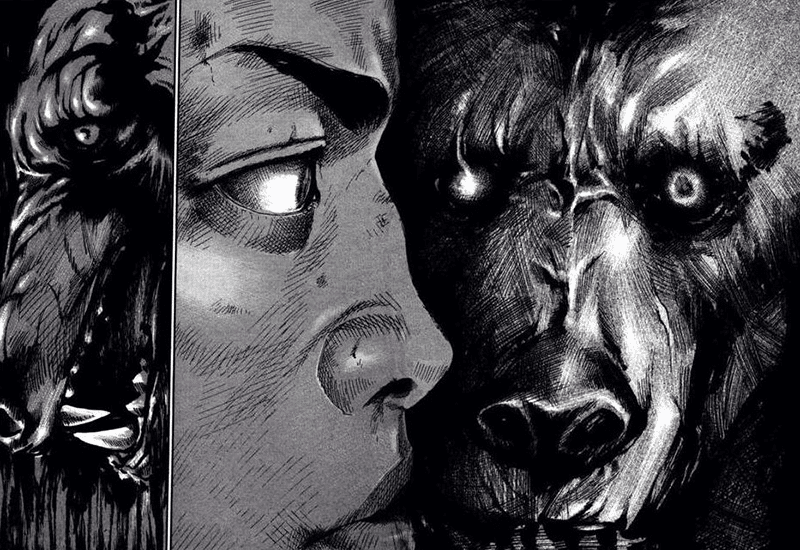
The setting, the American South during the 1930s, is extremely well portrayed, giving the manga unique, western feeling. Even the racism, the division between white and black can be clearly seen.
Another fantastic element is the manga’s characters. While RJ’s a decent enough protagonist, he’s more thrown into events rather than choosing them. The best characters in this manga, however, are Clyde Brown, a complex and likeable character in his own right, and the evil, enigmatic Stanley McDonald.
What makes Me and the Devil Blues such an amazing manga, however, is the atmosphere. There’s no other work I encountered with so much tension and suspense. You can’t seem to catch your breath for an entire chapter, or even multiple chapters at a time.
Me and the Devil Blues is another gem of, and one of the most suspenseful and well-written manga out there.
Jojo’s Bizarre Adventure Part 7: Steel Ball Run
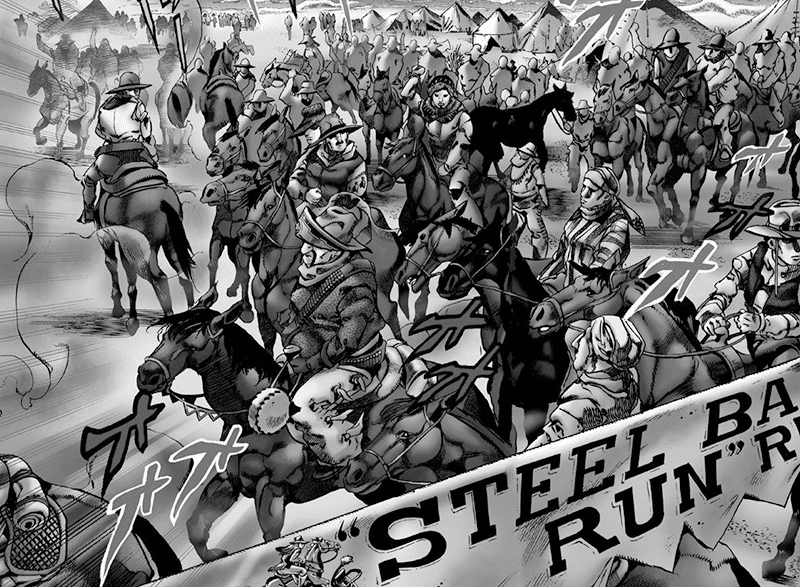
Who hasn’t heard of Jojo’s Bizarre Adventures? Hirohiko Araki’s masterpiece is one of the longest running and most amazing manga out there.
Its first part, telling the story of Jonathan Joestar, is rather reminiscent of Fist of the North Star. During its third part, however, Hirohiko Araki introduced Jojo’s Bizarre Adventure’s most unique element, Stands. They can be described as physical manifestations of a character’s life force, giving them various superhuman powers.
While all parts of Jojo’s Bizarre Adventure are worth reading, Part 7: Steel Ball Run, is widely considered its best.
It depicts a cross-country horse race across the United States, the Steel Ball Run.
Johnny Joestar, a crippled former horse racer, merely comes to watch the start of the race, but encounters a man named Gyro Zeppeli.
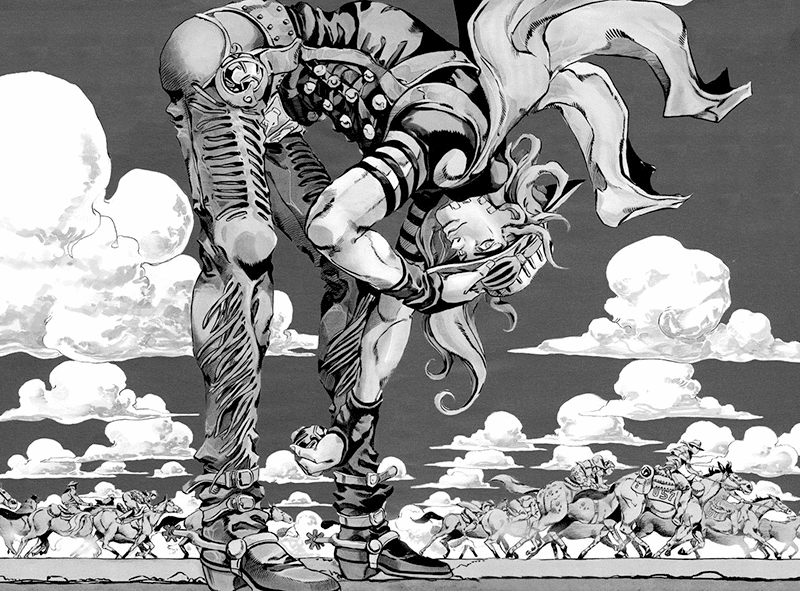
The two clash and have a dual in which Gyro uses fantastic powers. These powers allow Johnny to stand up again, and he promptly decides to compete in the race.
Stell Ball Run feels like the culmination of anything Hirohiko Araki’s done before.
Where it stands out from other parts in Jojo’s Bizarre Adventure, is in the setting and story. While Johnny and Gyro are competing in the Steel Ball Run, they have to not only fight various adversaries but also uncover an overall plot. This dualism creates multiple layers of tension and makes the manga much more interesting.
Still, Ball Run’s art is nothing short of perfection. It’s much more detailed than earlier parts of Jojo’s Bizarre Adventure. Battles look amazing and characters and Stands are rendered in Hirohiko Araki’s usual style.
Jojo’s Bizarre Adventure Part 7: Stell Ball Run is an amazing manga, a masterpiece and any manga fan should read it.
Vinland Saga

Makoto Yukimura’s Vinland Saga tells the story of Thorfinn Karlsefni. He joined the mercenary group of a man named Askeladd. We soon learn that Askeladd’s responsible for his father Thor’s death, and Thorfinnn only joined his group to get revenge.
When Askeladd learns that the Danish prince Canute has been taken hostage, he hatches a devious plan that should change their lives forever.
Vinland Saga’s a masterpiece and an amazing magna.
It’s set in 11th century Europe and centers on Vikings and Viking culture. While Vinland Saga takes some liberties, it feels mostly realistic. It also doesn’t shy away from portraying the many atrocities committed by the Vikings.
As a manga about Vikings, it’s full of brutal battles, which are presented in all their gratuitous and gross glory. Yet, the manga isn’t so much about brutal battles, but more about Thorfinn and his personal journey. Long parts of the manga are calm and gloomy, focusing heavily on his feelings of guilt and regret.
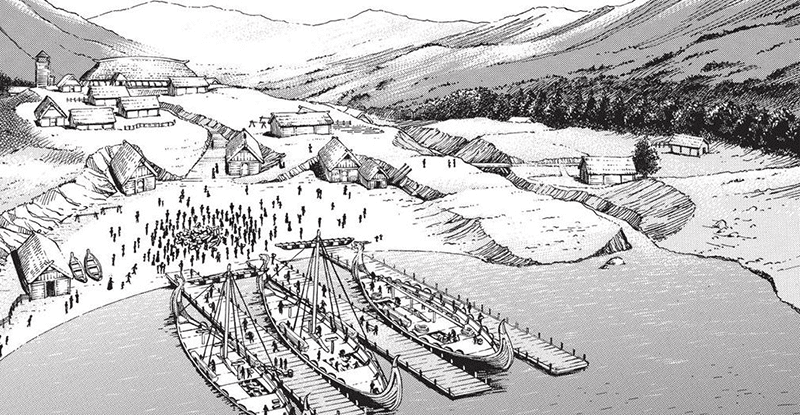
The main reason Vinland Saga’s such an amazing manga, however, is the art and the characters.
The art is nothing short of beautiful and can rival the best manga out there. 11th century Europe looks stunning and all the towns, cities and farmsteads are beautifully illustrated.
Thorfinn starts as a quiet, efficient killer, but grows tremendously and becomes one of the most complex characters in the entire medium. The manga’s best character, however, is Askeladd.
The only character I’ve got a slight problem with is Thorkell. He’s enjoyable and based on a legendary Viking, but he feels a bit too over-the-top.
Overall, Vinland Saga’s an amazing manga that every few others can compare to. I recommend anyone to read it.
Vagabond
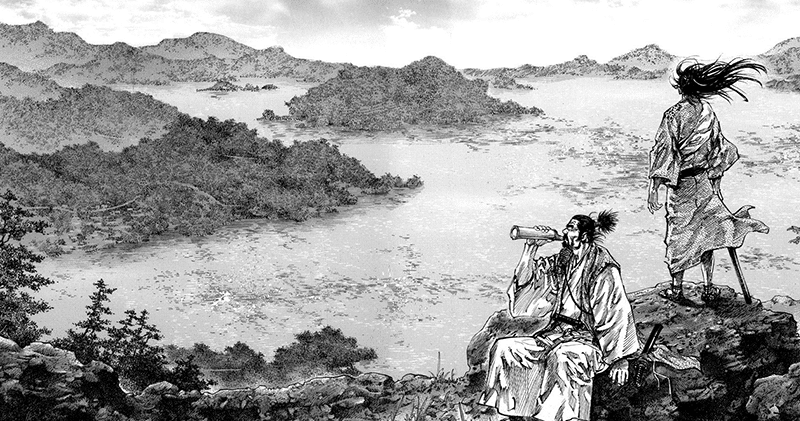
Vagabond by Takehiko Inoue is based on Eiji Yoshikawa’s novel Musashi and tells a romanticized version of the life of Musashi Miyamoto.
Shinmen Takezou joins the battle of Sekigahara. When he returns, however, he’s declared a wanted criminal and after a long hunt, he’s caught. Strung up at a tree and left to die, he’s eventually freed by the monk Takuan. He also gives him a new name, Musashi Miyamoto.
From this point onward, the manga focuses on Musashi’s travels, as he pursues the sword to become ‘Invincible under the Heavens.’
The manga’s absolutely gorgeous to look at and apart from a few exceptions, features the best art in the entire medium.
Vagabond’s a samurai manga, full of stunning battles. They are bloody, gory, and disturbing, but this violence is never glamorized.
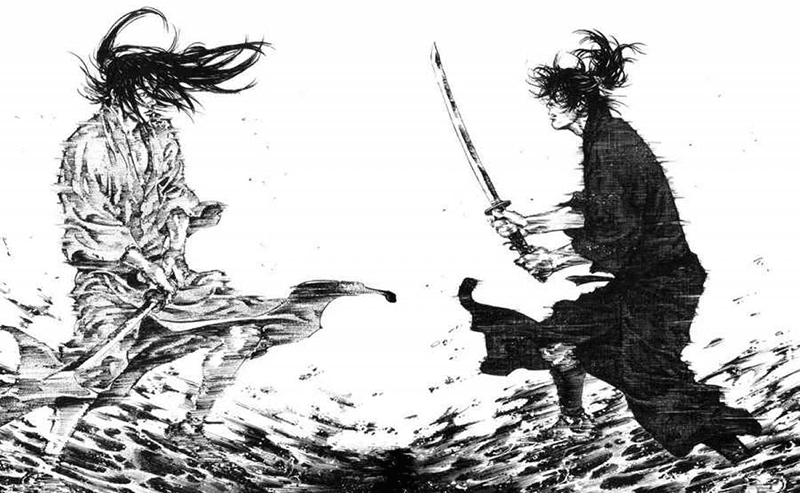
The best thing about Vagabond, however, is the writing and the characters. While Musashi starts out as a demon child, he matures into a calm, philosophical man who questions what it truly means to be invincible.
Vagabond’s the story of Musashi Miyamoto, but also the story of Sasaki Koichiro. He was another brilliant swordsman of the time and long parts of the manga are dedicated to his life. Many of these parts are as well-written and interesting as those focusing on Musashi.
The way Vagabond’s story is told is another thing that’s extremely enjoyable. The manga often switches between Musashi and Koichiro, or even Matahachi, Musashi’s former best friend, showing each characters unique path.
Nothing much needs to be said about Vagabond. It’s one of manga’s greatest achievements and an absolutely amazing manga.
Ultra Heaven
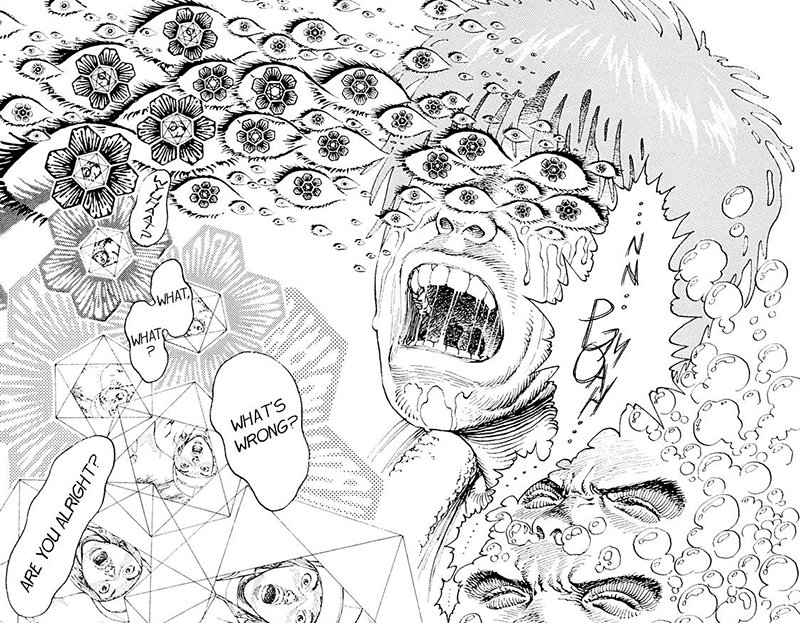
Ultra Heaven’s a psychedelic manga and one of the greatest achievements in the entire medium. Reading it is an experience unlike any other.
Ultra Heaven’s set in a dystopian future in which feelings can be artificially created and consumed like drugs.
Our protagonist Kabu’s a junkie and addicted to these types of drugs. He soon finds out about a new illegal substance called Ultra Heaven. When Kabu meets a man who sells it, he accepts.
When he takes the drug, we’re presented with one of the most creative depictions of a trip ever. The art, the presentation, and the visuals are unlike anything I’ve seen in the medium.

What makes Ultra Heaven such an amazing manga is the art. The world’s presented to us in a highly detailed, and gritty art style and all its characters look highly unique. What makes Ultra Heaven so special, however, is the way it showcases drug usage and the hallucinations that come with it.
Kabu’s altered state of mind, be it caused by drug usage or later meditation, is represented by similarly distorted panels. What were once organized, rectangular panels, begin running into one another before they turn into nothing but pure chaos. This gives the entire manga a surreal, almost crazy feeling, one of disorientation, but always perfectly portrays what’s going on.
Ultra Heaven’s first and second chapter are weird enough, but things get truly crazy in the third one. While the earlier two chapters focused on drugs, drug usage, and the resulting trips, the third and final chapter focuses on the mind-altering effects of meditation.
Ultra Heaven’s a visual masterpiece unlike anything I’ve seen before. It’s an incredibly amazing manga, one I recommend to anyone.
Uzumaki
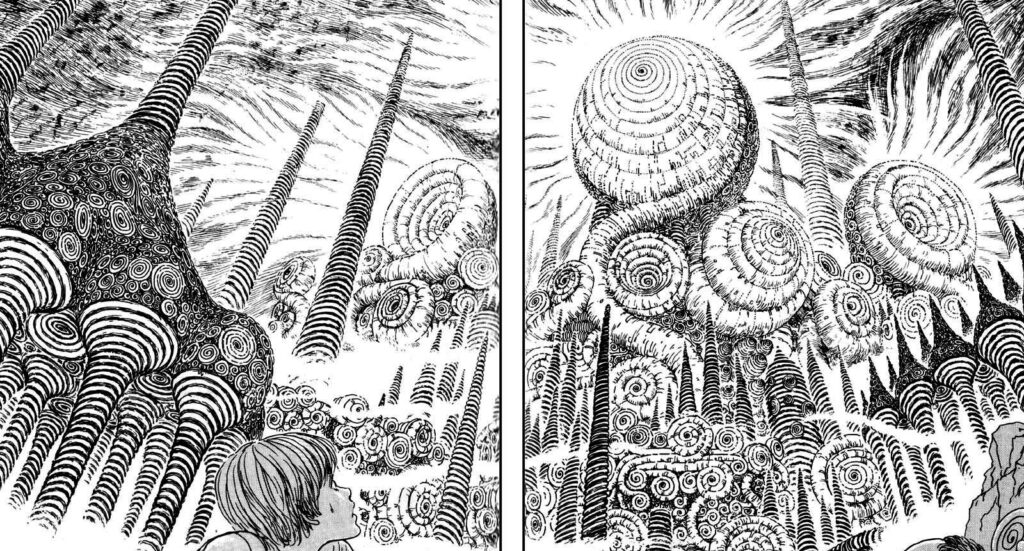
Uzumaki’s Junji Ito’s magnum opus and one of the scariest, most amazing manga out there. If you want to learn more about his work, check out my list of the best Junji Ito stories, or my ranking of all Junji Ito books.
While there are many bizarre and disturbing manga out there, Junji Ito’s Uzumaki deserves a special place amongst them.
The manga’s set in the small coastal town of Kurouzu-cho, which has become infested by spirals.
Kirie Goshima and Shuuichi Saitou, two teenagers living in Kurouzu-cho, become involved in various disturbing, spiral-related incidents.
As so often, Junji Ito wastes no time. Uzumaki’s opening chapter is amongst the most disturbing in the entire manga and portrays Shuuichi’s father’s descent into madness. At first, his obsession only centers on collecting spiral-shaped items. Before long, however, it turns weirder, inward, and eventually culminates in one of Uzumaki’s most famous and disturbing pages.

Where Uzumaki stands out, however, is in its unique premise. Other horror manga feature twisted creatures, ghosts or serial killers. Uzumaki, however, has no feasible antagonist. There’s only a concept, the spiral, that hangs over the town as an omnipresent curse.
Uzumaki shines the most in his presentation. Junji Ito’s first of all, a visual artist, and Uzumak is where he’s at his best. The art is stunning and all of Junji Ito’s disturbing imagery is presented to us in glorious detail. We see people as they are being changed, twisted and warped into spiral-like horrors. While Uzumaki’s full of blood and copious gore, all of this horror is presented to us in a way that’s both unique and creative.
Uzumaki’s one of the most disturbing and amazing manga out there, one of horror’s greatest achievements and a manga anyone should read.
Blame!
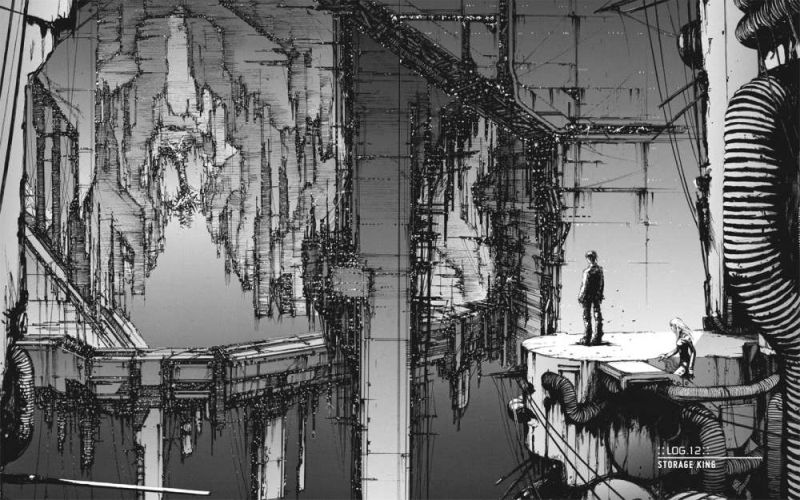
Blame! is a science-fiction, cyberpunk epic by Tsutomu Nihei.
It follows Killy, as he travels the City to find a human with Net Terminal Genes. A human such as this could access the so-called Netsphere, the City’s computerized control network. This would allow them to stop the Safeguard from exterminating what remains of humanity and stop the chaotic growth of the City.
Blame! stands out because of its art, world-building and storytelling. If you want to learn more about this, I urge you to read my detailed article on Blame!
Blame!’s set in a giant labyrinth of concrete and steel, a technological wasteland of mind-boggling mega-structures. It’s vast, seemingly endless, and Nihei showcases it by wide, distant shots illustrated as stunning panels or page spreads.
Yet, the City’s also home to various cybernetic horrors. There are cyborgs, the autonomous Builders who still continue construction of the City, and the Safeguard. All of them are unique, rendered in stunning detail and, at times, nothing short of grotesquely terrifying.
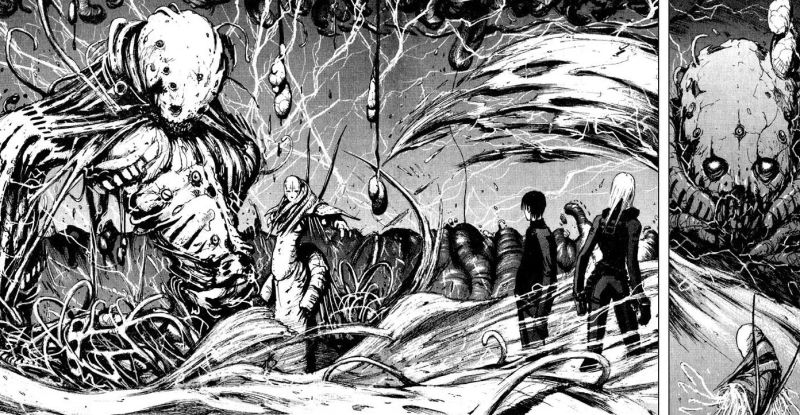
While Blame!’s an action manga, full of enormous explosions and battles, it also has its calmer moments. Sometimes, entire chapters are dedicated to nothing but Killy traveling through the City.
Blame!’s storytelling is mostly visual. Chapters rarely feature any dialogue and many important events are shown by nothing but Tsutomu Nihei’s art.
The biggest problem with Blame!’s the story. It can be rather confusing and might require multiple read-throughs. This, however, is caused by the reluctance of dialogue and Nihei’s style of world-building. It’s only in bits and pieces that more about Killy, his mission and the world’s revealed.
Still, Blame!’s a visual masterpiece, and one of the most unique manga on this list. I highly recommend it to any fan of science-fiction, technological horror and cyberpunk.
Berserk

Rest in peace Kentaro Miura, thanks for sharing your gift with the world.
Berserk is a dark fantasy manga which tells the story of Guts, the Black Swordsman. He’s out on a quest for revenge against demonic beings known as apostles, and the man named Griffith.
At first glance, Berserk might appear a simple story. Nothing but the tale of a man fighting monsters with a sword as tall as himself. This, however, couldn’t be more wrong because Berserk’s one of the most complex and well-written manga of all time. This is first noticeable during the Golden Age arc. It’s here we learn more about Guts’ past, but also about Griffith.
The Golden Age arc shows us how complex these two characters are, but also how complex their relationship is. Kentaro Miura masterfully shows how their relationship comes to be, tests it and ultimately severs it.

It’s because of these two characters that Berserk’s such an amazing manga. We get not only to know our two characters but also their goals and wishes, and how these influence their actions.
Yet, Berserk’s most popular for its art. Kentaro Miura was one of the greatest masters of the craft. There are few other mangaka who could compare to Miura when he was at his best. A single page of Berserk often contains more details than entire chapters of other manga.
This art truly shines in Berserk’s monster design. All the apostles are both gorgeous and terrifying to look at. There’s a grotesque beauty to these twisted monstrosities.
Berserk’s without a doubt, one of the greatest, most amazing manga of all time. It’s at the peak of the medium for a reason and any manga fan should read it.
Blade of the Immortal
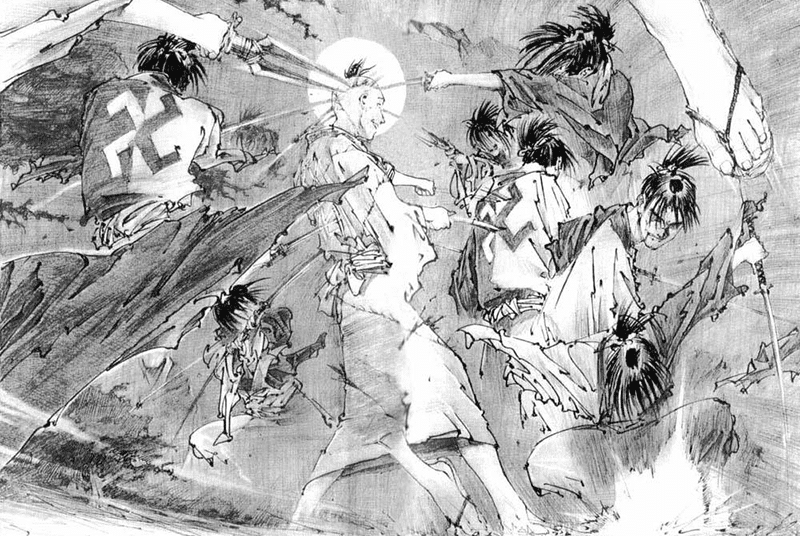
Blade of the Immortal by Hiroaki Samura’s my favorite manga of all time.
We get to know Manji, the infamous ‘Hundred Man Killer.’ To punish him for this deed, an eight-hundred-year-old nun placed bloodworms in his body. Thus, he’s rendered immortal. To atone for his crimes, and to free himself of the curse of immortality, Manji vows to kill one thousand evil man.
Soon after, we’re introduced to sixteen-year-old Rin Asano. Her parents were murdered by Kagehisa Anotsu, the leader of the Itto-Ryu. When she meets Manji, she begs him to help her get her revenge.
Manji agrees and begins his travels with Rin.
While the manga’s premise is simple, it becomes more complex when various other factions are introduced.
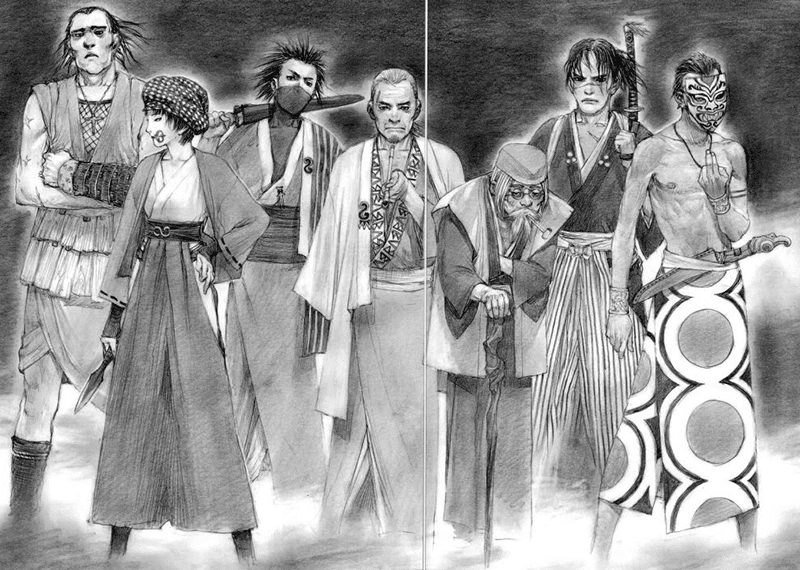
What makes Blade of the Immortal such an amazing manga are its characters. While Manji and Rin are great protagonists, and develop tremendously over the course of the manga, Blade of the Immortal features many other excellent characters. The greatest of them is Anotsu Kagehisa, who’s the most complex character in the entire manga. Others are Taito Magatsu, Makie Otono-Tachibana and Shira.
Another testament to the manga’s greatness is that there’s no clear distinction between good and evil. All the characters have their own circumstances, goals and reasons for what they are doing. Anotsu Kagehisa might be the story’s chief antagonist, but that’s only because Manji and Rin are our protagonists.
Blade of the Immortal’s high point, however, is the outstanding fights. They are full of suspense, rich in action and nothing short of brutal. They are amongst the best in the entire medium.
Blade of the Immortal’s an amazing manga, and one of the greatest samurai manga of all time. Any fan should read it.
25 Fantastic Manga Anyone Should Read
Storytelling is something dear to me, be it books, stories published online or manga. Especially manga is a medium I’ve loved for years. Fantastic manga tell not only a story, but often combine it with great visuals.
What makes them so intriguing is the combination of cultural differences, unique stories and visuals.
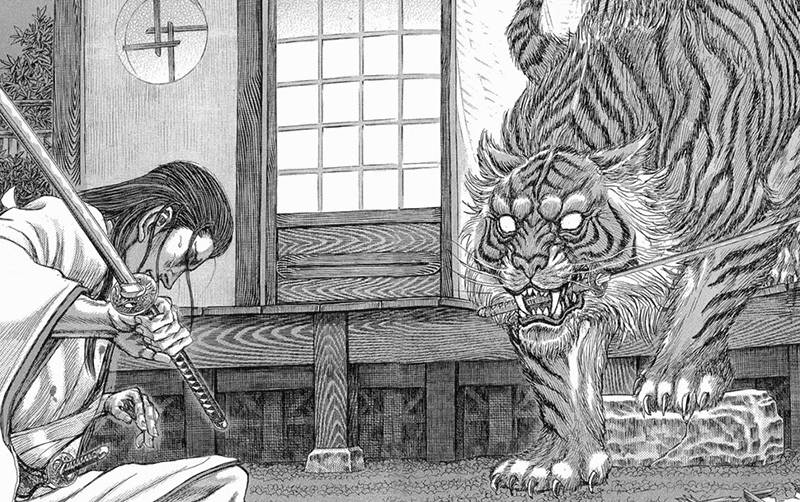
Over the years, I’ve read hundreds of manga, but their quality can vary. That’s the reason I put together a list of twenty-five fantastic manga. Some titles might be more popular than others, but I believe there are also some hidden gems on this list.
If you’re looking for more manga recommendations, I urge you to check out my articles on the best horror manga, the best seinen manga, and the best shonen manga.
While I try not to go into too much detail regarding the plot, I still like to give a spoiler warning. Sometimes it’s unavoidable.
So, here are twenty-five fantastic manga anyone should read.
Dragon Head
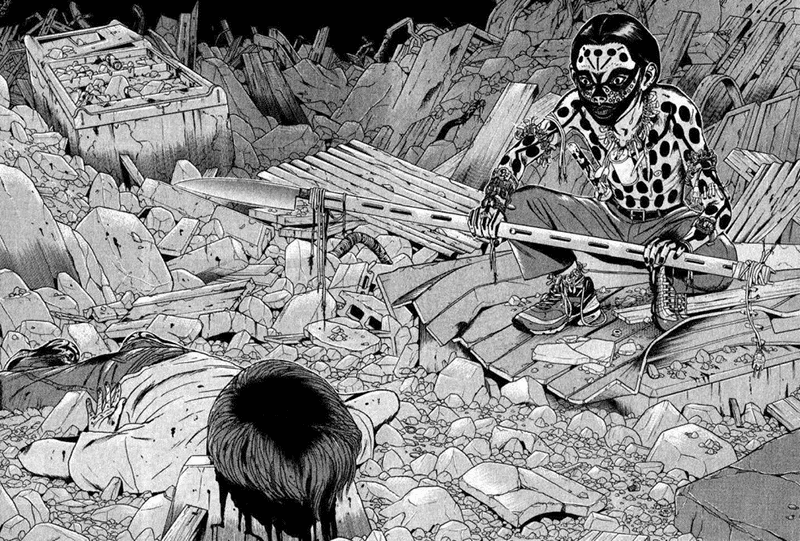
Minetaro Mochizuki’s Dragon Head is a fantastic manga depicting the apocalypse.
After a violent train wreck, our protagonist Teru has to watch many of his classmates die in front of his eyes. With two other survivors, Ako and Nobu, he tries to leave the tunnels. The lack of light and food, however, soon impacts their fragile psyche.
Eventually, they make it out, but have to discover that the world’s changed and become much more dangerous than the tunnels.
The greatest part about Dragon Head is the atmosphere. There’s a constant sense of suspense, but also a feeling of all-encompassing hopelessness to the world.

Dragon Head’s characters are realistic, show genuine emotions and act the way you’d expect people to act during a disaster. They are afraid, panic, and even go crazy.
The art in Dragon Head is fantastic and makes it stand out amongst other similar manga. We witness a destroyed, hapless world in all its terrifying glory. We see firestorms, half-collapsed tunnels and even entire derelict cities.
Dragon Head’s biggest problems, however, are the pacing and the ending. In later parts, the manga’s pacing drags on because it focuses more on character introspection. As for the ending, Dragon Head simply ends. We don’t get any answer, no resolution, it’s just over.
And yet, Dragon Head is a fantastic manga, and brings forth one of the most realistic and intimate depictions of the world’s end in the entire medium. A must read for fans of survival and disaster manga.
Claymore
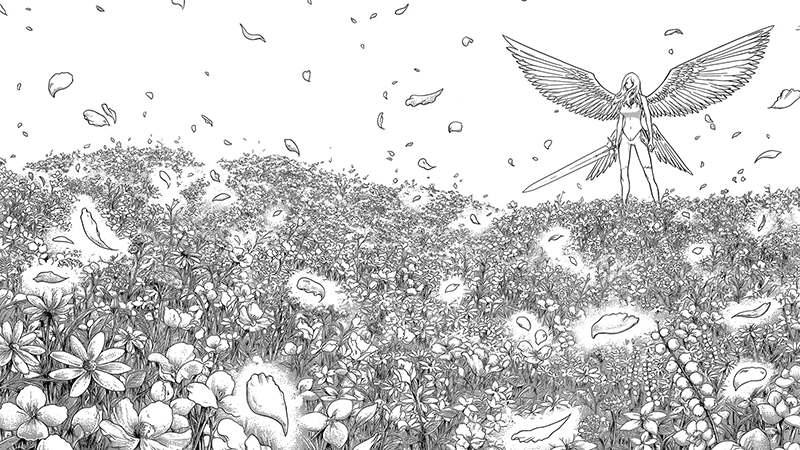
Claymore’s a dark fantasy manga by Norihiro Yagi.
It’s a fantastic manga set in a medieval fantasy world populated by Yoma, monstrous beings with an insatiable hunger for human flesh.
Claymores are female warriors tasked with killing these Yoma. Clare, our protagonist, is one such Claymore.
At first the magna follows an episodic structure, as Clare dispatches various Yoma. Eventually, a main plot is introduced and we learn more about Clare, her caretaker Teresa, and the ominous being known as Priscilla.
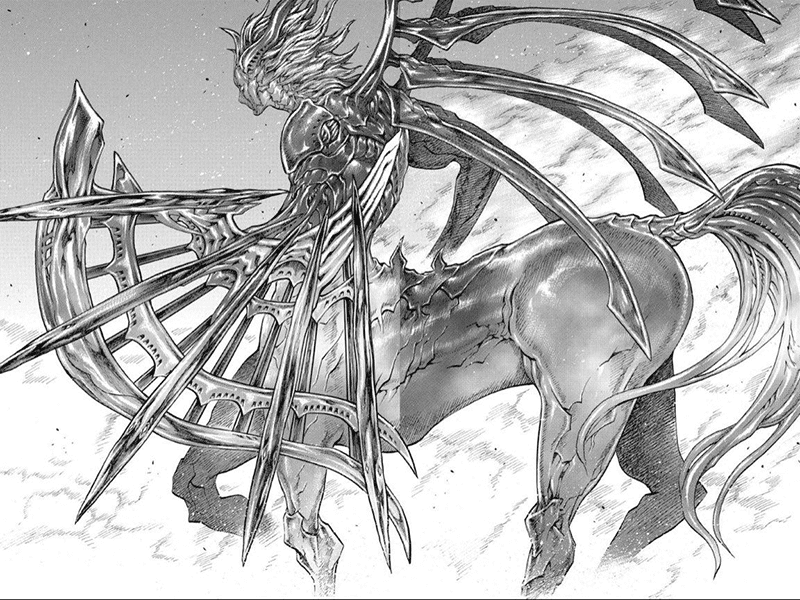
While Claymore’s main story is intriguing, the manga’s biggest selling point is the art. The world’s beautiful, comprising beautiful landscape and detailed cities. Where it clearly stands out, though, is in terms of creature design. It features some of the most stunning monsters in the entire medium.
Yet, there are some problems with Claymore. It features many battles, but sometimes, they are hard to follow and a bit uninspired. Claymore’s world is beautiful, but it seems hardly used.
Another is the principal antagonist. While we learn about her early on, she remains an ominous presence for most of the manga, and only comes into play near the end.
The biggest problem with Claymore, however, is the ending. It contains a rather questionable revelation that felt more like a cop-out than anything else.
Even though Claymore’s a fantastic manga, one of the best in the fantasy genre and features some of the best art in the entire medium.
Attack on Titan
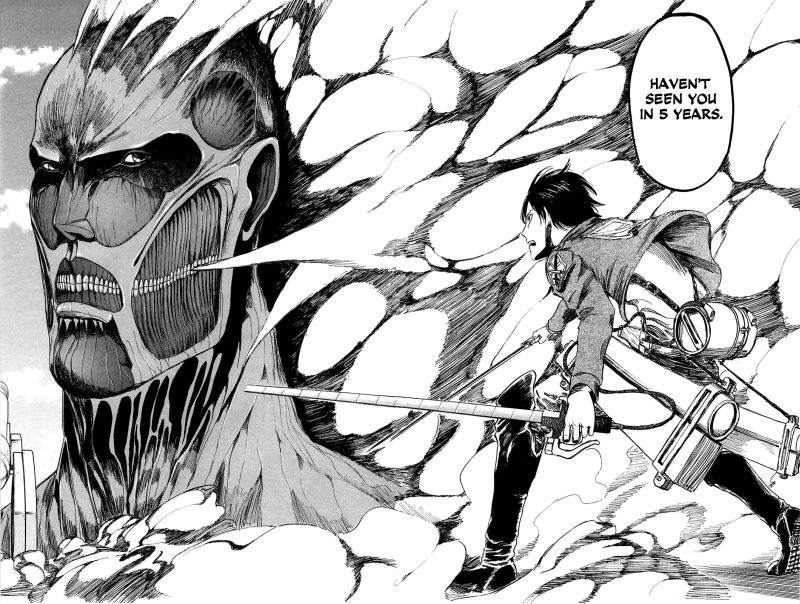
Attack on Titan is one of the most popular manga on this list.
It’s another dark fantasy manga. All of humanity’s confined to a single city which is under the constant thread of being eradicated by the titans.
Eren Yeager is a young military recruit who gets the power to turn himself into a titan. He soon joins the survey corps and the fight to destroy the titans for good.
While the story’s premise is rather simple, it gets more interesting the longer the manga continues.
Attack on Titan’s art starts out as barely average, but Hajime Isayama improves vastly and from volume six onwards, it’s one of the better drawn manga series out there. Especially wider shots are often gorgeous to look at.
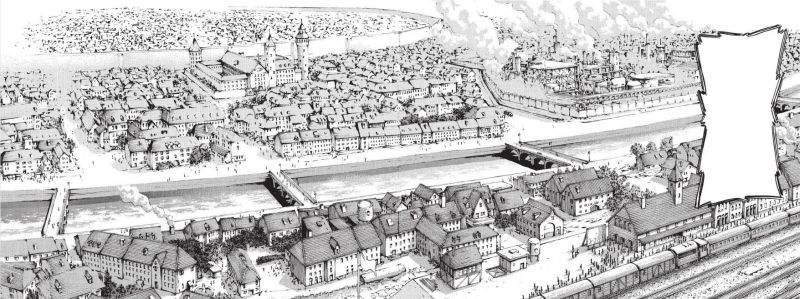
The art truly shines during the manga’s many battles. They are brutal, disturbing, but always fast-paced because of the unique weapons employed by the survey corps.
One element that’s especially disturbing is the design of the titans. Instead of being twisted monsters, they appear as dim-witted, almost simplistic human beings.
My biggest problem with Attack on Titan was certain directions taken in the latter half of the manga. Hajime Isayama made certain choices which expanded the manga’s world vastly, but also took away much of the mystery. From this point onward, the manga, unfortunately, went downhill.
Still, if you’re looking for a fantastic manga with a complex story and unique fight scenes, Attack on Titan’s what you’re looking for.
Annarasumanara
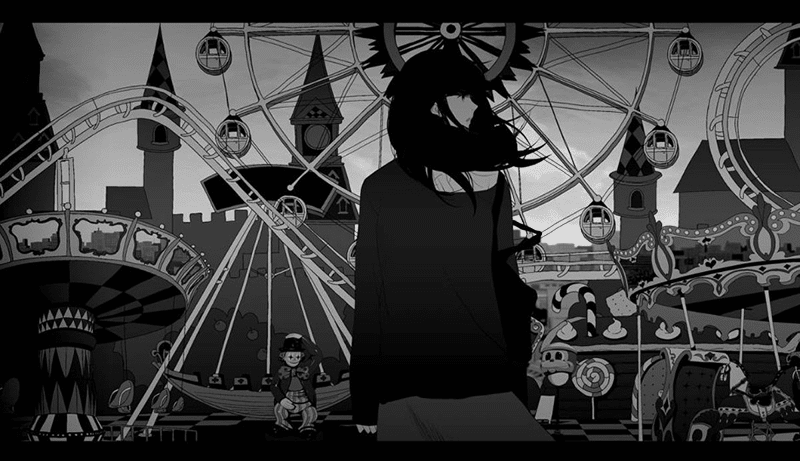
Han Il-Kwon’s Annarasumanara is one of the most beautiful and heartfelt stories I’ve ever come upon. While it’s a manhwa, I still want to shed light on it on this list of fantastic manga.
In this story, we’re introduced to a magician who lives in an abandoned theme park. Whenever people visit him, he shows them his magic, but only after asking if they believe magic to be real.
Our protagonist, Yoon Ah-ee, is a poor high school student whose life comprises studying, working and taking care of her younger sister. She’s long given up believing in magic.
When she herself stumbles into the abandoned amusement park, she sets out to meet the mysterious magician. This meeting should change her life forever.
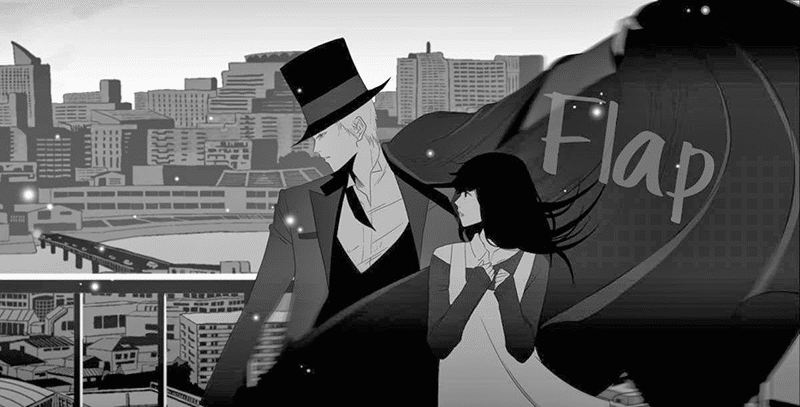
Annarasumanara touches on a variety of complex themes. The most important being that of living up to your own expectations and those of others, but also the question of what life and happiness truly are about.
While magic is a central theme, we find out it’s not so much about magic tricks, but about the magic of life; the beauty we see as children and which we wish to get back as adults.
One thing that’s interesting about Annarasumanara is the art. It’s strange, almost abstract, but also unique. This uniqueness, however, also has meaning to the plot.
While some characters might be a bit out there at first, the more we learn, the more we realize they are actual people with genuine emotions.
Annarasumanara’s a fantastic manga, one I recommend to anyone, and if you read it, you might learn that maybe real magic actually exists.
Chi no Wadachi

Chi no Wadachi’s a fantastic manga. It centers on various psychological themes, such as drama, abuse, and manipulation.
Seichi Osaba is a typical young boy; he’s got friends, a crush and loving parents. His mother, however, is extremely overprotective, but it doesn’t seem too big a concern.
All that changes during a hike with his extended family. After a certain incident, his life changes forever, and from here on out things only spiral out of control more.
Chi no Wadachi’s a slow manga. Chapters seldom include more than a few events, sometimes nothing more than a single interaction between two characters. This stifling progress, however, adds so much more to the tension and suspense.
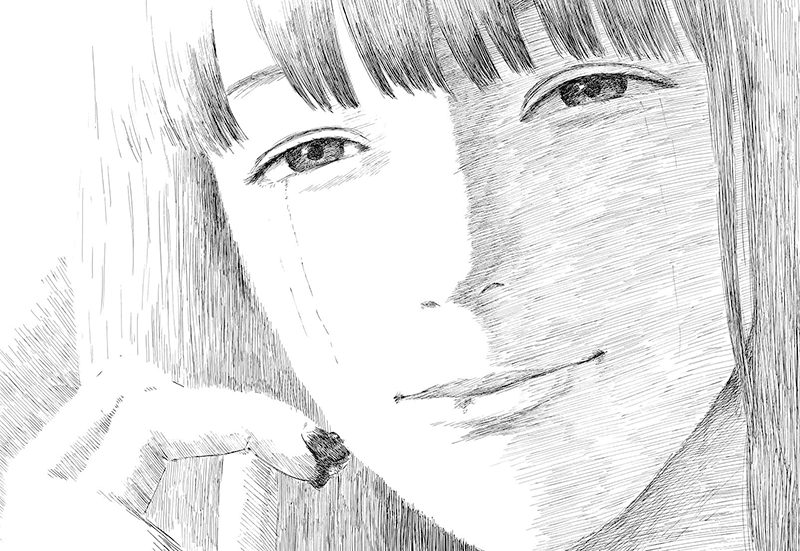
The manga’s full of slow shots, and focuses on even the smallest detail. While this style of storytelling can be oppressive at first, it also makes Chi no Wadachi such a fantastic manga.
Chi no Wadachi’s art is absolutely stunning. While it can be dense at times, and detailed at others, it always conveys the story’s mood. One detail it focuses on heavily is facial expressions, especially smiles.
The manga’s story isn’t too complex, but it’s told extremely intimately. Seichi’s insecurity and his dependency on his mother can unsettle, while her toxic manipulations are nothing short of disturbing.
Chi no Wadachi’s a fantastic manga, a deep psychological drama that’s presented to us in a way that’s both intimate and unique.
Ouroboros

Yuuya Kanzaki’s Ouroboros is a crime manga that tells the story of two men, Ryuuzaki Ikuo and Tatsuya Danno. When they were children, they both lived in an orphanage under their caretaker, Yuiko. This happy life ended when she was murdered in front of them.
Now, years later, Ryuuzaki works as an investigator for the Shinjuku Police while Tatsuya’s a member of the yakuza.
At first, Ouroboros is told in a more episodic fashion and we witness how the two of them solve various crime cases together.
Eventually, though, we learn what the two of them are truly after. They are searching for the man who murdered Yuiko, and to find him, they each chose their individual path.

This overall plot is Ouroboros’ strongest point. It’s a mystery full of twists and turns that will throw you off constantly and keep you guessing.
Another thing I enjoyed were our two protagonists. They are both interesting and complex. Yet, there are also quite a few fantastic side-characters, for example Mizuki Hibino and Shinichi Chono.
The only problem with Ouroboros is the way the story unfolds. Near the end, the twists became a little too much, and some revelations were quite clichéd.
Overall, though, Ouroboros is an extremely engaging series. While the initial episodic nature can be daunting, the story’s great. If you’re interested in police, crime and conspiracies, read this fantastic manga.
Sanctuary

Sanctuary by Buronson and Ryoichi Ikegami’s a fantastic manga about yakuza, and, oddly enough, politics.
It tells the story of two men, Akira Houjou and Chiaki Asami. In their opinion, Japan’s stagnant, corrupt and ruled by old men who’ve accepted the status quo. Thus, the two of them set out to change the course of the nation.
To this end, they decide to conquer Japan via a two different routes. While Asami aims to become prime minister, Houjou sets his sight on the underworld to seize control of the yakuza.
What I enjoyed the most about Sanctuary were the two alternative plots, one focusing on organized crime, the other on politics.
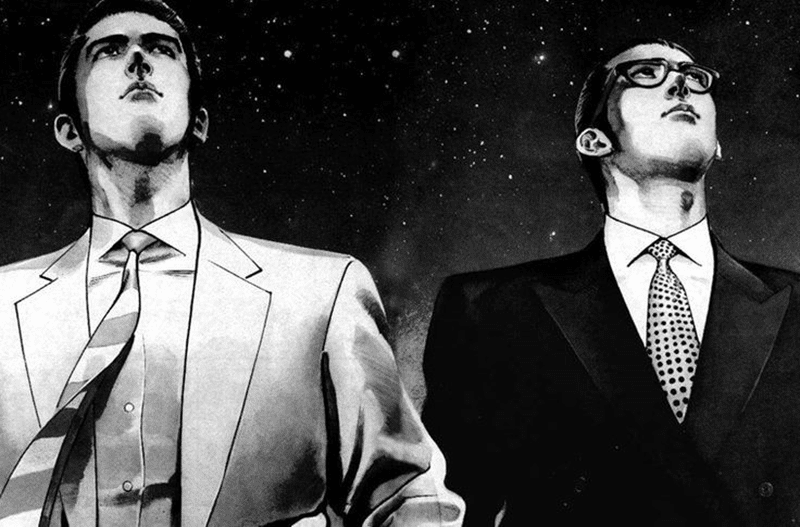
Over the course of the manga, both characters are opposed by a variety of adversaries, be they yakuza bosses, ambitious hot-heads or seasoned diet members. Isaoka, the general of the Liberal Democratic Party, stands out the most. He’s one of the most formidable adversaries in manga.
The biggest problem with Sanctuary is realism. The manga tries very hard to portray the story’s developments as realistic. Especially the countless political shenanigans, intrigues, plans and twists, however, were a bit too unrealistic. This was especially noticeable near the end.
Another problem is the manga’s depiction of women. Apart from one or two exceptions, they were prostitutes or sex objects.
Even though Sanctuary’s a fantastic manga. It might be over-the-top, it might not make all sense, but it’s always suspenseful, full of action and badass characters.
Tokyo Ghoul
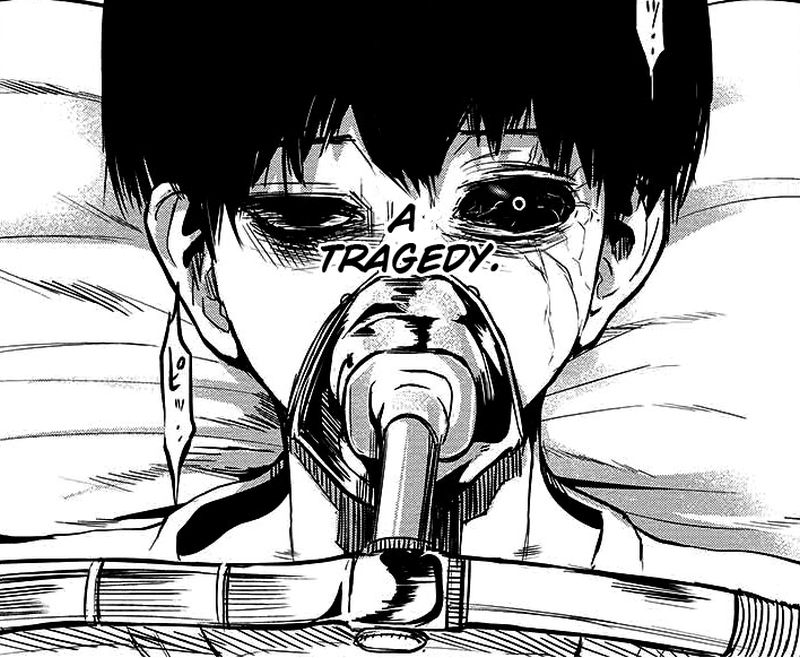
Tokyo Ghoul by Sui Ishida tells the story of college student Ken Kaneki. After he meets the beautiful Rize, his life changes forever. She’s a ghoul and because of her hunger for human flesh, she soon attacks Kaneki. Ghouls are creatures who look just like humans, feed on them to survive and have superhuman powers.
Kaneki’s life is saved by Dr. Kanou, but he learns he’s now part ghoul. He seeks refuge at a café called Anteiku, a safe house for ghouls.
As the story progresses, we learn more about ghouls, the members of Anteiku, but also other groups of interest, such as the CCG and Aogiri Tree.
Tokyo Ghoul’s biggest selling point is the art. The manga’s stunning to look at and comes with great monster design, fantastic backgrounds and an overall gloomy and dark atmosphere.

Another great part is the battles. They are brutal, gory, and fast-paced. Especially the design of the kagune, special weapons or techniques employed by the ghouls, were fantastic. Later parts of the manga, especially Tokyo Ghoul:re, often feature large-scale battles. Those battles, however, are often confusing, and become repetitive in the long run.
The biggest problem with Tokyo Ghoul is the over-usage of certain tropes, the most prevalent that of the tragic past. Almost every character’s backstory’s extremely tragic. This grew old quickly, the emotional impact was lessened, and it felt like more of the same.
Another problem’s the story, especially the ending. Earlier parts of the manga were very engaging, especially those showcasing the dualism between ghouls and the CCG. Later parts, however, dissolved into rather clichéd power struggles. The worst offender’s the ending which felt rushed.
Still, Tokyo Ghoul is a fantastic manga, one of the best in terms of horror, battles and creature design.
One Punch Man
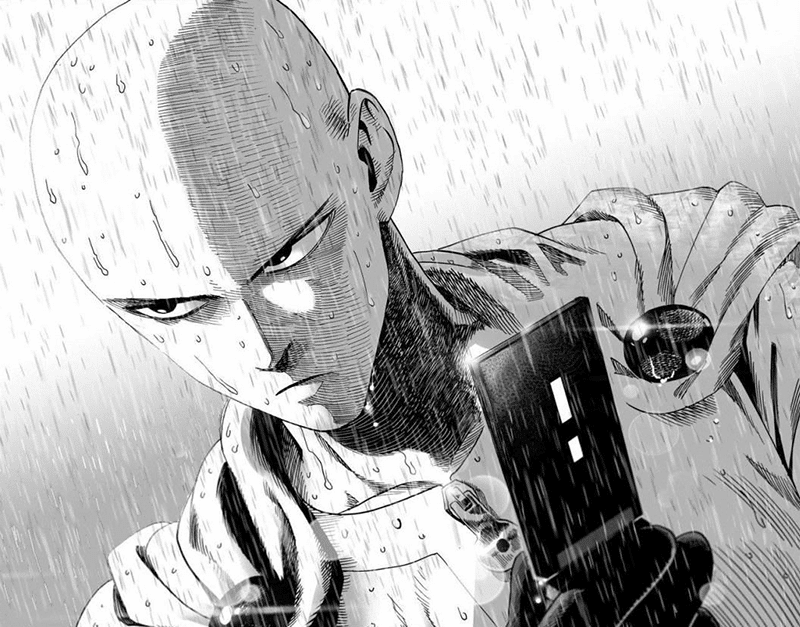
Comedy manga can be hit or miss. Yusuke Murata and One’s One Punch Man, however, stands apart from the rest and is a fantastic manga.
It centers on a single gag, a character so strong he defeats every enemy with a single punch. This character’s Saitama, who becomes a hero to put his strength to good use. Before long, however, he becomes bored and wants nothing more than a real challenge.
With a premise so simple, one would think that the manga would lose its charm quickly, but it never does.
One reason is the expansion of the story and the focus on various other characters and their individual struggles.
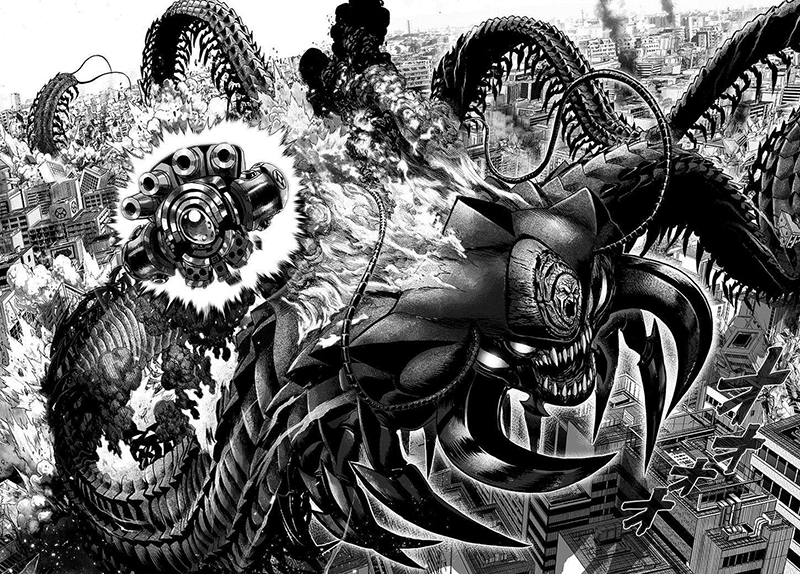
My favorite being King, the world’s strongest man. His scenes are always absolutely hilarious. Other great characters include Fubuki, Genos and especially Garou.
Another reason is the art. One Punch Man is absolutely gorgeous to look at and battles are rendered in stunning detail. While Saitama always ends battles in a single punch, later arcs focus more on the efforts of other characters. Their battles are nothing short of amazing, and come with some of the best art in the entire medium. Especially the most recent, Monster Association arc, focuses heavily on the efforts of other characters. It’s only near the end that Saitama actually takes action in one of the manga’s best fights to date.
Overall, One Punch Man is a fantastic manga, one of the best in the comedy and action genre. While the story might not be the deepest, it’s incredibly entertaining and comes with some of the best art the medium offers.
20th Century Boys
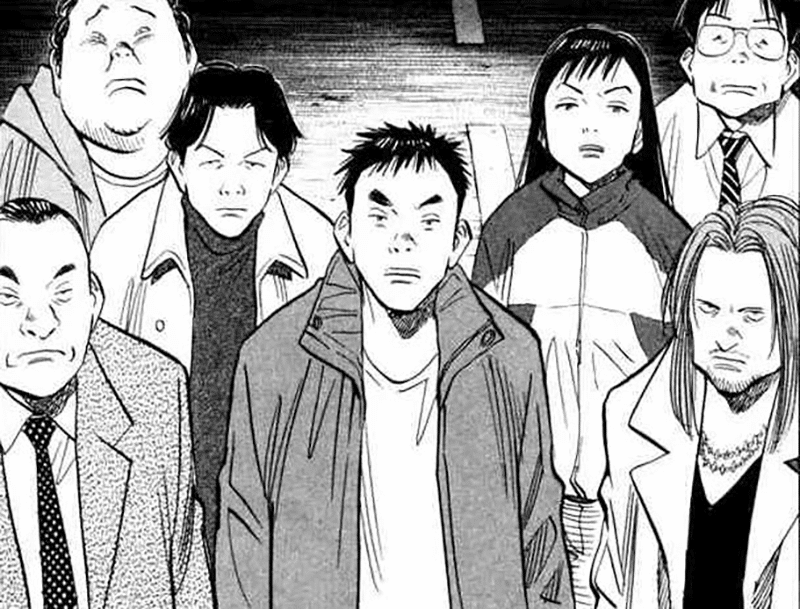
Naoki Urasawa’s 20th Century Boys is a fantastic manga and one of the greatest mystery manga of all time.
The story begins shortly before the end of the 20th century and tells the story of Kenji Endo and his friends. Things are put into motion when Kenji learns that one of his childhood friends committed suicide.
At the same time, a new cult led by an ominous figure known as Friend becomes increasingly popular. Eventually Kenji realizes that this cult, as well as Friend, is related to his childhood. He sets out to reunite with his childhood friends, figure out the truth and stop what he thinks is the coming end of the world.
What makes 20th Century Boys such a fantastic manga’s the mystery, the characters, but most of all the story’s told. Naoki Urasawa’s a master storyteller.

The manga’s plot is divided into three distinct arcs. The first’s set during the end of the 20th century, the second in 2014, the last in the year 3FE, the third year of the friend era. Interestingly, the manga also features flashbacks to the late 60s and early 70s when Kenji and his friends were growing up. Naoki Urasawa masterfully uses those to shed light on certain developments and how they are all related to Kenji’s past.
20th Century Boys features one of manga’s greatest, most well told mystery. It’s a story full of twists and turns that will keep readers guessing who Friend really is.
The biggest problem is that the manga peaks around the middle part and its last arc is easily its worst. This, however, doesn’t mean it’s bad.
If you’re looking for a great mystery manga with a complex and engaging plot, read 20th Century Boys.
Hunter x Hunter
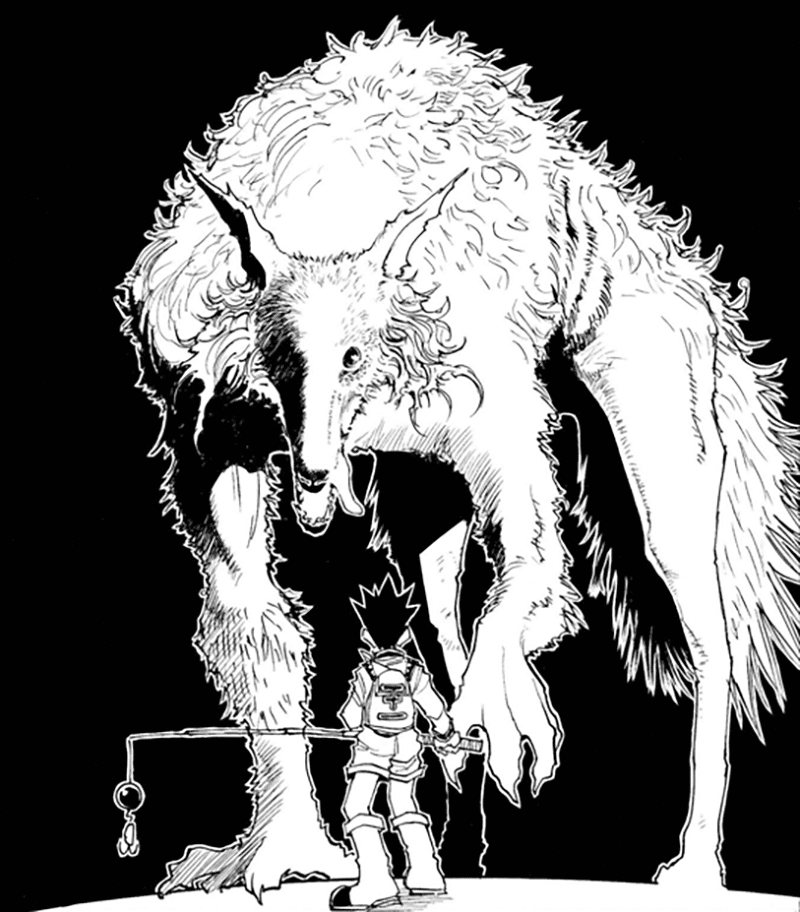
Hunter x Hunter is a fantastic manga and one of the longest, most popular shonen manga out there.
It’s a manga about hunters, licensed treasure hunters with a lot of privileges. Our protagonist, Gon Freecss, a young boy, sets out to be a hunter so he can find his father.
The story starts when he signs up for the Hunter Exam, a series of increasingly hard challenges. During this exam, we’re introduced too much of Hunter x Hunter’s main cast.
While the Hunter Exam arc felt almost too typical for a shonen manga, things got much more interesting in later arcs, especially the York New arc and the Chimera Ant arc.
One of the best parts about Hunter x Hunter is the Nen system. It allows characters to manifest superpowers, but comes with a variety of rules and restrictions.
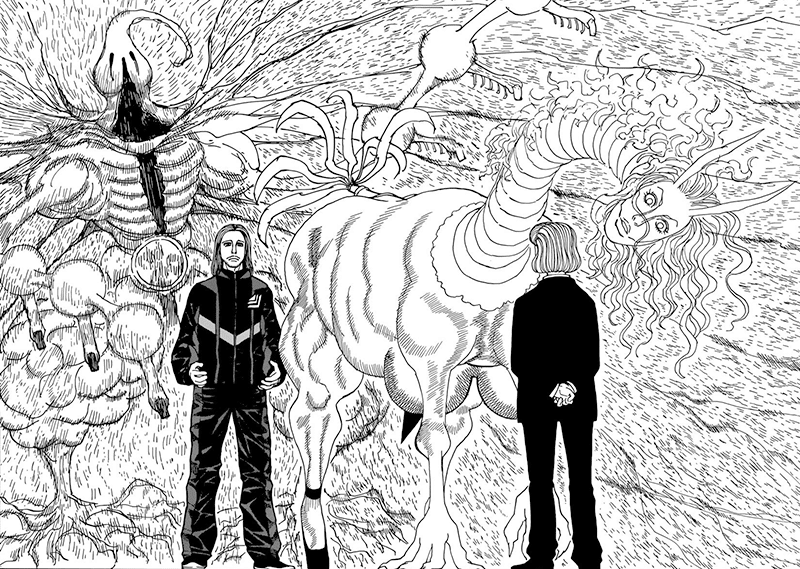
Another great thing is the characters. The protagonists are likeable throughout the board, especially Gon and Killua. The antagonists, on the other hand, are nothing short of fascinating. Hisoka is one of the most outlandish characters in all of manga, and the phantom troop and especially their leader Chrollo are absolute badasses.
Yet, Hunter x Hunter has its problems. The first is the art. At times, Yoshihiro Togashi’s art is absolutely stunning. At others, it’s almost reminiscent of scribbles.
The biggest problem, however, is exposition. Both dialogue and explanations can get a bit out of hand and often seem rather unfocused. This is especially prevalent in the newest arc, the Succession Contest. While it’s easily the most complex arc so far, the sheer amount of exposition can feel overwhelming.
Still, Hunter x Hunter is one of the most enjoyable shonen manga out there and comes with many brilliant moments that easily outshine its shortcomings.
Blue Lock

Blue Lock is one of the best shonen manga of recent years, and probably the best sports manga I’ve ever read.
The manga’s story is relatively simple. The Japanese Nation Team lacks one thing, a great striker. Jinpachi Ego then puts together a program that’s held at Blue Lock, a prison like training facility.
Three hundred talented strikers from all over Japan are gathered and pitted against each other. Blue Lock’s sole survivor will then become the new striker of the Japanese National Team.
Yoichi Isagi, our protagonist, is one such striker. Interestingly enough, he’s not your typical overpowered shonen protagonist. Instead, he’s often worse than other characters and has to work hard to catch up. Blue Lock is essentially his quest for self-discovery as he grows as a character and discovers his inherent talents.
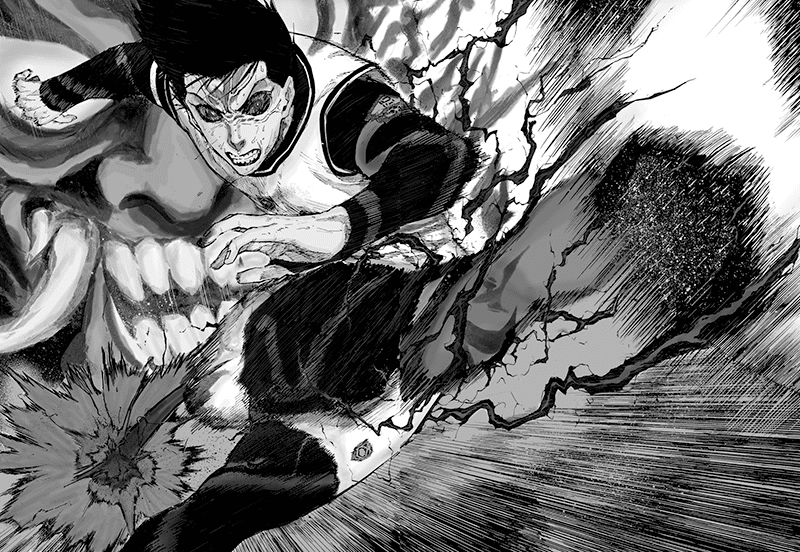
Blue Lock stands out for various reasons.
There’s Yuusuke Nomura’s sharp, vivid and highly engaging art style. It’s especially noticeable during key events in games. They are often presented by exceptionally well-drawn page spreads. He also does a fantastic job showcasing raw emotions and power. We often see characters with glowing eyes, auras or faces distorted by sheer physical strain.
Another thing is the characters. Almost all of them are extremely likeable, complex and unique. My favorite amongst them is Meguru Bachira. He’s an extremely quirky, but also amazing character.
The greatest thing, however, is the sheer amount of tension during games. They are never one-sided, and many times, characters grow or discover new techniques during games that change their course entirely. It makes them nothing short of gripping.
Blue Lock is one of the most fantastic manga of recent years, be it sports or not. For the art and tension alone, I highly recommend it.
C.a.t. (Confidential Assassination Troop)

Fung Ching Pang’s C.a.t. is a short action manhua, but I can’t help but include it on this list of fantastic manga.
It centers on a female assassin only known as C.a.t. When she was a child, she was taken by a group called the SFP Project, severely abused, but eventually escaped. Having been trained as an assassin, she’s now out to take revenge on her abusers.
Unfortunately, the manhua was never finished, so the story wasn’t fully fleshed out.
The reason it stands out so much is the breathtaking art. It’s very reminiscent of the gritty, sketchier style of Hiroaki Samura.
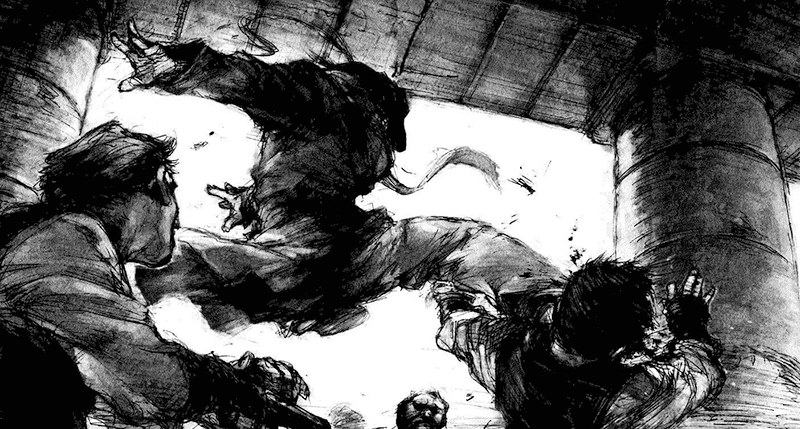
The style lends itself perfectly to C.a.t.’s many action scenes. They are fluid and dynamic and look nothing short of stunning. The same is true for the characters. The same is true for the characters. Every character’s full of details, well designed and unique.
While C.a.t. encounters quite a few adversaries, and they are all impressive on their own, they aren’t much more than typical fodder.
The only characters who stood out apart from C.a.t. were Alvas and Hao Long. Alvas was especially interesting. He’s a man who became the head of the CIA, but seems to play his very own game.
While C.a.t. is unfinished and thus its story is rather underdeveloped, it still stands out because of its fantastic art and fight scenes. I highly recommend it to anyone who’s looking for a fantastic manga with great fights.
Hotel
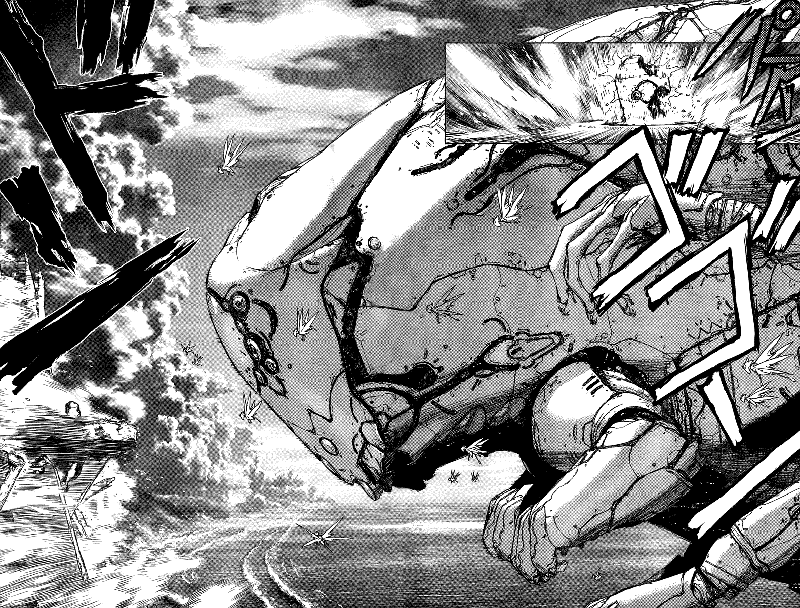
Hotel’s the only collection of one-shots on the list. It’s still a fantastic manga, especially because of Boichi’s stunning art.
Each chapter’s beautiful to look at and full of intricate details. Their content, however, can vary a little. While I liked all the stories featured in Hotel, some were better than others.
The first two chapters both tell a rather straight-forward story and seem to be set in the same world. In chapters three and four, however, things get much stranger. They are both much more surreal and weirder than those that came before.

The last chapter, chapter five, stands out amongst the rest because it’s drawn in stunning full color and is breathtakingly beautiful. Yet, there’s not much of a story to be found here.
My favorite was the very first chapter, featuring the titular Hotel. It was a tale as futuristic as it was emotional.
While Hotel’s a collection, and one that can get rather weird, I still think it deserves its spot on this list. Boichi’s at the top of his game, and all the stories featured are interesting in their own right.
If you’re looking for a quick, creative read that comes with some of the best art in the medium, read Hotel.
Battle Angel Alita

With cyberpunk and science-fiction, there’s no way around Battle Angel Alita. It’s a fantastic manga.
One day, the scientist Ido discovers the remains of a cyborg girl. Ido takes it upon himself to restore her, names her Alita and gives her a new body.
From this point onward, we follow Alita as she finds her way in this new world. Over the course of the story, she battles various adversaries and develops from an innocent, childlike character into a battle-hardened badass.
The manga’s mostly set in the gritty, post-apocalyptic town of Scrapyard. Each part of the town’s fully realized, detailed and a delight to look at. It’s a mad cluster comprising machines, factories, and rubble.
Battle Angel Alita’s art is mostly serviceable, but shines during battle scenes. They are intense, fluid, but never confusing. This is especially noticeable during the fantastic motor ball arc.

What makes the manga so great is Alita herself. While the manga has an overarching plot, it mostly focuses on Alita and how she finds her place in the world. Many deeper themes, such as the meaning of life or finding out who you are, are discussed as well.
While the manga’s setting is well drawn, the character’s design is often unrefined. Many of the robots and cyborgs we encounter can look cartoonish.
Another problem’s the characterization. Alita can be immature and arrogant, while other characters can be one-note or overdrawn.
And yet, Battle Angel Alita’s an entertaining cyberpunk, science-fiction manga full of well-paced battle scenes. If you’re a fan of science-fiction or cyberpunk, I urge you to read this fantastic manga.
Made in Abyss
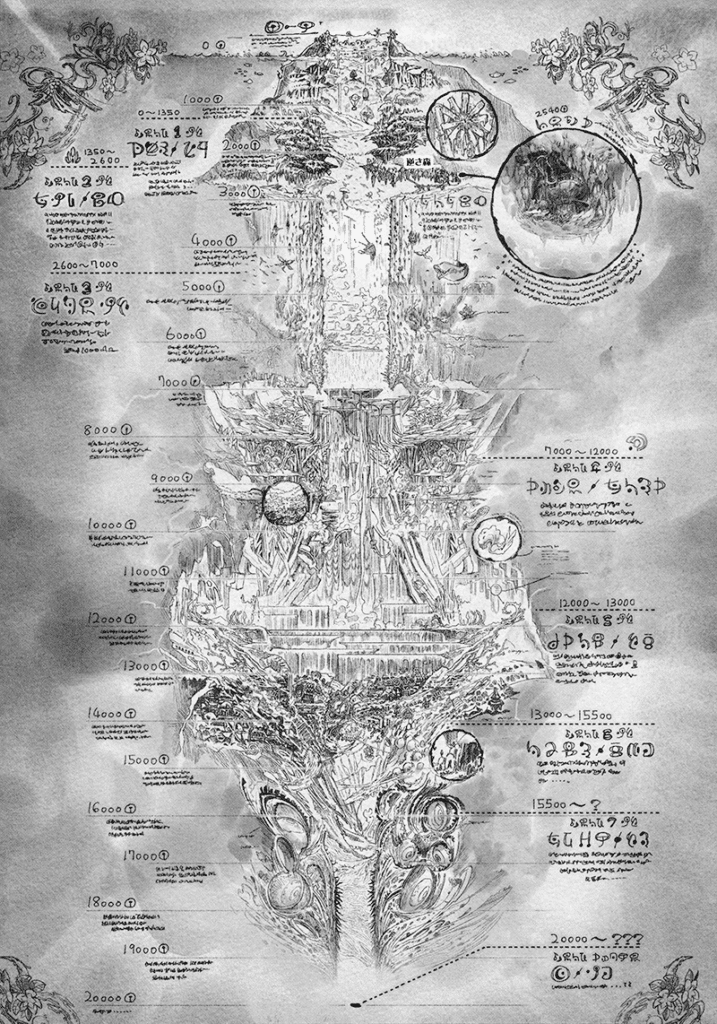
Some manga stand out because of characters or story, some because of the world they create. Made in Abyss is one of the latter.
The Abyss is one of the most captivating settings in manga.
It tells the story of Riko, a young girl living in the town of Orth. It’s built around the edges of a giant chasm that was never fully explored, the abyss.
Riko’s the daughter of one of the most famous cave raiders, a White Whistle, who appeared years ago. It’s her biggest dream to follow in her mother’s footsteps and become a White Whistle herself.
One day, she meets a robot boy called Rengu. Together, the two of them decide to descend the abyss in search of her mother.

Made in Abyss is a mixture of fantasy and science-fiction which stands out for its amazing art. It’s breathtakingly beautiful and many of the abyss’ locations are incredibly detailed.
The most interesting part about this manga, however, is the abyss itself. It’s a strange world populated by alien creatures and strange characters alike.
Interestingly enough, the manga starts out rather lighthearted. The deeper our characters descend, however, and the more outlandish their surroundings become, the darker and more disturbing the story becomes.
The one problem I have with this manga is the age of the characters. One has to wonder why children were chosen. Was it as a contrast to the alien world and the disturbing plot, or was it to make the horrible events even more horrible because they happen to children?
Even though, I enjoyed Made in Abyss immensely. It’s a fantastic manga that comes with some of the medium’s best art and one of the most unique settings ever created.
Jagaaaaaan

Jagaaaaaan by Muneyuki Kaneshiro and Kensuke Nishida is a fantastic manga, but also quite a weird one.
It introduces us to Shintarou Jagasaki. He’s a young police officer who isn’t too fond of his life. All that changes during a train ride when escorting home a drunk man.
An angry office worker transforms into a monster and tears apart the other passengers. Jagasaki defeats the monster by shooting a beam from his hand. The man was a fractured human and Jagasaki has become one, too.
Fractured humans came into being when so-called frenzied frogs rained down on Tokyo. These frogs infest humans with powerful desires and eventually transform into monsters.

Jagaaaaaan’s story starts out crazy and only gets crazier as it continues.
The art in Jagaaaaaan’s fantastic. It’s noticeable, especially in the monster design. All the fractured humans look incredible. The same is true for the manga’s many battles. They are a marvel to look at, are fast paced, and often quite brutal.
Anyone who’s read the works of Muneyuki Kaneshiro knows he’s got a hang for weird characters. While Jagasaki himself is a weirdo, many other characters in this manga are nothing short of deranged or psychotic.
Yet Jagaaaaaan has some problems. The pacing in the earlier chapters is a bit off and gives them a rushed feeling. Another is the depiction of explicit content, especially in terms of sexual abuse.
Still, Jagaaaaaan’s a fantastic manga full of weird, twisted and strange characters. If you enjoy the first few chapters, I’m sure you’ll love the rest.
Solo Leveling

Solo Leveling is a manhwa adaption of the web novel by the same title.
At first, Solo Leveling might not appear as much. The story and world-building are both rather simple. One day, so-called gates appear around the world, connecting it to a world of monsters. At the same time, many humans are bestowed with superhuman powers. These hunters are now tasked with fighting the various monsters pouring from these gates.
Jin-Woo Sung is one such hunter, but he’s pathetically weak compared to others.
After a disastrous mission, he awakes at a hospital and finds a quest log in front of him. He can now level up, do quests and become stronger, a feat exclusive to him.
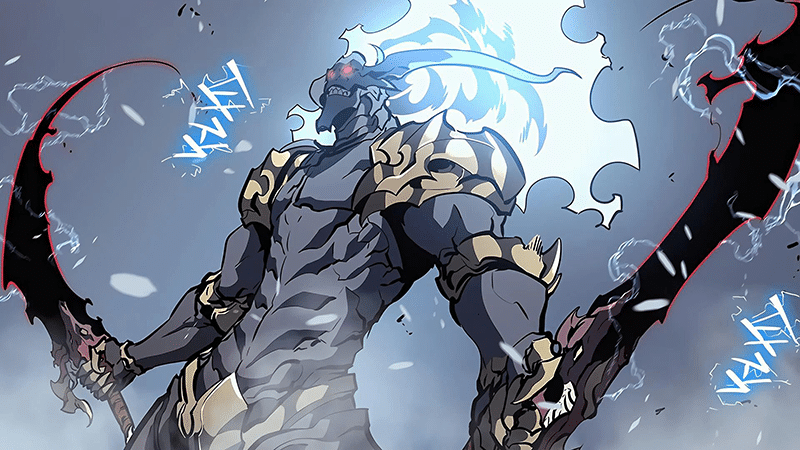
Solo Leveling is basically a power fantasy.
Where Solo Leveling stands apart from other series is in terms of arts and fights. Solo Leveling is a beautiful series that comes in full color. While the story isn’t too deep, it serves as a vessel for the one thing the series is about: fights. They are fast-paced, fluid and incredibly well drawn.
The only problem I have with Solo Leveling is that Jin-Woo Sung became too strong, too quickly. It was very interesting to watch him grow and struggle, but before long, he could defeat most enemies with relative ease.
This, however, is the only problem I had with the series. Overall, Solo Leveling is a lot of fun, the art is fantastic, and the action is incredible. While the plot’s relatively basic, I still regard it as one of the best power fantasy series out there.
Fuan no Tane
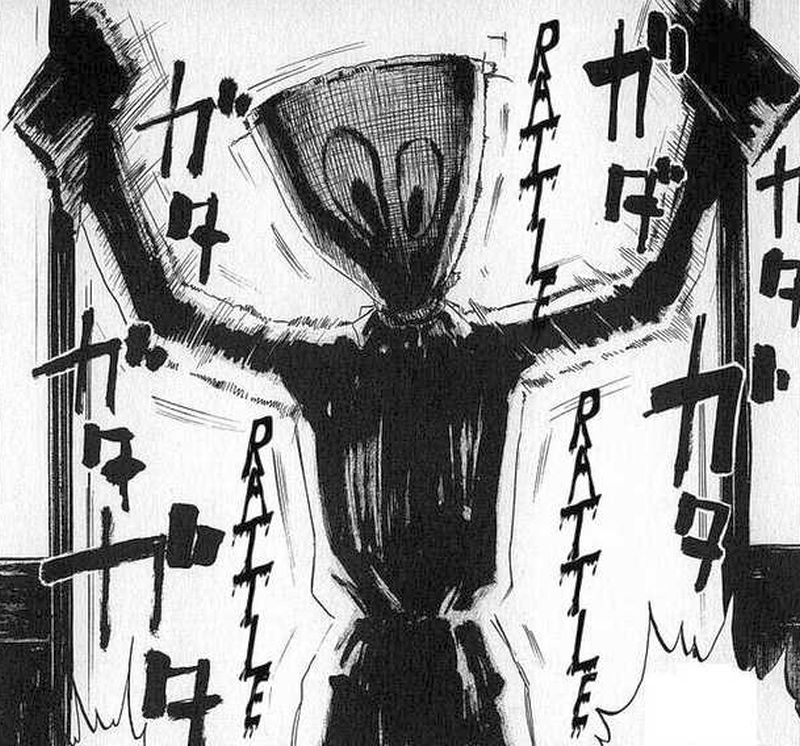
Fuan no Tane by Nakayama Masaaki is a horror anthology comprising very short horror stories, no longer than a few pages.
The most interesting part of Fuan no Tane is the absence of an overall plot. It focuses entirely on presenting creepy and strange incidents related to ghosts and other supernatural entities.
Each chapter comprises incidents related to a specific theme. Some are set at specific locations, such as schools or hospitals, while others deal with certain concepts such as uninvited guests.
While the absence of a plot might feel strange at first, it’s also what makes Fuan no Tane such a fantastic manga.

Instead of focusing on character introduction, setting or plot, the focus is entirely on the creepy incidents. This way, the horror, the scariness, never takes a step back throughout the entire manga.
Fuan no Tane’s art style is unique, and sketchier than that of other manga. Yet, this helps immensely to bring forth the overall creepy and uneasy atmosphere.
While I absolutely love Fuan no Tane, and think it’s a fantastic manga, it’s not for everyone. The absence of a general plot or developed characters might alienate and even frustrate some readers.
Yet, if you’re interested in nothing but brief glimpses at scary incidents and creepy scenes, Fuan no Tane is exactly what you’re looking for. As a horror fan, you won’t be disappointed.
Knights of Sidonia

Knights of Sidonia’s a mecha-space manga by Tsutomu Nihei, my favorite mangaka of all time.
It tells the story of the Sidonia, a spaceship, and a young man named Nagate Tanikaze.
After the Earth was destroyed by powerful aliens known as Gauna, the Sidonia fled into space. Yet, to this day, it’s relentlessly attacked by the Gauna.
Nagate Tanikaze spent most of his life in the ship’s depth with no contact with other human beings. Eventually, he finds his way to the populated areas. Since he’s born with an inherent talent for piloting, he soon comes to pilot one of the Gardes, giant mechas designed to fight the Gauna.
The first thing noticeable about Knights of Sidonia is that it’s much more mainstream-friendly than Nihei’s earlier series.
Biomega and especially Blame! were dark, gloomy and gritty and told most of their story via visuals.

In Knights of Sidonia, however, we got an almost conventional cast of characters. They hang out together, joke around, fall in love and much more.
However, the gritty, dark atmosphere is still present, especially in fights against the Gauna. Other typical elements, such as grand architecture, mega structures, Toha Heavy Industries, and biomechanical horrors, are all there. We even encounter entities reminiscent of Blame!’s cybernetic horrors.
While the series feels more lighthearted when compared to Nihei’s earlier works, it’s still a seinen series. Death and destruction are an everyday occurrence.
The biggest problem, apart from the more mainstream-friendly elements of the manga, is the ending. It felt a bit too happy, and even somewhat cheesy.
Still, Knights of Sidonia’s an absolutely fantastic manga, and one of the best space operas I’ve ever read. If you’re a fan of space manga, definitely check it out.
Akira

Katsuhiro Otomo’s Akira’s not only a fantastic manga but also one of the most influential manga of all time. It spawned not only the Japanese cyberpunk subgenre but also one of the most influential anime of all time.
The manga’s set in Neo Tokyo which was erected after Tokyo was destroyed by a mysterious explosion in 1988. Neo Tokyo’s a dystopian hell that fuses future technology and giant skyscrapers with biker gangs and poverty.
Soutarou Kaneda and Tetsuo Shima are two bikers who are not only best friends but also bitter rivals. After Tetsuo pulls a desperate stunt to prove he’s equal to Kaneda, he sets in motion the awakening of Akira, a secret government project.
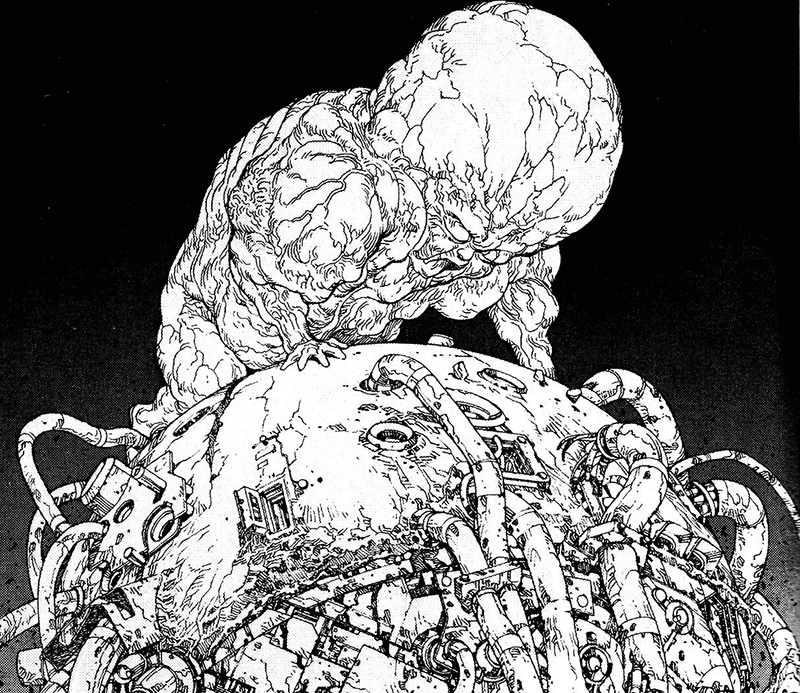
What makes Akira such a fantastic manga is Katsuhiro Otomo’s art. The character design is impressive, but it truly shines in the depiction of Neo Tokyo. Every part of the city’s gorgeously rendered, be it futuristic technology or dirty corners and rubble. Even the massive destruction taking place in later parts of the manga’s rendered in glorious detail.
Character and story, on the other hand, are rather mediocre. Kaneda and Tetsuo are more arch-types than fleshed out characters. Kaneda’s a badass biker boy, while Tetsuo’s an edgy youth with anger problems.
The story seems more vessel for style than anything. What starts out with a focus on biker gangs, drug orgies and government conspiracies, soon devolved into clashes between psychic super humans.
And yet, Akira’s still a fantastic manga. It’s a dystopian cyberpunk story, full of psychic powers, future tech and crazy megalomaniacs. Most important of all, however, it’s one of the most beautiful and important works in the entire medium.
Dorohedoro
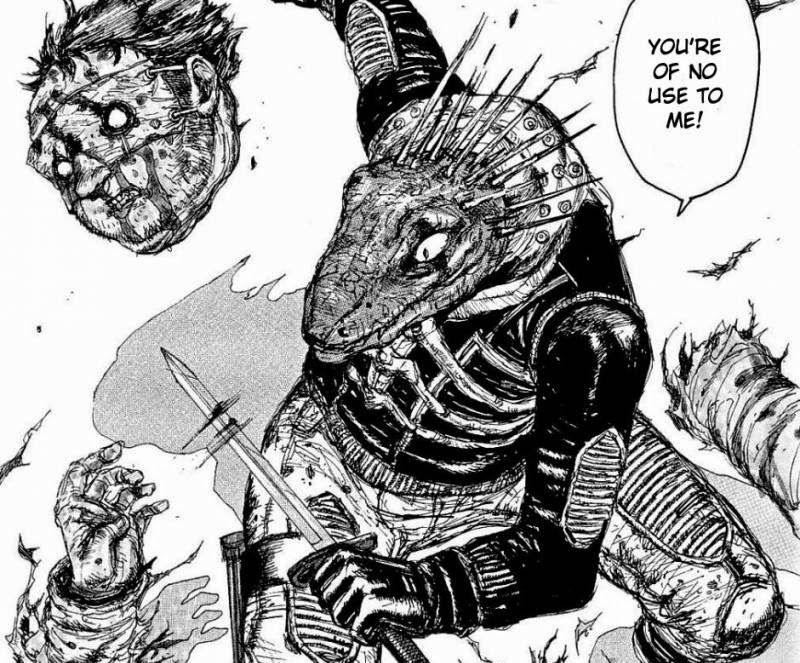
Anyone who’s read Q Hayashide’s works knows they are weird. Dorohedoro’s no exception. It’s a fantastic manga, but also one of the weirdest I’ve ever read.
The story’s set in a grim, dark world, full of gore and violence, but it’s presented to us in an often strangely humorous way. This air of lightheartedness, in contrast to all the carnage we witness, makes reading Dorohedoro an entirely surreal experience.
Dorohedoro tells the story of Kaiman. He’s an amnesiac with the head of a reptilian. His home is the city of Hole, which is connected to the Sorcerer’s World, a place populated by magic users. These magic users often visit Hole to test out their powers and as a result, Hole’s inhabitants are transformed, mutilated and even murdered.
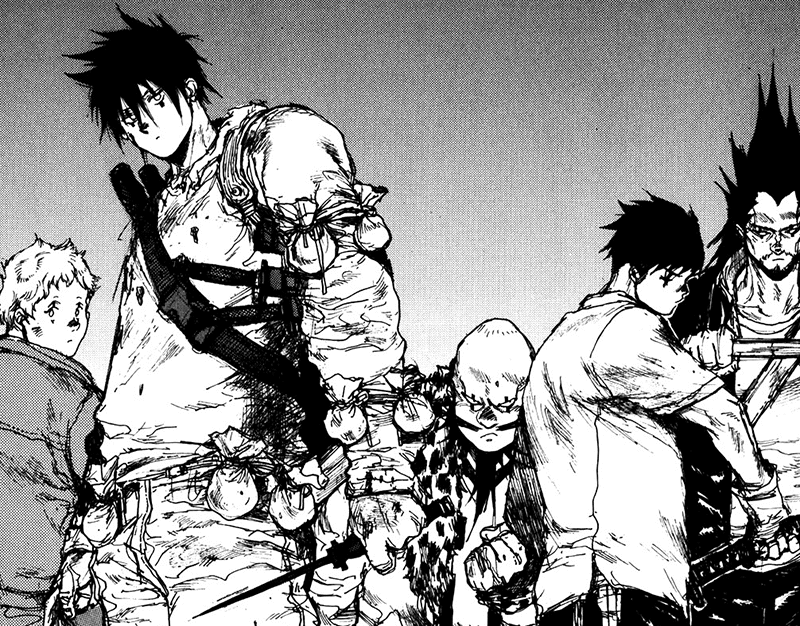
Kaiman hunts down these magic users because he thinks one of them is responsible for his strange condition.
While this premise sounds weird enough, the story proves to get only weirder. Describing Dorohedoro’s plot is almost impossible because of how creative and original it is. The best way to describe it is as a work of surreal madness.
The characters, too, are weird across the board. Be it the transformed inhabitants of Hole, or the outlandish magic users populating the Sorcerer’s World.
Dorohedoro’s a beautiful manga. The Sorcerer’s World, the run-down city of Hole and all the carnage and graphical violence we witness are rendered in stunning detail.
If you’re looking for a surreal and fantastic manga, read Dorohedoro.
Shigurui
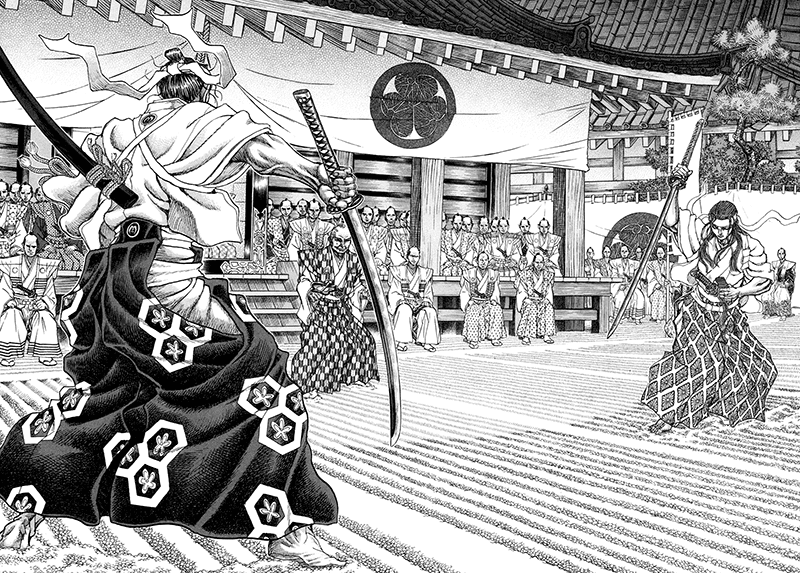
Noria Nanjou and Takayuki Yamaguchi’s Shigurui’s not only a fantastic manga but also one of the best samurai manga of all time.
One day, the daimyo Tadanaga Tokugawa proclaims to hold a martial arts competition with real swords featuring fights to the death.
The first fight pits the one-armed Gennosuke Fujiki against the blind and lame Seigen Irako. Instead of showing us the result of the fight just yet, the manga reveals each characters’ backstory.
Two things make Shigurui stand out. One’s the art which is amongst the most beautiful seen in any manga. Characters, backgrounds and even nature are nothing short of stunning, and all the brutality and gore are rendered in beautiful detail.
The other is the depiction of samurai culture. Many other manga romanticize it and depict it as honorable. Shigurui, however, shows us how brutal, unforgiving and despicable samurai culture really was.

Because of this, the manga’s filled with an atmosphere of depression. It’s almost stating that nothing good’s to be found here. It shows us the life by the sword for what it really is: one of servitude and obedience shrouded in the guise of honor.
Yet, Shigurui has its faults. The manga’s largely character driven, and in later parts, this causes the story to drag on a bit, making it almost tedious.
Another’s the inclusion of an arc unrelated to our protagonists. The original novel, however, depicts the backstory of all the competition’s participants, which might have been the manga’s original plan, but was eventually dropped.
While the ending’s rather satisfactory in conveying the manga’s overall themes, it still feels rushed.
Still, Shigurui’s one of the best samurai manga of all time. It’s, however, not for the faint of heart and tells a story that’s as depressing as it is tragic.
Lone Wolf and Cub
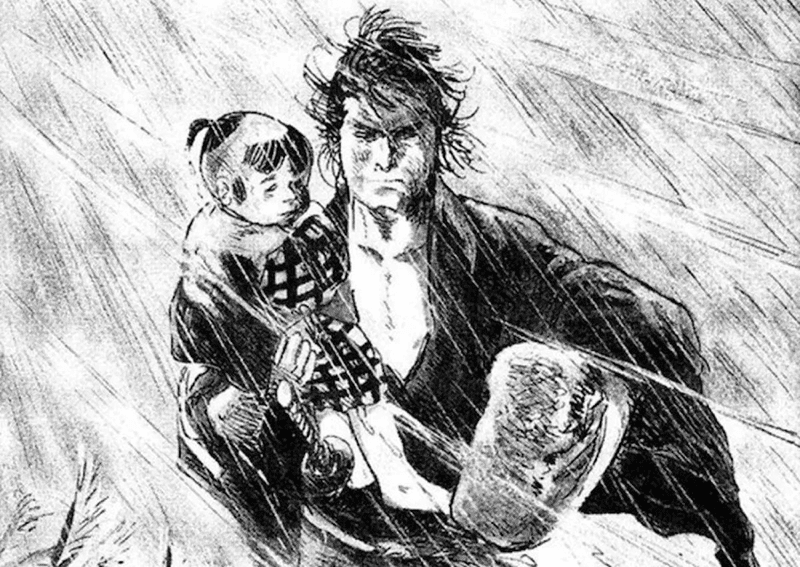
Kazuo Koike and Goseki Kojima’s Lone Wolf and Cub, is amongst the most influential samurai manga ever created.
It tells the story of Ittou Ogami. He was the Shogunate’s chief executioner until he was framed for treason by the Yagyuu Clan. He was forced to flee with his young son, and now travels the land as an assassin for hire.
At first, the manga’s told in episodic fashion, detailing the various assassinations Itto Ogami carries out. As we learn more about our protagonist, however, we also learn that his travels serve one purpose alone: to get revenge against the Yagyuu Clan.
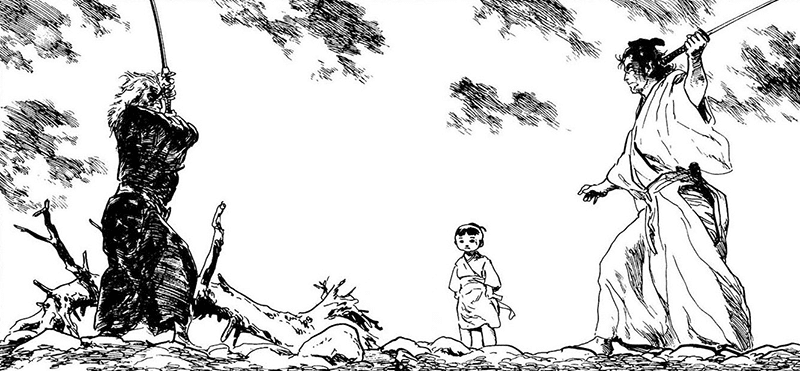
Yet, it’s not this overall plant that makes Lone Wolf and Cub such a fantastic manga. It’s the individual, episodic stories. They often convey more depth and emotional weight than other, much longer works.
While the art is old-fashioned, it’s fantastic. It’s simple and gritty, yet realistic, giving Lone Wolf and Cub an entirely unique style fitting for a traditional samurai story.
Where this art shines the most, however, is in the action sequences. They are incredibly well done, hold up even today, and are easily amongst the best sword fights in the entire medium.
Another great thing about this manga is Ittou Ogami himself. On one hand, he’s portrayed as a brutal assassin, on the other he’s a deeply caring father. This dualism, and the many other nuances we learn about him, make him one of manga’s most complex characters.
Lone Wolf and Cub might not be for everyone. It’s old-fashioned, realistic and less flashy than other samurai manga. Yet, it’s also one of the genre’s greatest accomplishment. If you’re a fan of more traditional stories, read it.
Gokushufudou: The Way of the House Husband

Comedy manga are often hit or miss, but Gokushufudou by Kousuke Oono is pure gold.
The story concerns Tatsu, who was once a legendary yakuza, but retired and became a househusband.
While mundane household tasks have their own challenges, this is not where Gokushufudou’s humor comes from. It’s the manga’s presentation. All these normal, mundane tasks are presented with the intensity of a crime or battle manga.
Going shopping on bargain day is presented with the same tension and suspense as a life and death situation. A meet-up with an old rival is shown as a dramatic clash that might lead to violence. A second later, however, Tatsu and his rival engage in a cooking challenge to see whose food is more popular.
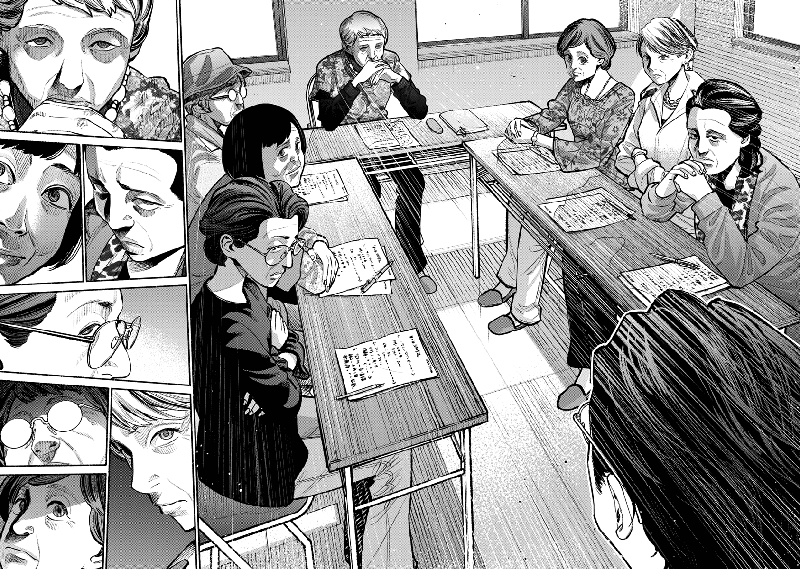
It’s this art style, this presentation that makes Gokushufudou such a fantastic manga. The showcasing of a normal, mundane life in such suspenseful, and over-the-top way is nothing short of genius.
Characters, too, are presented in the same ridiculous and over-the-top way. Be it simple shopkeepers or the friendly women of the neighborhood association, they are all presented to us as cut-throat gangsters or even yakuza bosses.
Gokushufudou is, without a doubt, one of the funniest, most ridiculous manga I’ve ever read and comes with a beautiful, well drawn and over-the-top art style.
If you’re looking for a manga full of ridiculous situations and that will make you laugh out loud, read Gokushufudou. It’s one of the best comedy manga of all time.
25 Great Manga Any Fan Should Read
I’ve always loved storytelling, no matter the medium. I read books, stories published online, but also manga. It’s a medium I came to love a lot over the years. Great manga aren’t simply telling a story, though, but combine it with often fantastic visuals.
I guess what makes them so interesting is a combination of cultural differences, unique stories and their visuals.

While I’ve read hundreds of manga, their quality can vary. For this reason, I put together a list of twenty-five great manga. While some titles might be more popular, I believe there are some hidden gems few people have heard about.
If you are interested in more manga recommendations, check out my articles on the best horror manga, the best seinen manga, and the best shonen manga.
I also want to give a spoiler warning. While I’ll try not to go into too much into detail about the plot, sometimes it’s unavoidable.
So, here are twenty-five great manga any fan should read.
Rurouni Kenshin
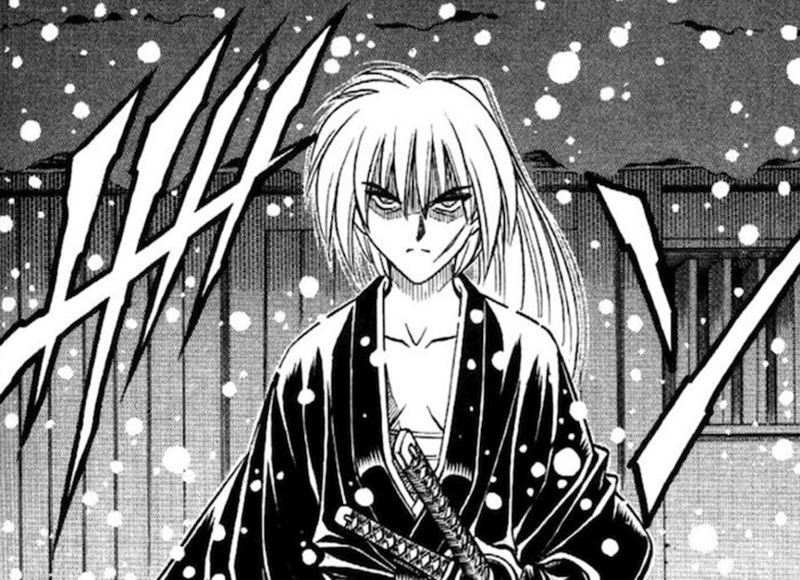
Rurouni Kenshin by Nobuhiro Watsuki is not only a samurai manga but also a great manga. It tells the story of Hitokiri Battosai, an infamous killer during the Bakumatsu War.
Now known as Kenshin Himura, he travels the land as a wandering samurai. Yet, he isn’t a bloodthirsty killer. Instead, he’s a man haunted by his past. He wishes to atone for his crimes and to never kill again, thus fighting with a reverse blade katana.
However, Kenshin has to learn that the road to redemption is not an easy one. Time and again, he runs into people who hold a grudge against him for what he did in the past.
The manga features multiple arcs. The first being set in Edo serves more as an introduction to Kenshin and the other members of the cast.
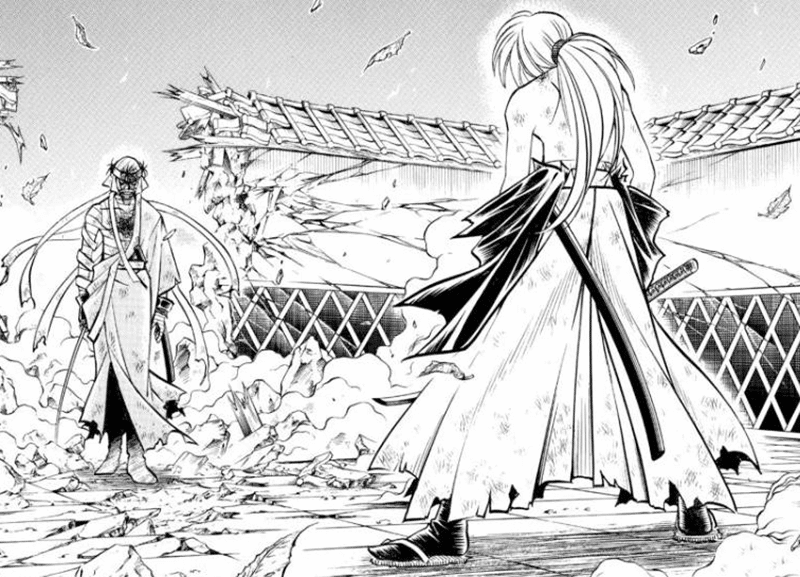
Where the series truly shines is during the Kyoto arc, which introduces Shishio Makoto, Rurouni Kenshin’s most notable antagonist.
What makes Rurouni Kenshin stand out so much are its deeper themes. It tells the story of a man who seeks redemption, but can’t seem to escape his past. As the story goes on, we wonder if he can ever bury the name Hitokiri Battosai, and fear he never can.
The manga’s biggest downside is the art style. It can appear old-fashioned and simplistic, especially when compared to other, more popular samurai manga such as Vagabond or Blade of the Immortal.
Still Rurouni Kenshin is a great manga, one that stands out for its fantastic action sequences, interesting characters and complex themes.
Blue Heaven
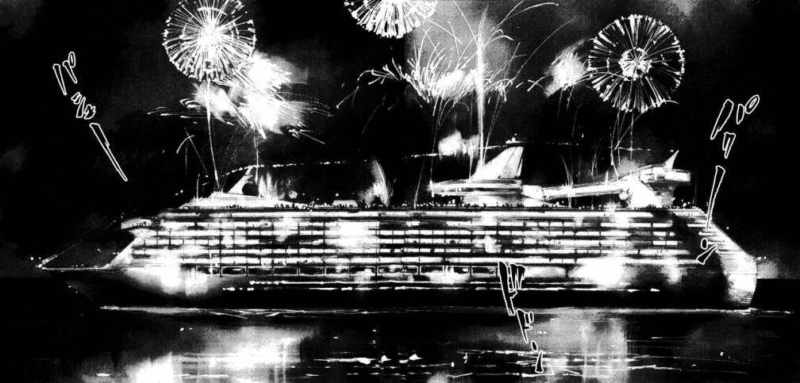
Tsutomu Takahashi’s Blue Heaven might be short, but it’s still a great manga. At only two volumes, this thriller manga succeeds fantastically at what it sets out to do.
During a cruise, the titular luxury-liner Blue Heaven discovers a wrecked ship. What they discover are signs of terrible bloodshed, but also two survivors. While one is in horrible condition, Ri Seiryuu, the other, seems fine.
Before long, Ri Seiryuu escapes confinement, mingles amongst the passengers and begins an indiscriminate killing spree. This, however, brings him to the attention of an ominous rich family also aboard the ship. From here on out, things spiral out of control.
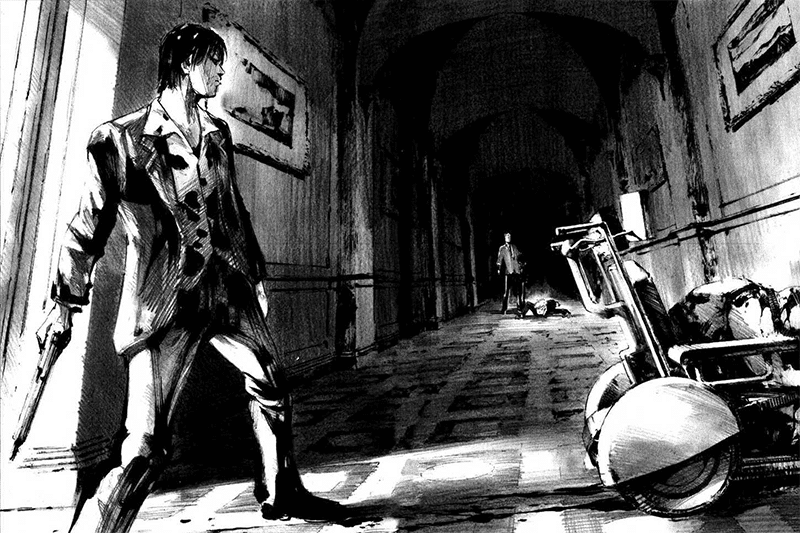
What makes Blue Heaven such a great manga are not only the unique setting, the pacing but also the characters.
While some characters are normal people, others are crazy psychopaths who love nothing more than to further escalate the events on board. Blue Heaven’s pacing is nothing short of fantastic. Tensions are high, the action is intense and not a dull moment is to be found.
The only downside is how short the manga is. The story and setting had a lot of potential and I wish it would’ve been explored more thoroughly.
Overall, Blue Heaven is a manga I recommend to anyone who likes thriller manga or who loves fast-paced, action-oriented stories.
7 Seeds
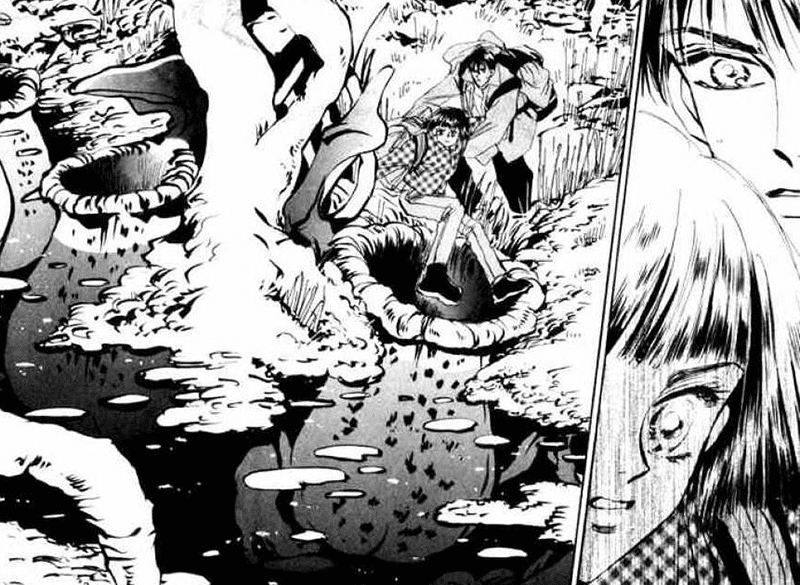
7 Seeds is a post-apocalyptic survival manga created by Yumi Tamura. When a giant meteorite is about to collide with earth, the 7SEEDS project was created. Five sets of seven young men and women were chosen and put into cryogenic sleep. Once the catastrophe was over, they are awoken.
The manga’s story follows each of the five teams as they try their best to survive in this dangerous new world.
After initial doubts, I soon came to love 7 Seeds. It’s a great manga and one of the best in the survival genre.
The survival aspect in 7 Seeds is well-done and handled realistically. Our characters have to find shelter, search for water and work hard to eat. It’s the basics of survival, but other survival manga often overlook those details.

Another thing I loved were the characters. The cast’s as divisive as it’s realistic, and many of them develop as the story progresses.
Yet, the cast of character is also a major problem for 7 Seeds. There are simply too many of them, and we get to know all of them, witness their struggles, survival, and even death. While it serves to tell unique stories, it can also be quite overwhelming.
My biggest issue with 7 Seeds, however, is the art style. It’s reminiscent of older manga and quite simplistic. It takes a while to get used to, and unfortunately, never improves throughout the manga’s long run.
Even though, 7 Seeds is not only a fantastic and complex survival manga but also a truly great manga. I highly recommend checking it out, and if you enjoy the first chapters, you’ll love the rest.
Shamo

Shamo by Akio Tanaka is a martial arts manga, but one quite different from others. In this story, we don’t follow the good guy, but an antagonist.
When high school student Ryo Narushima is sixteen years old, he murders both of his parents and is sent to a reformatory.
During his sentence, he meets a man named Kenji Kurokawa, a karateka who recognizes Ryo’s talents and teaches him self-defense.
Ryo’s released after two years because he was a minor at the time of his crime. After his experiences in prison, he vows to gain strength, to survive, and to never be a victim again.

Yet, Ryo’s changed. His time in prison has made him a deprived and despicable character. He does what he needs to get money, and when he fights, he fights dirty. This life, however, is never glorified. Ryo has few friends and acquaintances, and most of them try to take advantage of him. Yet, there’s nothing he can do because of his past. Criminals are seldom given a second chance, especially murderers.
Shamo’s art is raw, gritty and realistic, but while it’s good, it’s not outstanding. Still, this specific style lends itself perfectly to as dark a story as Shamo is.
This dark story, however, takes a step back in the latter half and Shamo suffers for it. Instead of showcasing Ryo’s character, we’re introduced to concepts such as Ki and even witness sword fights. It makes for a rather disjointed experience.
Shamo’s great during its first half, and its unique perspective makes it such a great manga.
City of Darkness

City of Darkness is a manhua, but I still think it deserves a mention on a list of great manga.
Chen Luo Jun’s a member of the triads, but one day he’s betrayed by his boss and loses everything. So, he sets out for Kowloon Walled City in Hong Kong, the titular City of Darkness. Over the course of the story, he meets new allies, fights stronger enemies, and makes a name for himself in the underworld.
City of Darkness stands out for its fantastic, detailed and colorful art. Few other works can compare when City of Darkness is at the top of its game. Being an action manhua, it features quite a few battles and they are not only suspenseful but also rendered in gorgeous detail.
As great as City of Darkness’ presentation is, it suffers from a few glaring issues.

The story’s rather simplistic, but that’s to be expected of an action manhua. The problem starts with a trope as old and tried as fiction. Namely, enemies becoming friends. Each arc introduces a new antagonist. After their defeat, however, we learn their sympathetic backstory before they join the main cast. It feels cheap and makes the emotional impact of earlier arcs meaningless.
Another problem is the way the story’s told. Large chunks of it are told by a narrative voice instead of being shown via the visuals.
The most glaring issue, however, is the pacing. At times, it’s slow at others, it goes into overdrive. Sometimes, we’re thrown right into the action without even understanding what’s going on.
Even though I had still had a blast reading City of Darkness. It’s fore and foremost an action manhua, and with action, it delivers and delivers incredibly well.
Dead End

Dead End by Shohei Manabe is one of the weirder titles on this list, but still a great manga.
We get to know Shirou, a construction worker, living a mundane life. One day, a naked girl, Lucy, falls into his life and things change forever. After introducing Lucy to his buddies, he has to leave for a few minutes, only to come back to find her gone and his friends slaughtered.
A moment later, a strange man saves Shirou from an explosion and urges him to escape via the sewers. Down there he meets another stranger, the first of a rag-tag band of characters he supposedly knows from his past.

While this premise is strange enough, things only get weirder. What starts out as a thriller slowly introduces more and more surrealistic elements.
Where Dead End stands out, the most is in terms of characters. They are all absolute badasses who can do insane feats. It’s nothing short of exciting.
Shohei Manabe’s art is rather unique and takes some time getting used to. Backgrounds and surroundings are gritty, almost dirty. Yet, it’s most notable in terms of characters. Shohei Manabe’s style makes them entirely unique, but also uglier than other manga characters. This, however, only adds to the strange nature and atmosphere of the manga.
Overall, Dead End is a surreal read, a great manga, and I highly recommend it to anyone who’s looking for a raw, gritty story.
Usogui
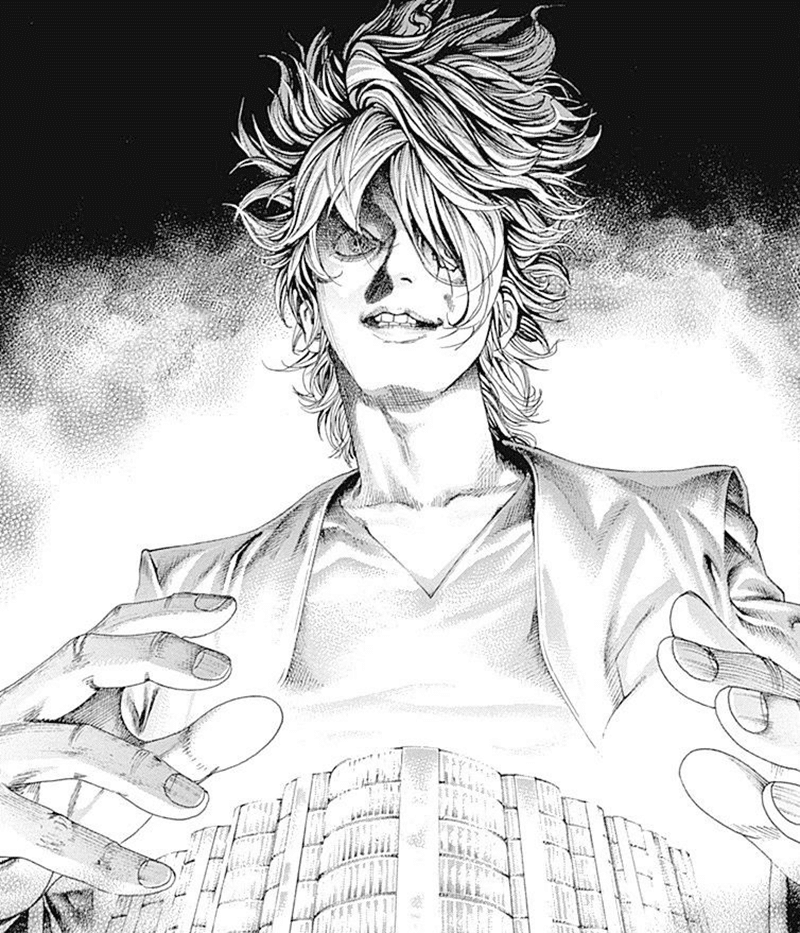
Toshio Sako’s Usogui is a great manga that focuses on gambling and mind games.
The story focuses on Baku Madarame, the Usogui, and the many deadly gambles he takes part in. Related to these games is the powerful organization Kagerou. It presides over these games and its referees make sure that the games are carried out satisfactorily and all bets are paid up.
Things get crazy right from the start. After a brief introduction of Baku, we’re thrown right into the first true death game. From here on out, things only get crazier.
What makes Usogui such a great manga are the games. They are complex, but not impossible to understand. Yet, they always serve more as a backdrop. The real focus is on the mind games and the psychological tricks the characters employ to win.
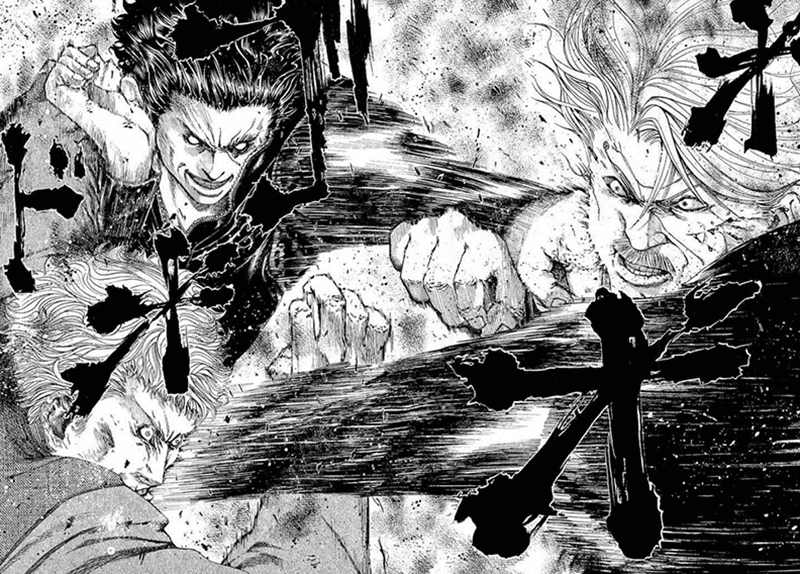
The characters, too, are fantastic. Baku’s an all-around badass who’s not afraid of death games or confronting overwhelming odds. Kaji, on the other hand, is a normal guy. At first, he’s more of a stand-in for the reader, but throughout the series he becomes a proficient gambler in his own right.
The only issue I had with Usogui was the art style, which started out rather simplistic. Over the course of the manga, however, it improves tremendously.
Usogui’s a great read for anyone interested in mind games and gambling, even if some scenarios depicted can be unconventional. It’s, however, quite a commitment at over 500 chapters.
Chainsaw Man

Who doesn’t know of shonen manga’s new golden child with a head and arms resembling chainsaws? His name is Denji, and he’s the main character in Fujimoto Tatsuki’s great manga Chainsaw Man.
Chainsaw man is stylish and brutal, full of blood and violence, and one of the most surreal manga of recent years.
At the story’s outset, Denji’s living in a small shack, killing devils for the yakuza to pay off his debt. These devils are demons who escaped from hell. He fights them by using his pet devil Ponchita as a weapon.
When he’s killed, Ponchita fuses with his body, saving his life and allowing him to transform into Chainsaw Man. Soon enough, he catches the eye of the official devil hunters and is forced to work for the Public Safety Bureau.
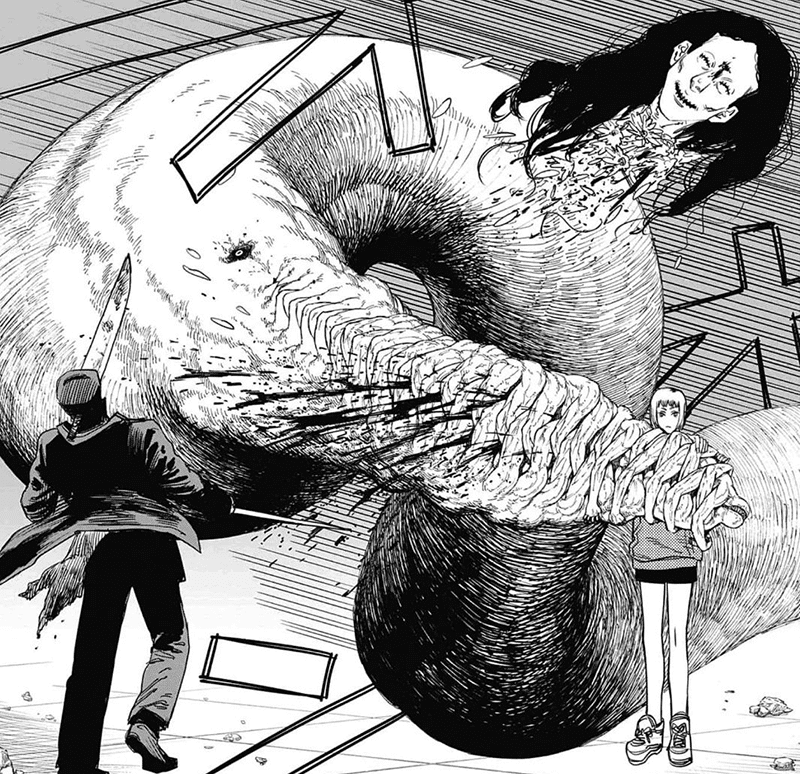
The manga’s plot starts of relatively simple, but soon becomes more complex as more and more hidden details are revealed.
While Chainsaw Man can be ridiculous, even stupid and comical, it’s still a dark and unforgiving story. Anyone who’s read Fujimoto Tatsuki’s previous works, especially Fire Punch, knows that it’s a staple of his works.
The greatest part about Chainsaw Man is the art. It’s unique, raw and gritty. Fujimoto Tatsuki renders his world, characters and the various devils in beautiful detail. Especially the devils stand out. Their design and power are often outlandishly horrific and stunningly creative.
Chainsaw Man can be best described as a work of beautiful madness. At times it’s funny, at others ridiculous, but it’s always a crazy, surreal and brutal ride. Reading it was quite an experience. If you haven’t read it, I urge you to check it out.
Blood and Steel

Blood and Steel by Jingfu Qiao and Meng Ma Gong Zuo Shi is a martial arts manhua I enjoyed immensely.
Yan Heng is a martial artist and member of the Quincheng group. One day, they are being attacked and annihilated by the Wudong group. Yan Heng is saved by Jing Lie, the Wudong Hunter.
Together, the two of them set out for revenge against the Wudong.
The story’s relatively simple and typical for a manhua of the Wuxia genre. Where Blood and Steel stands out, however, is in terms of art.
It’s one of the most beautiful works on this entire list of great manga. The world’s drawn beautifully, characters are gorgeous to look at and fights are rendered in stunning detail.

Another great thing about these fights is how they are presented. In many other martial arts manga, fights are often over-the-top, drawn out and last forever. Not so in Blood and Steel. Almost all the fights in this manhua are brisk and quick, making them much more realistic, but also more interesting.
The only problem I had with blood and Steel was the story progression. While it’s a story of revenge, proper conduct and morals were often more important. This led to our protagonists letting enemies escape because fights didn’t start on even footing.
Still, this didn’t deter my enjoyment of the manhua much. While the story might not be its strongest point, the art and fights are top notch.
If you’re looking for a beautiful work about martial arts, read Blood and Steel.
Dr. Stone
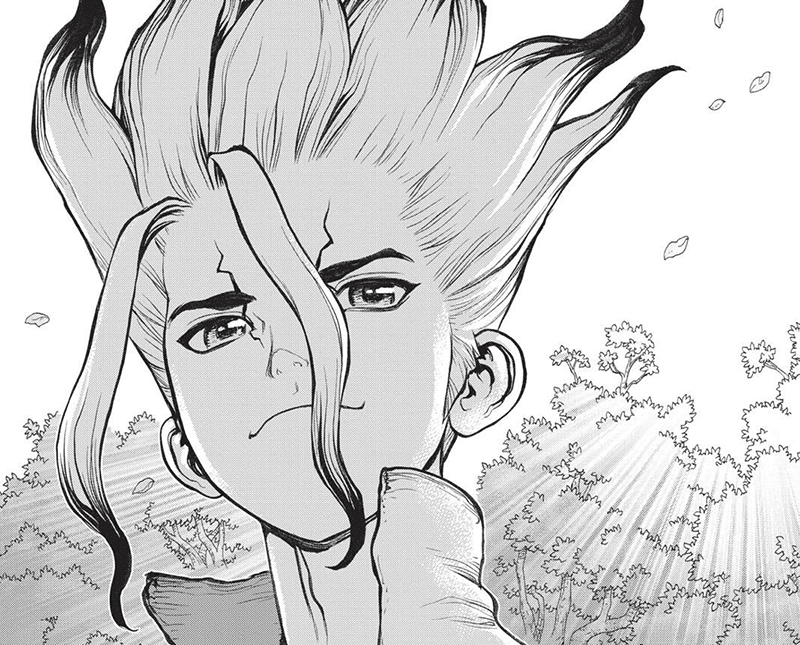
Riichiro Inagaki and Boichi’s Dr. Stone tells a story that’s rather simple: rebuilding human civilization from the Stone Age with all the knowledge of modern day.
This unique premise makes Dr. Stone such a great manga.
The story starts when a mysterious light shines on Earth and every single person is petrified. Thousands of years later, Taiju Ooki and his friend Senku are the first to reawaken.
Senku, being a young man with vast knowledge of science, sets out to restore the world to what it used to be.
It’s this plan that triumphs over everything else in Dr. Stone. Technological development and progression outshine every other part of this manga. It’s extremely enjoyable to watch Senku create pretty much anything from scratch. Senku starts out by building primitive tools and weapons, but soon experiments with chemistry, electricity before setting up things such as factories.
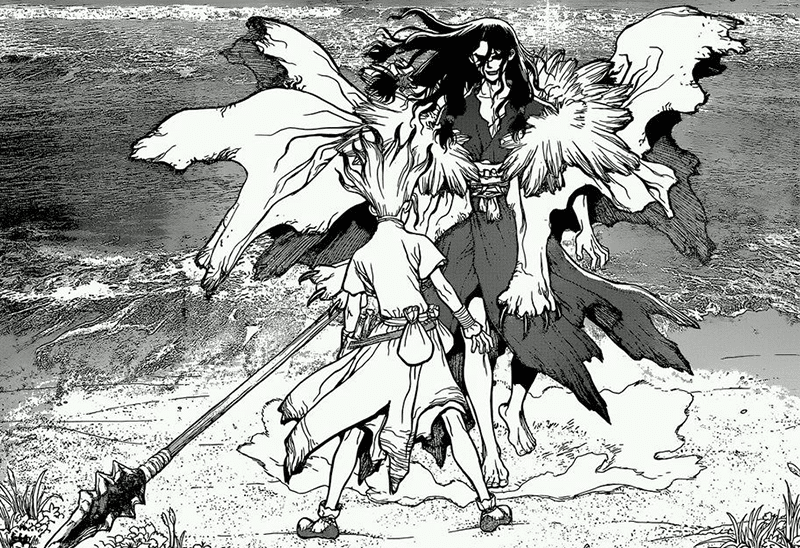
While there are many other survival manga out there, Dr. Stone’s the first to truly focus on establishing a society and technological development.
Another selling point of the manga’s the art. Boichi’s a master of the craft and everything in Dr. Stone looks nothing short of gorgeous.
The only major problem I have, and which also deterred my enjoyment of Boichi’s earlier work, Sun Ken Rock, is the humor. It’s simple, childish and over-the-top, heavily relying on one thing alone: facial expressions. It got old relatively quickly, and after a while, grew to annoy me.
Overall, though, Dr. Stone is clearly a great manga, and one of the best in recent years. I absolutely loved reading it.
Keep on Vibrating
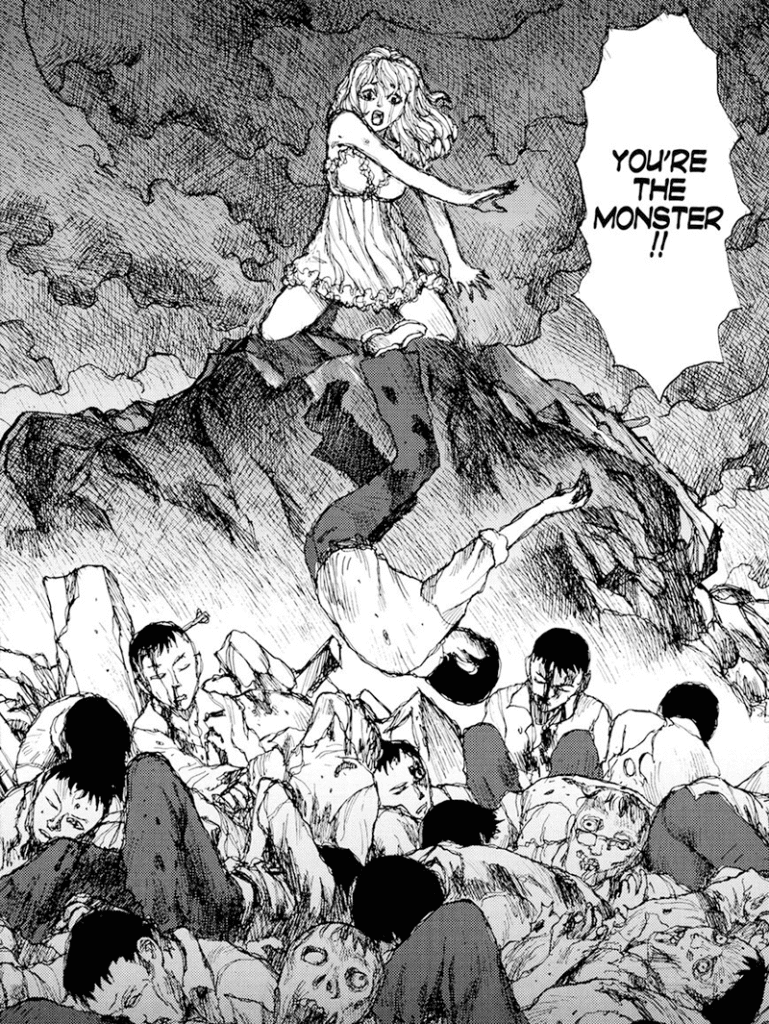
Jiro Matsumoto’s known for his weird and surreal works, but Keep on Vibrating might be the weirdest of them all. It’s the only adult themed manga on this list, and it’s quite a piece of work.
It’s a collection of one-shots. Some are interconnected, others are standalone. They depict explicit sex, violence and various other insane events. I’d like to give a warning here. This manga’s not for the faint of heart.
The very first story’s a great introduction to what you’re in for. It’s full of sex, violence and the plot is utterly abstruse and surreal.
Yet, Keep on Vibrating’s also incredibly creative in its surreal insanity, making it an enticing read and great manga.
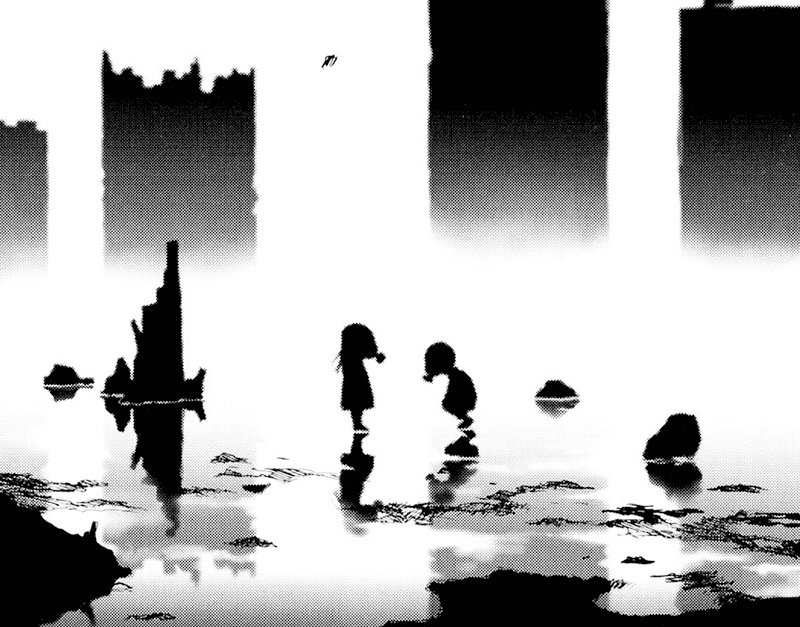
Jiro Matsumoto’s art is gritty and dark, but entirely unique. Backdrops are often disturbing, depicting a grim, derelict world.
The plot of each story’s weird, but some are downright surreal. Yet, one can see rare glimpses of genius, certain bits of imagery that make it such an outlandish and fascinating work. This is especially noticeable in the often mundane dialogue, which stands in stark contrast to anything else that’s going on.
Keep on Vibrating is a graphical manga, a weird manga, but also a great manga. It’s different from almost every other work I’ve read. It’s an experience to be had, but only for those who can stomach the explicit content.
Ikigami

Imagine you’re getting a note which informs you that twenty-four hours from how you’re going to die, and there’s nothing you can do about it.
Motoro Mase’s Ikigami deals with this scenario. In a dystopian Japan, certain citizens between the age of eighteen and twenty are selected to die for their country.
They are informed about this by the titular Ikigami, which are delivered to them by government messengers. Kengo Fujimoto, our protagonist, is one such messenger.
Ikigami’s mostly told in episodic fashion, detailing how people react to the terrible news. While some accept it, others rebel against it, fall in despair, and desperately try to escape their fate.
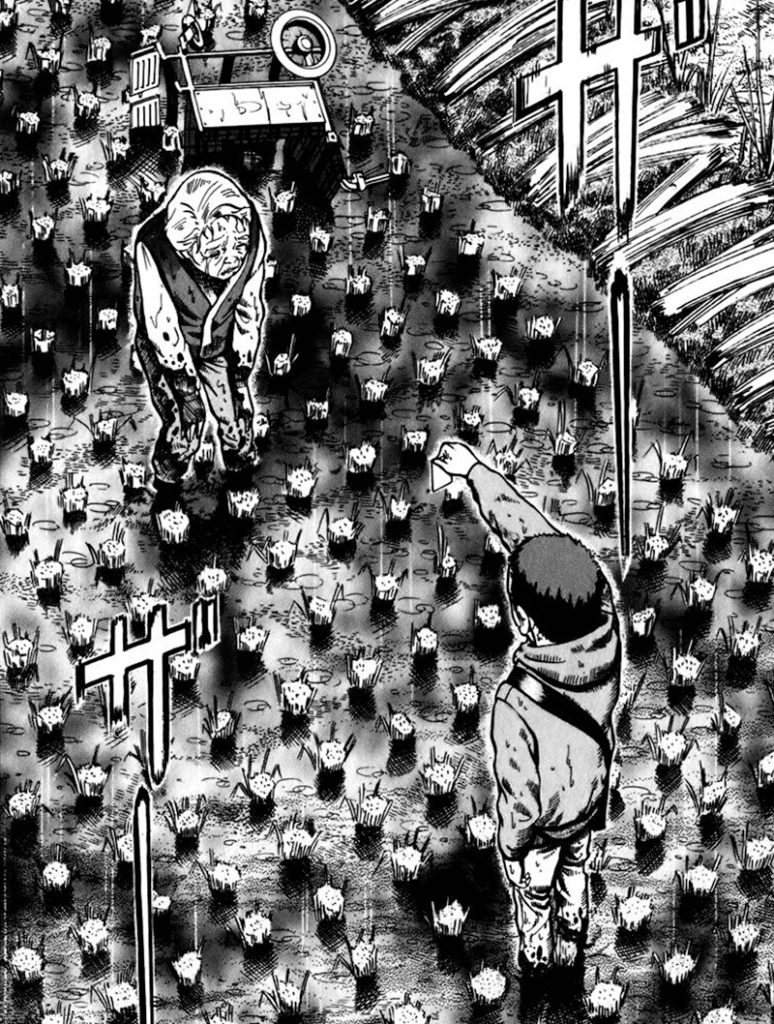
This premise makes Ikigami such a great manga. It’s one of the most thought-provoking reads I’d had in a long time. While all the scenarios and people shown are interesting, some are nothing short of outstandingly beautiful or poetically tragic.
At the same time, however, this episodic fashion is one of Ikigami’s biggest problems. We always know that most of the characters in this manga will only be around for a few chapters. While some are extremely well done, and we feel for them, the time we spend with them is ultimately cut short.
Ikigami’s art is realistic, but quite average. It does what it needs to, and that’s mostly it. While there are some beautiful scenes, they are rare and in-between. Yet, they create a beautiful contrast, really showcasing the emotional importance of these scenes.
Overall, Ikigami’s a great manga, one that makes you ponder quite a lot and wonder how you’d spend your last day.
The Horizon

Ji-Hoon Jeong’s The Horizon is one of the most depressing manhwa I ever read. At the same time, it’s a beautiful story.
It’s set in a world ravaged by war, and after a young boy witnesses his mother’s death, he walks on the road towards the horizon. At an abandoned bus, he meets a lost little girl and from this point onward, the two of them travel together.
The Horizon’s a work that showcases the gritty unforgiving nature of war and its aftermath. As dark as the story is, however, the manga itself ends on a positive note, showing that there’s always hope as long as there’s love.

The greatest thing about The Horizon is the art. It’s raw, gritty, but also beautiful. Sometimes it’s simplistic, at others detailed, always depending on the importance of the scene. The Horizon features a lot of brutal content, but it never glamorizes it, and only uses it to show how bad the world has become.
The thing I love the most about the art though, is how it’s used to convey emotions. When bad things happen, or emotions spiral out of control, the art becomes grittier, rougher, or distorts completely.
While the Horizon’s a quick read, it’s the perfect length for a story like this. If it would’ve been any longer, the gloomy atmosphere would’ve been dragged out and the story’s emotional impact would’ve been weakened.
The Horizon’s a hidden little gem, one I can’t help but include in this list of great manga. It shows us a world of war, but from the perspective of those who least understand it and are least involved.
If you want to learn even more about it, read my detailed review about why you need to read The Horizon manga.
MPD Psycho
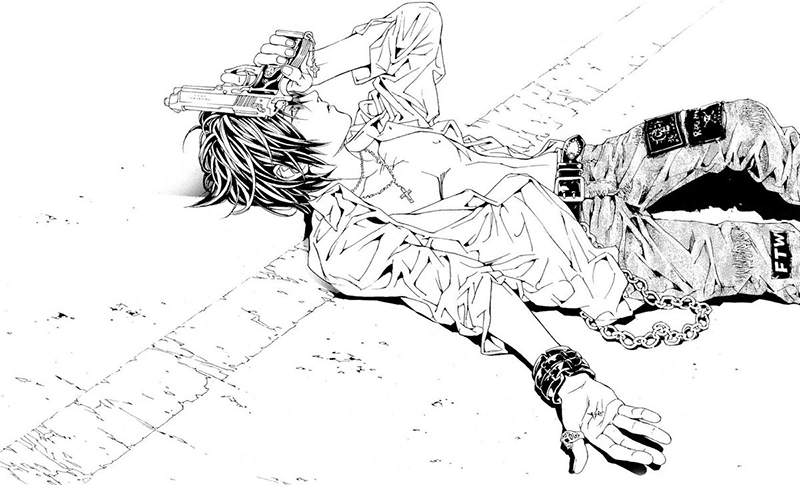
MPD Psycho by Eiji Otsuka and Shouu Tajima’s a great manga, but it’s not for everyone. It features a lot of gracious and shocking violence.
It’s the story of Kazuhiko Amamiya who suffers from multiple personality disorder. At the outset of the story, he works as a detective and solves violent crimes and sick murder cases.
Many of these are odd, twisted and the crime scenes are rendered in intricate detail. While these scenes can be stomach turning, MPD Psycho’s much more than a mindless gorefest.

It’s a psychological thriller and one of the greatest manga in the genre. What starts out episodic soon turns into a bigger plot, related to Amamiya’s past. Yet, the more complex the plot becomes and the more mysteries are revealed to us, the more confusing things become. This, however, is also attributed to our protagonist’s different personalities. It can be hard to keep up with them and who’s actually in charge.
The sick violence might be off-putting to some readers. If you can stand it, however, you’re treated to a dark thriller with a lot of deeper, psychological themes. It’s without a doubt a great manga.
Soil
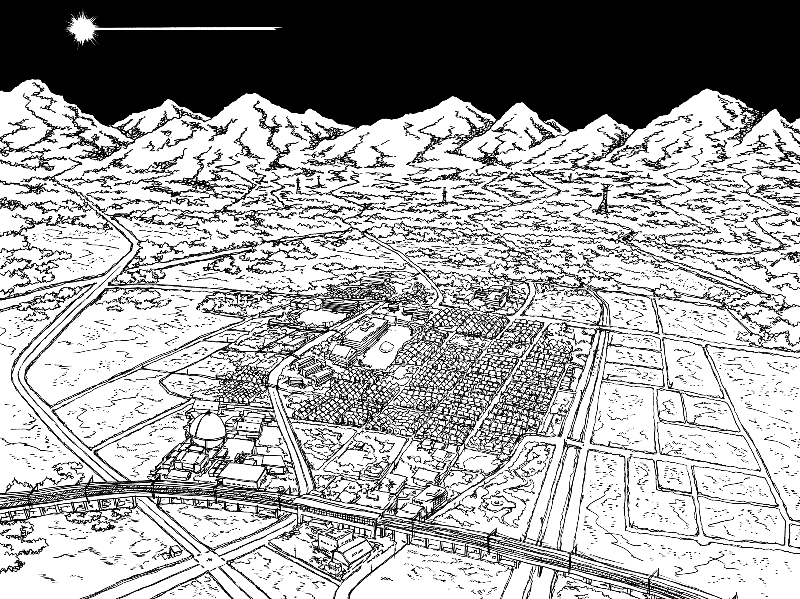
Sometimes you read manga that are so weird, you don’t know what you’ve just read. Soil by Atushi Kaneko is exactly that. Yet it’s a great manga and I enjoyed it immensely.
One day, a family living in Soil New Town vanishes without a trace. Two detectives, Yokoi and Onoda, are sent to investigate what appears to be a routine case. Before long, however, stranger and stranger details about the town and the events at play are revealed.
Soil’s art is as strange as the manga itself and might appear simplistic or amateurish at first. After a while, however, one notices just how unique and detailed Atushi Kaneko’s art truly is.
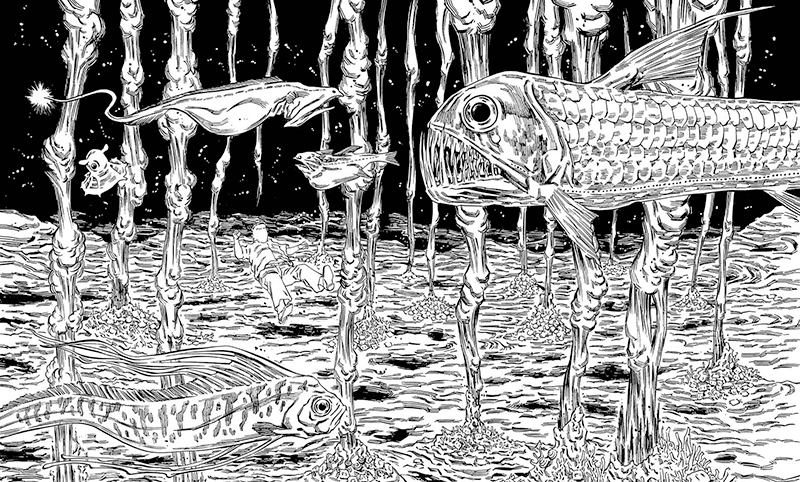
One of the major problems in Soil is the characters. While they are rather complex and realistic, they are also eccentric and heavily flawed to the point of being unlikeable.
While Soil is so different and refreshing, it can get a bit too weird. Especially in its latter half, so many weird elements are added, one tends to just give up to understand what’s going on. This also includes the ending, which doesn’t give answers, but makes you wonder even more what you’ve just read.
Soil’s still a great manga, one that’s rather refreshing for how outlandish it is. I believe it’s a great manga, one anyone should read. It’s an experience unlike anything else. If you like surreal manga, try Soil.
Oyasumi Punpun
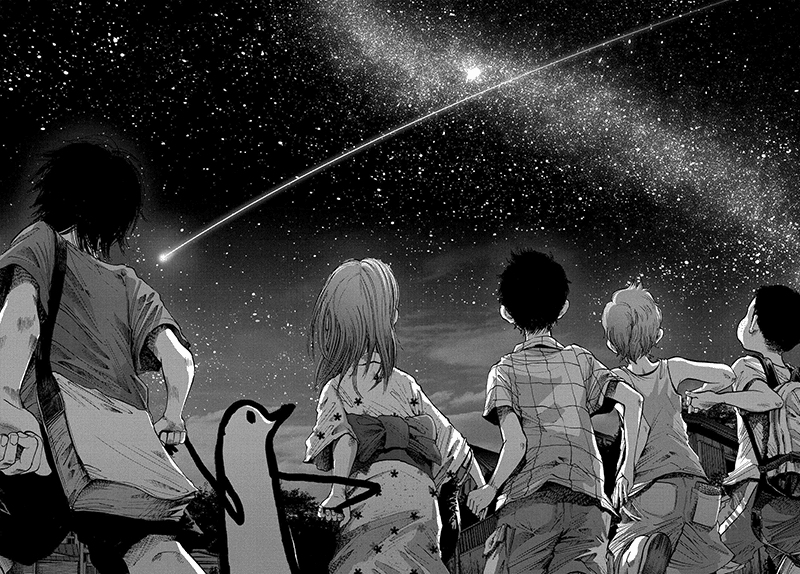
Oyasumi Punpun is a great manga and one of the most dramatic and depressing coming-of-age stories of all time.
It tells the story of Punpun Onodera, a normal eleven-year-old boy. Soon enough, however, Punpun has to learn just how fickle relationships can be. As we learn more about Punpun himself, his friends, and his family, we witness how a shy little boy becomes reclusive and turns down a dark path.
Punpun’s a depressing story, and a seriously tough read. It’s full of raw, gritty details that show us how even the smallest event can lastingly influence us. Yet, it’s also a realistic and relatable story.
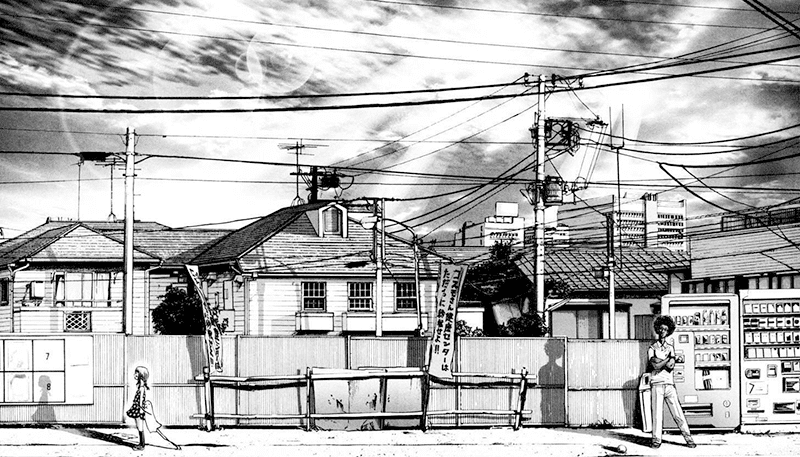
Oyasumi Punpun’s art is unique and beautiful, but also gritty and gloomy. The most interesting part, however, is the design of Punpun and his family. They are drawn as comical, bird-like beings. This helps to make Punpun stand apart, to better convey his emotions and reactions, but it also shows that he’s a person who just doesn’t fit in.
Yet, I have my problems with Punpun. The first is the last arc of the manga. While I felt I could always relate to Punpun and the events at play, things got a little too crazy near the end. Another one’s that the manga can feel self-indulgent and pretentious. A lot of psychological, deeper and complex themes are presented and discussed, but sometimes, it feels they are just there for the sake of being there. Lastly, a lot of time is spent on Punpun’s friends. They are all likeable and interesting, but Punpun’s narrative is always the more interesting one.
Overall, Oyasumi Punpun is an uncomfortable and depressing manga, but also a thought-provoking read. While I think it’s a great manga, it’s not a joyful experience.
Tomodachi Game

Tomodachi Game by Mikoto Yamaguchi and Yuuki Satou is a great manga about mind games.
It tells the story of Yuuichi Katagiri. He values his friends over everything and works hard every day to save money for a school trip. When the class money’s stolen, suspicion falls on two of his friends.
The following night, he and his four best friends are forced to take part in the titular game. It’s revealed that one of their friends has a massive debt and stole the class money to enter the Tomodachi Game.
For the first few chapters Tomodachi Game might appear rather simplistic and generic. The first game and even the second don’t stand out much. During the aftermath of the second game, things get much more interesting as the first hints of a much bigger plot are revealed.
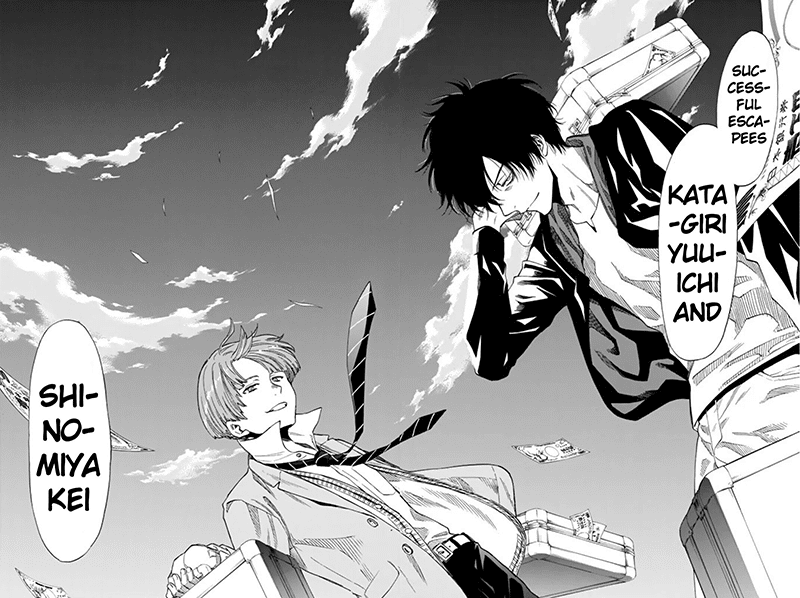
The most interesting part of this manga, however, is Yuuichi, the protagonist. We soon learn that he’s not your typical good guy, but a rather twisted and ruthless person. He’ll do anything to win against his enemies. Tomodachi Game’s such a great manga and such an interesting read almost entirely because of Yuuichi’s character.
Tomodachi Game’s definitely worth a read, especially for its unique protagonist. It might, however, not seem like a great manga early on. Getting through those initial chapters is very well worth it.
Shin Angyo Onshi
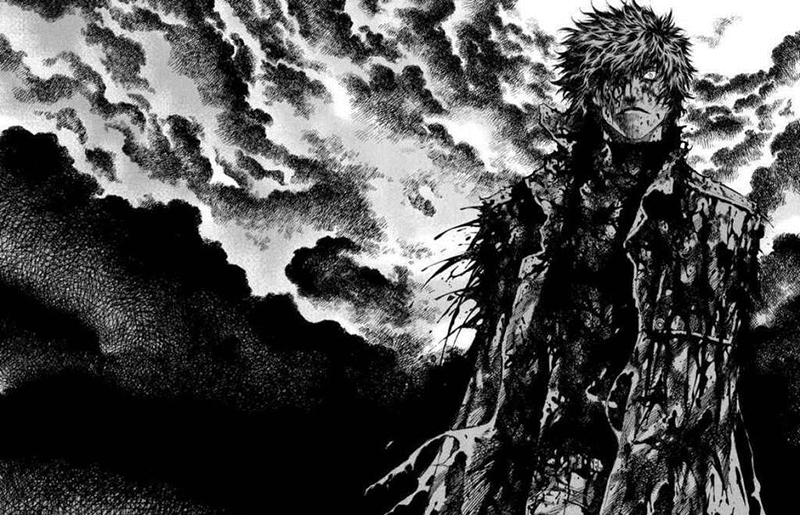
Few dark fantasy manga can compare to In-Wan Yoon and Kyung-il Yang’s Shin Angyo Onshi.
The story centers on Munsu, an Angyo Onshi or government agent tasked with bringing corrupted government officials to justice. After the destruction of his home country, Jushin, he travels the land and continues to fulfill his work.
Shin Angyo Onshi starts off in a rather episodic fashion. The more we learn about Munsu, the Angyo Onshi, and what caused Jushin’s destruction, the more complex the plot becomes.
What makes Shin Angyo Onshi such a great manga, however, is the outstanding art and the fantastic characters.
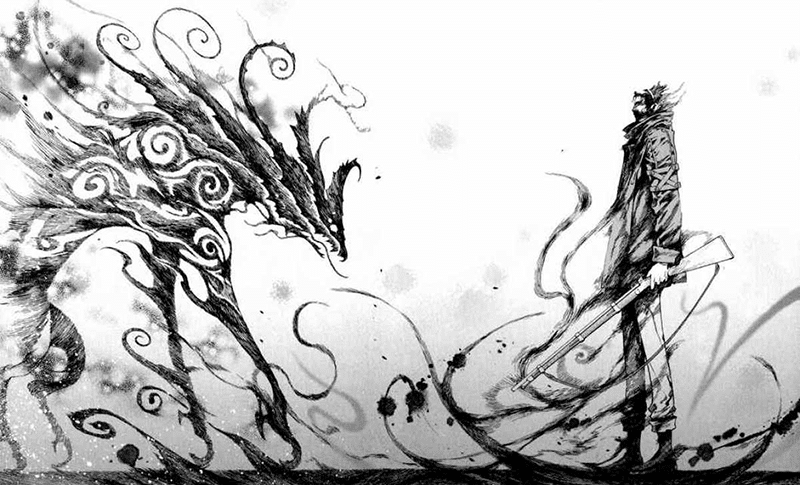
The art rivals that of the best manga out there and is breathtakingly beautiful.
The most interesting aspect of this manga are the characters. While there’s a clear distinction between protagonists and antagonists, neither is painted as truly good or bad. Instead, we learn more about all of them and about their motifs.
The best character, however, is Musun. He’s portrayed as an anti-hero, someone who doesn’t shy away from questionable methods. While he might seem ruthless at first, we soon learn just how complex a character he truly is.
Shin Angyo Onshi is a great manga and a delight for anyone who likes gritty, dark fantasy.
Tokyo Manji Revengers

Ken Wakui’s Tokyo Manji Revengers is one thing above all else, fun. It’s one of the most enjoyable reads I had in a long while.
It tells the story of Takemichi Hanagaki. He’s hit rock bottom, but things get worse when he learns his ex-girlfriend, Hinata Tachibana, was murdered.
While he wonders where things went all wrong, he suddenly finds himself twelve years in the past. Back then he was still in a relationship with Hinata, and realizes he’s now got the chance to change the future.
While the time-travel premise of the manga’s interesting enough, it’s the characters that make this such a great manga. They are all likeable, and badass in their own right.
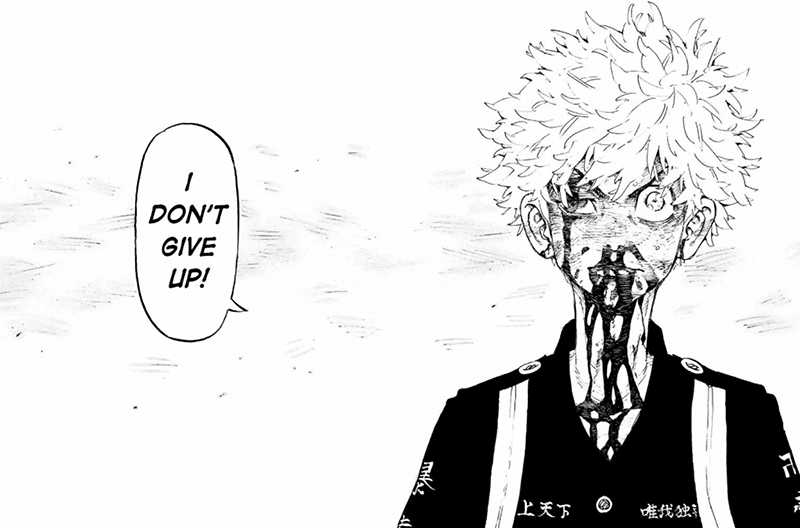
The only exception is Takemichi. He’s weak and cries a lot. While other shonen protagonists grow and become stronger, Takemichi doesn’t, but it makes him a much more realistic and grounded character.
The plot of Tokyo Manji Revengers is full of twists, time travel shenanigans, and, of course, lots of cool fights.
One problem, however, is the age of the characters. We’ve kids no older than fourteen who form violent street gangs, fight each other and even kill each other. It’s taking things a bit too far. Another problem was the ending, which felt rushed and rather unrewarding.
Overall, it’s a great manga, featuring a unique time-travel plot, fantastic characters and is an extremely fun read.
Battle Royal
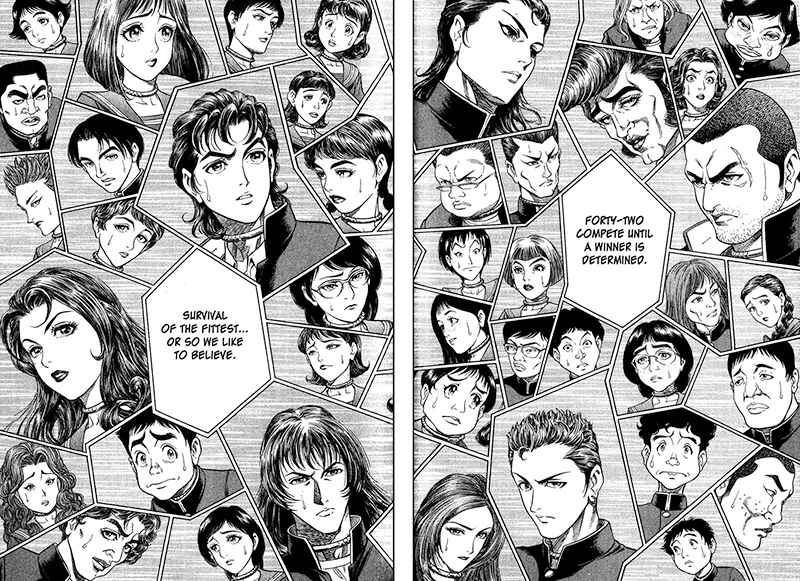
Battle Royal is a manga adaption of Koushun Takami’s novel by the same name. It’s a brutal, disturbing, but also great manga.
While it retells the novel’s story, it often takes liberties to make things more dramatic. It also explores each student’s backstory and shares more details about them and their life before the game.
Battle Royal’s story is rather simple. Each year, a class is selected to take part in the Battle Royal program and taken to a remote area. There, they are forced to kill each other until only one survivor remains.
Our protagonist, Shuuya Nanahara, decides against killing any of his classmates and instead makes it his goal to get off the island.
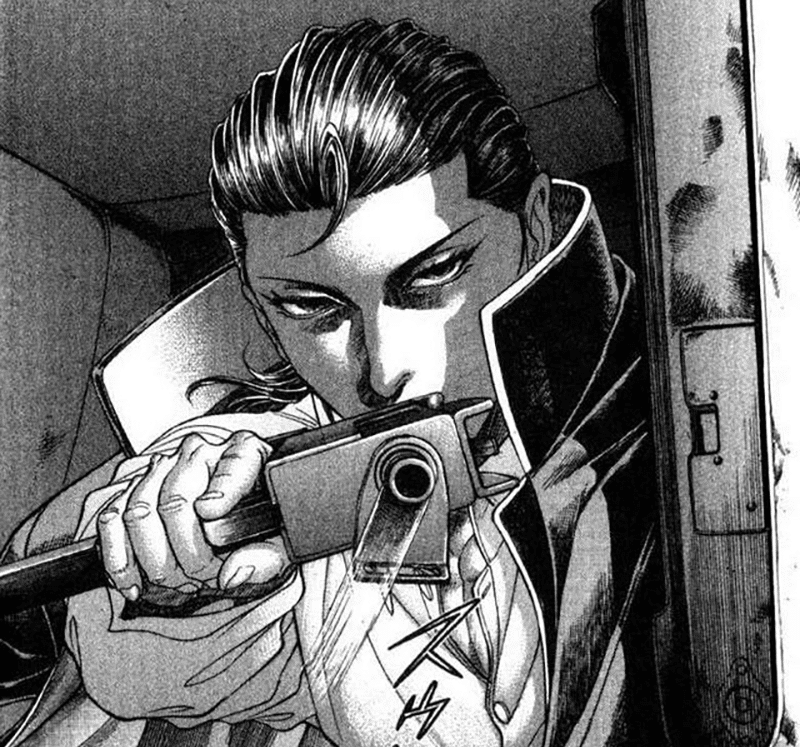
Battle Royal’s setting is disturbing as it is, but the manga showcases it in all its insane and over-the-top goriness. We see students stabbing and mutilating each other, disembowelments, and a lot of other disturbing events.
One of the biggest flaws in Battle Royal that can deter from people’s enjoyment is the depiction of characters. They are all in the same class, and about the same age, yet some look no older than ten, while others look like adults in their thirties. Another problem is the approach to story-telling. It’s rather formulaic. We get to know a student, witness their backstory before they are ultimately killed.
Yet, I still think Battle Royal is a great manga. It’s a brutal, but also deeply psychological read. If you enjoy manga featuring death games, I highly recommend it.
Tower of God
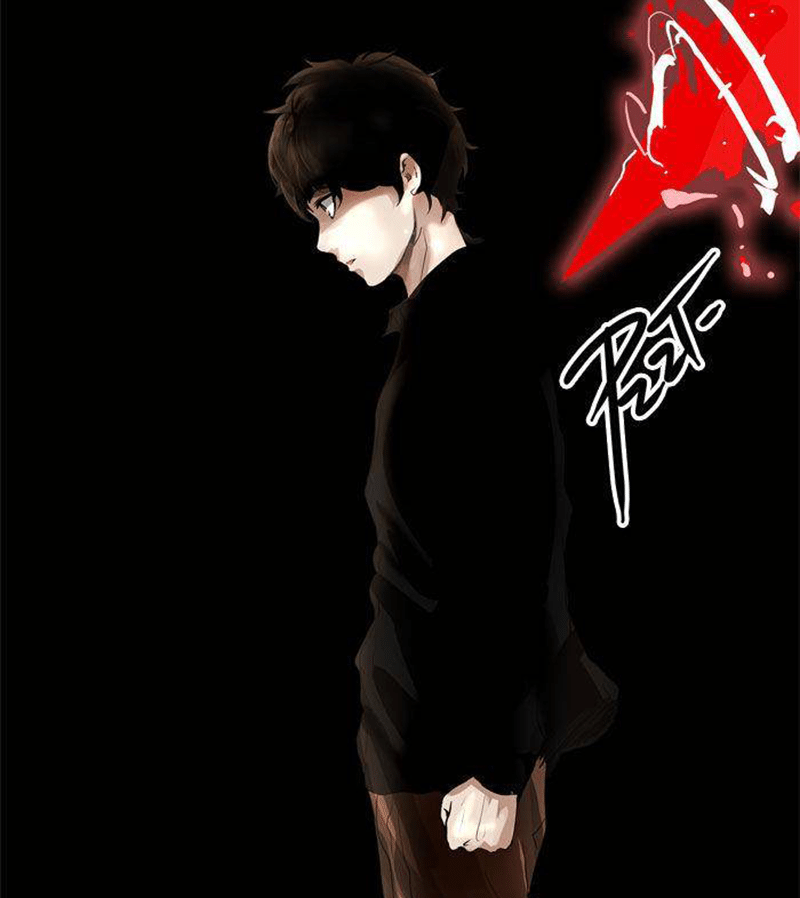
While SIU’s Tower of God is manhwa, I still want to include it on this list of great manga.
Our protagonist, Twenty-Fifth Bam, was all alone until he met Rachel. Yet she’s obsessed with the Tower and climbing it. After she vanishes, Bam sets out to meet her again, and enters the tower himself. Yet he’s deemed an Irregular, and soon various people take notice of his entry.
Climbing the tower is no easy feat, and on each floor, Bam has to pass a test to continue his climb.
The story starts out simple, but soon expands. We’re introduced to various groups of interest and learn more about the Tower itself.
While the art starts out as barely serviceable, it improves vastly, giving Tower of God a sort of unique beauty.
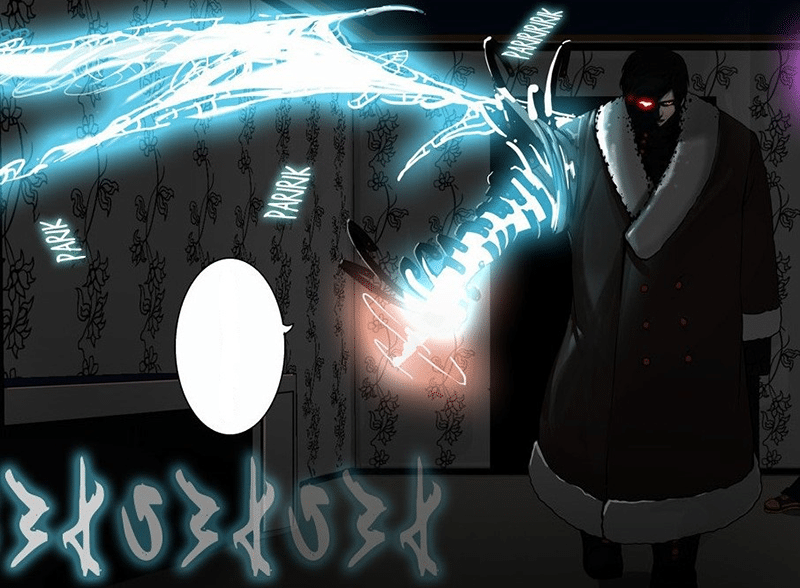
Yet Tower of God has its flaws. The first is the cast of characters. With each new arc, we’re introduced to new characters, and things soon become overwhelming. Another is the story-telling. Each arc introduces us to a new setting, new rules or new games before surprising events happen and everything’s thrown overboard. By now, the unexpected has become the expected and often the time spent on setting things up feels wasted.
The biggest problem, however, is Bam himself. At the outset of the story he’s a likeable underdog, but before long, he turns into a typical, overpowered shonen-archetype.
And yet, I still consider Tower of God a good read and a great manga or manhwa. While I’m sure it’s not for everyone, I still urge you to read a few chapters.
Pluto

Astro Boy’s one of the most popular classical manga of all time. Naoki Urasawa’s Pluto is a retelling of Astro Boy’s story, but from an entirely different perspective.
Our protagonist is Gesicht, one of the seven most advanced robots in the world, who works as a robot detective for Europol. When another world-famous robot gets murdered, he’s sent to investigate. He soon discovers that the murder couldn’t have been committed by a human and learns of a mysterious entity known only as Pluto.
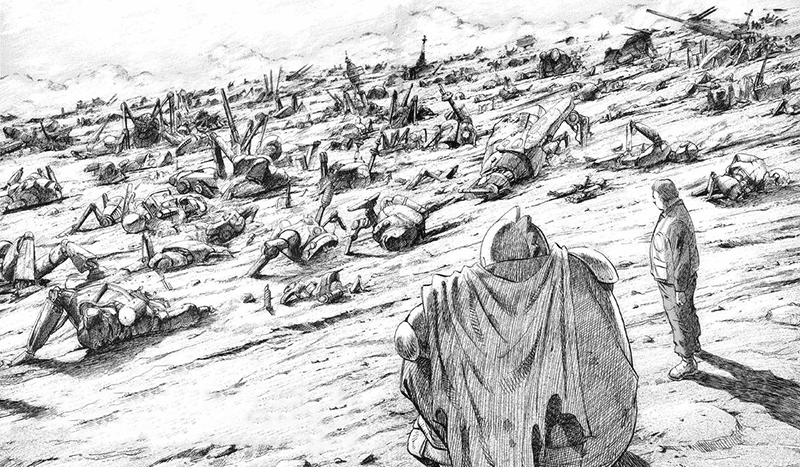
At the center of Pluto, is the relationship between robots and humans and Naoki Urasawa spends a lot of time developing it. He shows that not all is well, anti-robot hate exists and robots are mistreated and even destroyed. However, the boundaries between humans and robots become more and more blurred.
What makes Pluto such a great manga is the story and characters. Pluto’s plot is a gripping mystery with many interesting twists and turns that will keep you guessing. The greatest part is the storytelling. Pluto’s a solemn and intimate story, one that’s moved forward via dialogue and character interactions.
Pluto’s biggest problem is one I encountered in others of Naoki Urasawa’s works. The story peaks around the middle, leaving the later volumes a bit lacking.
This doesn’t mean Pluto’s bad. It’s a great manga, and one of the best in the science-fiction and mystery department.
Darwin’s Game
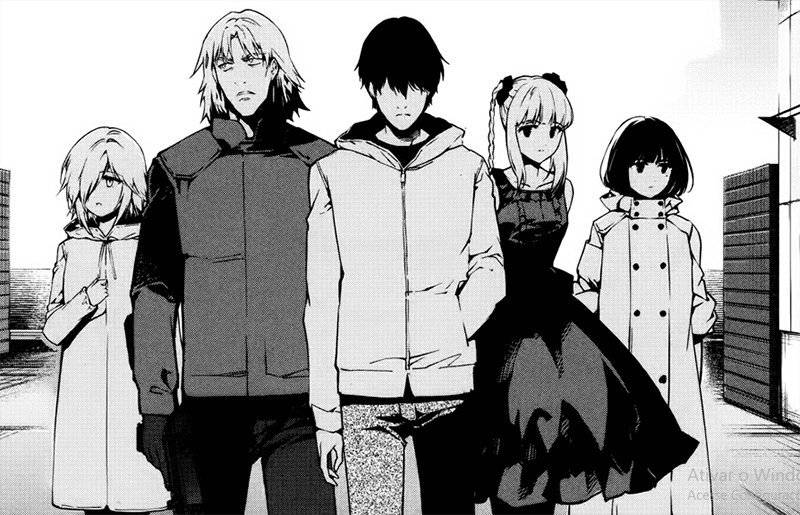
Ginko and Yuki Takahata’s Darwin’s Game is another great manga featuring death games.
Kaname Sudo’s a normal high school student. All that changes when he signs up for a mobile game called Darwin’s Game. Before long, he gets followed and is attacked by a weird person dressed up as a mascot.
Yet, Kaname’s not your typical protagonist. At first, he flees, rather than fights, but soon he accepts the game, becomes quite good at it and also quite ruthless. It’s enjoyable to see a character go all in.
While the games in Darwin’s Game start out as typical as death matches, they soon become more interesting and grander in scale, as does the story. More and more mysteries are added, and especially the newest arc makes you wonder what direction the manga will take.
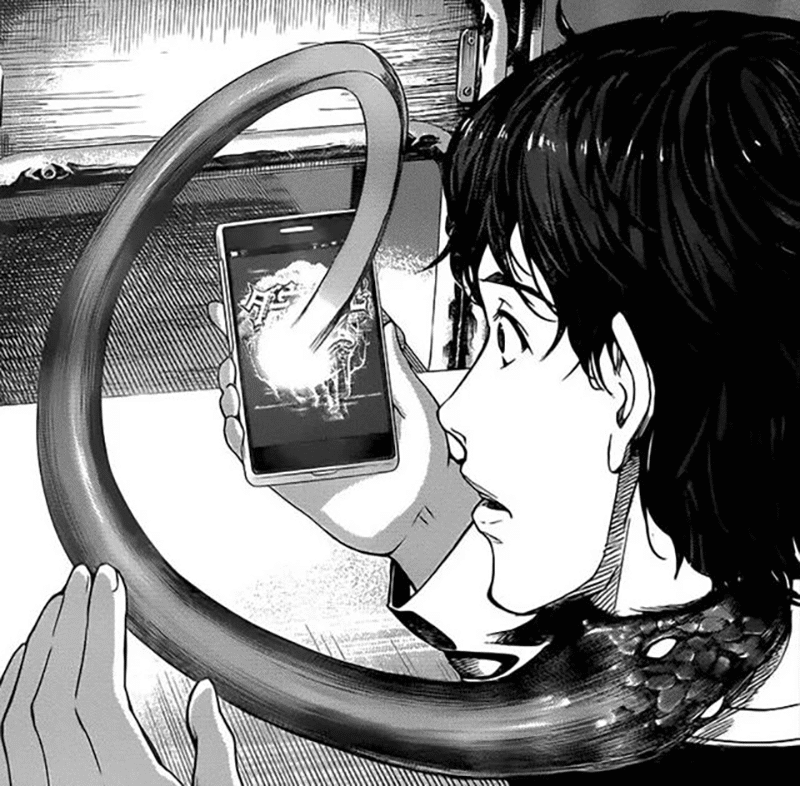
Darwin’s Game is a battle manga, and it’s here where it truly shines. Fights in this manga are intense, suspenseful, and ripe with action. The best part about them, however, are sigils, special powers characters receive upon entering the game.
While Darwin’s Game doesn’t redefine the genre, it adds enough elements to keep things fun, fresh, and engaging. Especially Kaname and some of the other characters are all quite interesting and likeable.
If you’re looking for a great manga featuring death games, Darwin’s Game is worth a look.
Holyland

Kouji Mori’s Holyland is one of the greatest manga in the martial arts genre.
Yuu Kamishiro’s a boy who’s bullied by his peers and doesn’t seem to have a place in society. He stops attending school and starts training a single boxing punch.
Before long, he takes to wandering the streets, fighting thugs and building a reputation for himself, all in search of his Holyland.
Yet the more he fights, the more his name spreads and the more people know of the ‘Thug Hunter.’
What makes Holyland so great are the characters, especially Yuu. We can relate to him, feel how lost he is, and sympathize with his wish to find a place to belong. Holyland is a coming-of-age story, one conveyed via martial arts and street fights.

Yuu, however, isn’t the only fantastic character in this manga. Almost everyone’s carefully developed and they all have their own reasons for being out in the streets. Especially Masaki Izawa and Shougo Midorikawa are to name here.
Yet, this character-driven approach leads to other problems. Holyland focuses heavily on character development, investing almost no time in the development of an overall plot. It’s rather repetitive, and after each fight, a new enemy appears.
Yet those are only minor problems. Holyland is foremost a manga about its characters. It centers on their drive, development and it’s here where it exceeds many other manga. If you enjoy martial arts manga, Holyland’s a must-read.
Crows

Hiroshi Takahashi’s Crows is another great manga in the martial arts genre, or rather, a delinquent manga.
Harumichi Boya transfers to Suzuran, a high school full of delinquents, and soon sets his sights on conquering the school and becoming its number one fighter.
Things seldom go as planned, and soon warfare between all the gangs in the area breaks out.
What makes Crows such a great manga is how simple it is. It doesn’t want to be more than a delinquent manga about fights and that’s exactly what you get. While it has its deeper or tragic moments, it’s a rather lighthearted series.

What it does, however, it does fantastically well. It’s a lot of fun, the characters likeable and unique, and the fights are fantastic.
One thing that might be a bit off-putting is the series’ art style. Because Crows is an older series, it has a distinct 90s look to it. That doesn’t mean the art style’s bad, just different and takes a bit of time getting used to.
Another problem is the complete absence of teachers, parents and law enforcement. Juvenile delinquents start a fight in the middle of the city, beat each other senseless, and no one intervenes or cares.
Overall, I enjoyed reading Crows immensely. It’s a great manga about martial arts and delinquents, and it delivers fantastically well for what it sets out to do.
20 Fantastic Long Manga Anyone Should Read
I’ve always been a fan of manga, especially long manga. It’s a medium that’s always been close to my heart. You can see so in my lists of the best horror manga and the best manga of all time.
What makes it so interesting to me is the combination of fantastic visuals with long, complex storylines.

While I enjoy almost all manga out there, I have a weak spot for series that are truly long. Some of them tell complex stories, while others repeat a tested formula of storytelling. Either way, I can’t help but get lost in these long manga series.
For this article, I put together my list of truly long manga, all of which exceed a total number of at least two-hundred chapters.
20. Fourteen

Kazuo Umezu is often called one of the most influential names in horror manga.
Many of his works are vastly popular. He’s the creator of such classics as God’s Left Hand, Devil’s Right and The Drifting Classroom.
His longest, and most outlandish work, however, has to be Fourteen. It’s without a doubt one of the most surreal and outlandish manga I’ve ever come upon.
This long manga’s set in a dystopian, futuristic version of Earth. Our protagonist is Chicken George, a hyper-intelligent chicken mutant who grew in a chicken production facility.
Once he’s escaped, he promptly declares war on humanity for their abuse of nature and animals.
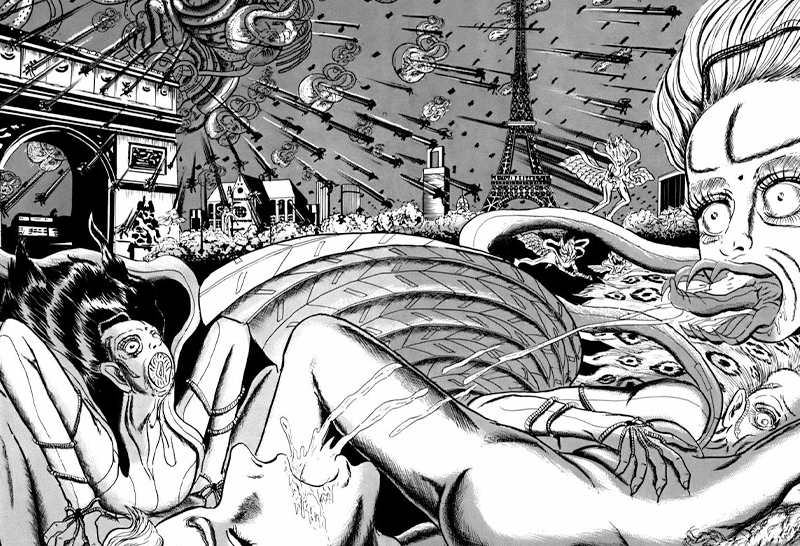
As weird as a premise featuring a chicken man sounds, this is only the tip of the iceberg. Fourteen is far, far weirder than even this premise does it justice. It’s an utterly ridiculous story and one of the strangest and most surreal apocalypses I’ve ever read. The manga features a ploy to replace all dying plant life by props, an alien invasion and a T-Rex shaped space ship, among other things.
All of this madness is presented to us in Kazuo Umezu’s typical art style. It’s old-fashioned, at times simple and even ugly, but at others it’s nothing short of fantastic. This is especially prevalent when disaster strikes and during depictions of his strange futuristic vision of Earth.
Fourteen is a long manga, but I think it’s very well worth reading. It’s a work that’s so utterly bizarre, weird and surreal, one has to experience it. I had a blast reading it, if only for how surreal, creative and utterly stupid it was.
19. I Am a Hero
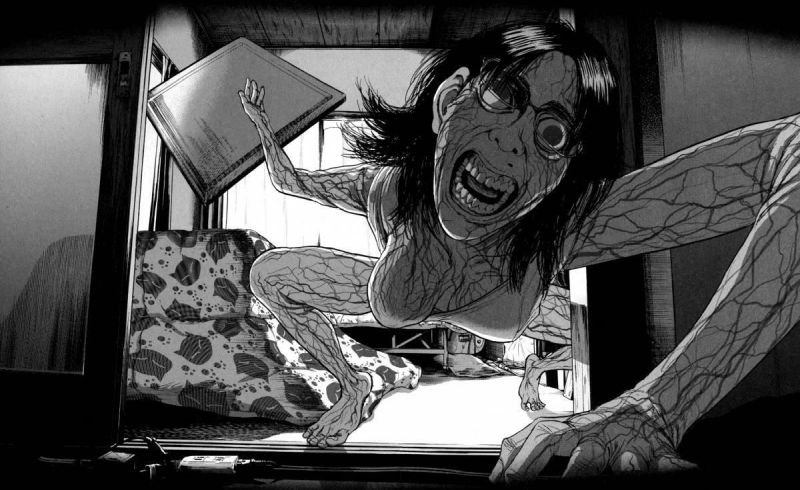
Zombie apocalypses are amongst the most common tropes in the horror genre. Kengo Hanazawa’s I Am a Hero, however, is a long manga that’s quite different from other zombie stories.
Foremost because of its protagonist. Hideo Suzuki is a manga assistant and a strange young man suffering from a multitude of mental problems. What makes I Am a Hero so interesting and unique is to see how someone like him handles such a scenario.
Yet, it’s not only our protagonist who’s different. The Zombies in this long manga differ markedly from those in other media. They aren’t simply walking corpses, but twisted and contorted beings that seem to change markedly as the story continues. We witness horrible versions of what was once human and eventually encounter giant, fleshy abominations.
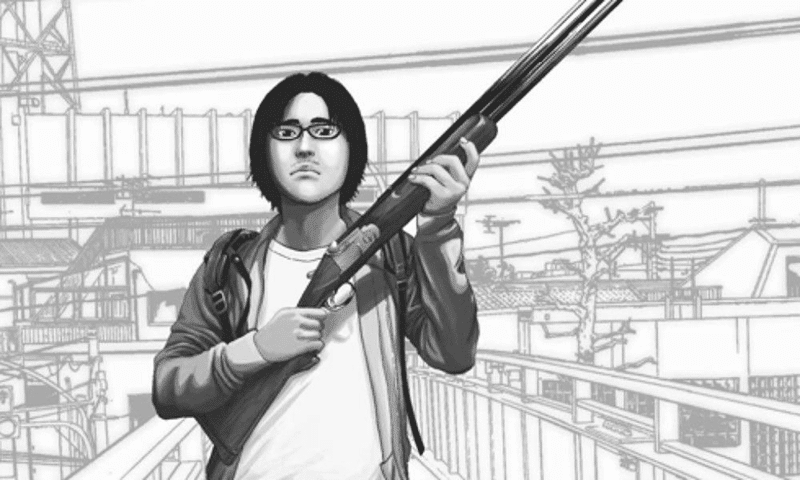
I Am a Hero is a long manga that takes its time to get going. The first chapters are slow, and focus more on Hideo than anything else. Once the zombies appear, however, things get quite scary.
The only problem I have with the manga is the ending. It’s rather abrupt and ambiguous, almost giving us the feeling that it was rushed. This, however, doesn’t change the fact that, overall, I Am a Hero is a fantastic long manga that’s well worth reading, not only for fans of zombies.
18. Rurouni Kenshin

Rurouni Kenshin by Nobuhiro Watsuki is another long manga. It’s a samurai manga that tells the story of Hitokiri Battosai. He was infamous for being a killer during the Bakumatsu War.
Yet, the manga doesn’t tell the story of the Bakumatsu War itself. It starts years afterward. By then, Hitokiri Battosai is known as Himura Kenshin, a wandering samurai. He’s far from the bloodthirsty killer his reputation makes him out to be. Instead, he turns out to be a kindhearted soul who’s haunted by what he’s done. He wields a reverse blade katana and has sworn to never kill again.
The route to redemption is never an easy one. Over the course of this long manga, Kenshin runs into various people who all hold a grudge against his alter ego, Hitokiri Battosai.

This long manga comprises multiple arcs. The first set in Edo is more episodic and focuses more on introducing Kenshin and the rest of the main cast. It’s during the second arc, the Kyoto arc, where the manga truly shines. It’s here that we are introduced to one of the most notorious antagonists in Rurouni Kenshin, Shishio Makoto.
What makes this long manga so interesting are its deeper themes. It focuses on redemption and on someone who wants to bury their past. Yet, Kenshin seems unable to do so.
It’s a fantastic long manga, one that features some fantastic action and a memorable cast. If you’re looking for a great samurai manga with some complex characters, I highly recommend Rurouni Kenshin.
17. Usogui

Usogui by Toshio Sako is one of the longest manga on this list. It’s a manga that focuses on mind games and gambling.
It tells the story of Baku Madarama, who’s known as Usogui, the Lie Eater. Over the course of this long manga, he takes part in many deadly gambles.
Usogui’s a manga that gets crazy right from the start. After a brief introduction, no longer than a handful of chapters, we enter the very first game with deadly stakes. From here on out, things only get crazier.
What makes Usogui such a great manga are, without a doubt, the various games. While they can be complex, they are never impossible to understand. What makes them so interesting, however, are the many psychological tricks and mind games the characters employ to win.

I also quite liked the characters in this long manga. Baku is an absolute badass who never shies away from a death game or overwhelming odds. Kaji starts out as more of stand-in for the reader, but over the course of the manga he develops into a talented gambler of his own right.
I had a blast reading Usogui. I think it’s one of the best gambling and mind game manga out there. One thing to be said about Usogui, however, is that many of the scenarios and games depicted are quite unconventional and extreme. Yet, they never fail to be suspenseful and full of tension.
If you’re a fan of gambling and mind games, I highly recommend Usogui. It’s one of the best the genre offers.
16. Dragonball

What needs there to be said about Akira Toriyama’s masterpiece? Dragonball is one of the longest and most popular shonen manga of all time.
The story follows Son Goku from childhood all the way through adulthood. Over the course of this long manga, he searches for the seven Dragon Balls and battles stronger and stronger adversaries.
Dragonball is as typical as a battle shonen manga can be.
Yet, when most people hear the name Dragonball, they think of Dragonball Z, giant energy blasts and impossibly powerful adversaries. In its earlier parts, however, the manga was quite different, and a more intimate affair. It was all about Son Goku and Bulma going on wacky adventures in a world full of references to popular mythology and martial arts.

During these earlier parts, Dragonball was much more about humor and silly gags. It was only during later arcs that the manga became more serious.
The high point of Dragonball is without a doubt the art. It’s nothing short of beautiful. All the characters have a great and unique design and the world’s brought to life by the personal style of Akira Toriyama.
As a pioneer of the shonen manga, many parts of Dragonball might feel date or typical. It’s art, however, still holds up today as some of the best in the entire medium.
Dragonball is a long manga, but I enjoyed it in its entirety. While it has its faults, it’s still one of the best shonen manga of all time.
15. Baki

Grappler Baki by Keisuke Itagaki and all its prequels are amongst the craziest martial arts manga out there.
It tells the story of Baki Hanma, a young martial artist who partakes in violent fights in Tokyo’s underground fighting arena, the Kourakuen.
Baki’s also the only son of Yuujirou Hanma, the so-called ‘Ogre’ and ‘the Strongest Creature on Earth.’
Over the course of the installments of this long manga series, Baki fights against a variety of other fighters. His reason is simple: One day, he wants to be strong enough to stand up and defeat his hated father.
Baki can be quite crazy and over-the-top. Yet, its depiction of martial arts is more realistic than in many other shonen manga. There are no power levels or ki. Instead, it’s all about pure martial arts taken to the next level.

Since it’s a long manga series about martial arts, it’s all about fights. Each fight is well-written and detailed, making them very exciting and enjoyable. The level of dedication that went into them is quite impressive. They are also rather brutal. We can see blood spraying, bones breaking, and even flesh being torn.
What I really came to enjoy about Baki was its cast of characters. They each have their own backstory, fighting style, and reasons for fighting. My favorite amongst all of them has to be Shibukawa. He’s a tiny old man, but a master of Aiki and often takes down fighters much bigger and stronger than himself.
The biggest downside to Baki, especially in its earlier installments, is the art. It’s not only old-fashioned, but at times even ugly to look at. Yet, as time goes on, the art improves quite a bit.
14. Fist of the North Star

Do you like blood, gore and martial arts in a post-apocalyptic setting?
In that case, Fist of the North Star by Buronson and Tetsuo Hara might be exactly what you’re looking for.
After nuclear war has devastated the world, the remains of civilization are ruled by the strong.
In this world, a mysterious wanderer called Kenshiro travels the land. Wherever he goes, he fights evil by using his deadly martial art, Hokuto Shinken.
What starts out as a rather simple, almost episodic manga soon becomes deeper and more ambiguous, as we learn more about Kenshirou.
Fist of the North Star was one of the most influential and popular manga of the eighties.

It’s a long manga that’s all about action and brutal fights. This violence can be rather gratuitous, but it’s what makes Kenshirou’s battles such a delight.
Fist of the North Star’s art is rather typical for its time period and rather manly. All the male characters are testosterone fueled masses of muscle who do manly things and shed manly tears. It’s nothing short of glorious.
While the high point of the art are the many battles, I truly came to enjoy the rendering of the desolate, post-apocalyptic setting.
Character wise, Kenshirou was a bit of an odd one. He was more vessel for the story and less character in its own right. The consequences of his actions were never shown to affect him, but the people around him. He’s almost a savior figure who simply wanders through the wastelands to fight evil.
There are, however, some characters who stand out. Namely Rei, Mamiya and also the antagonist Raoh.
Overall, Fist of the North Star comes with a great post-apocalyptic setting and some of the best action in all of manga.
13. Kengan Ashura and Kengan Omega

Kengan Ashura by Yabako Sandrovich and Daromeon is a martial arts manga I discovered about a year ago.
If you like martial-arts tournaments in manga, you will love Kengan Ashura because it’s essentially that, a giant, long-lasting martial arts tournament.
In the world of Kengan Ashura, every major business deal in Japan is decided by martial arts matches. Watching over and responsible for these matches is the Kengan Association, whose members are the most influential figures in the Japanese business world.
Our protagonist, Ouma Tokita, wants to be the strongest martial artist. For that reason, he becomes a fighter for the Nogi Group.
After a brief introduction and a few matches against other companies, the Kengan Annihilation Tournament is announced to decide the next chairman of the Kengan Association.

The most important thing to know about Kegan Ashura and its prequel is that you get exactly what you’re looking for: brutal and over the top martial arts matches in a tournament. While the story has a few twists and turns, it never strays far from these routes.
What makes Kengan Ashura so great, however, are its characters and the fantastic art.
Each individual character has a unique design, fighting style and backstory.
The high point is clearly the art. It’s amongst the best in the entire martial arts manga genre.
This art also serves to present the brutal fights in this manga in all their glory. The fights in Kengan Ashura and Kengan Omega are all absolutely fantastic. They are often brutal, completely over the top, and feature a variety of insane techniques.
Overall, if you like crazy characters and over-the-top martial arts fights, be sure to check out Kengan Ashura.
12. Tokyo Manji Revengers

Tokyo Manji Revengers by Ken Wakui is one of the newest manga on this list of long manga. It’s one of the most enjoyable manga I’ve read.
Takemichi Hangaki, our protagonist, has hit rock bottom. Yet, things get worse when he learns that his childhood girlfriend, Hinata Tachibana, was murdered by the Tokyo Manji Gang.
While he wonders when things went downhill, he travels back in time. Finding himself twelve years ago and still in a relationship with Hinata, he decides to not only save her life but to change the future.
The manga’s premise is interesting enough: traveling back in time to redo life and fix your mistakes.
Yet, it’s not so much the plot, but the characters that make this long manga so great. Every character’s not only unique, but likeable in their own way. Except for the obvious antagonists.
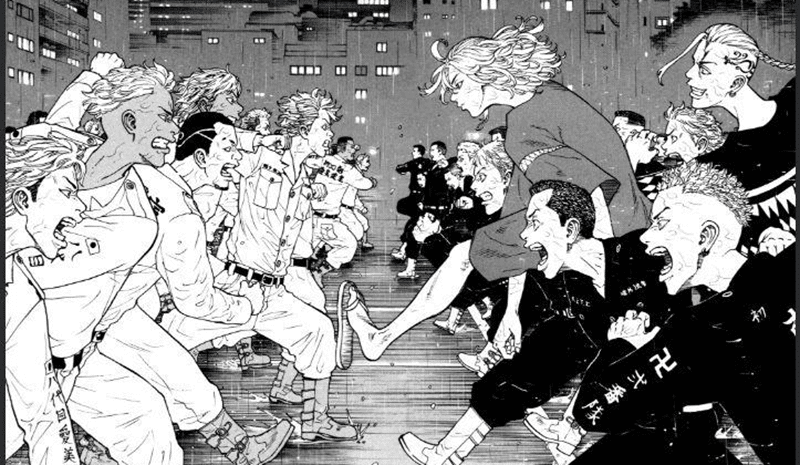
Tokyo Manji Revengers is a long manga that’s all about gang fights and almost every character is a badass fighter. Yet, Ken Wakui mixed things up. Takemichi isn’t a fight, and he doesn’t become one. No, he’s weak and cries a lot. This, however, makes him a much more grounded and realistic character. He’s rather the heart of the group.
While the characters make this manga so great, the plot is by no means bad. Especially the many time travel shenanigans and the many twists and turns make it quite engaging.
The art, while not outstanding, is good overall. It truly shines in the many fights and the character design. Every character has their own unique design and style.
Overall, I had a blast reading this long manga and absolutely loved the characters. I highly recommend anyone to check this manga out.
11. Tokyo Ghoul and Tokyo Ghoul:re

Tokyo Ghoul and its prequel Tokyo Ghoul:re is another vastly popular and long manga.
The world of Tokyo Ghoul is populated not only by humans but also by ghouls. Ghouls are creatures who look just like humans, mingle with them, but have to feed on them to survive.
Our protagonist is the college student Ken Kaniki. He gets to know a beautiful young woman named Rize. The two of them bond over their love for books. Unbeknownst to Kaniki, Rize turns out to be a ghoul and, driven by her hunger for human flesh, attacks him.
Kaneki survives and is saved by the mysterious Dr. Kanou. Yet, not all is well, for Kaneki learns that he’s now part ghoul and can’t stomach normal food. Eventually, he finds refuge at a café and a safe house for ghouls called Anteiku.

The earlier parts of Tokyo Ghoul focuses mostly on Kaneki, how he handles his new life and the many other characters he encounters. Before long, however, the story becomes more complex as various other factions and more dangerous entities are introduced. This is especially prevalent in the sequel Tokyo Ghoul: re which markedly expands the manga’s plot and world.
The manga’s biggest selling point is its art. Both creature and character design are fantastic. Backgrounds look great and Ishida Sui’s inky style fills the entire manga with a gloomy and dark atmosphere.
What I truly enjoyed were the manga’s many battles. They were often brutal, violent, and full of carnage. Especially the ghouls showed some fantastic powers in the forms of their kagune which were always fantastically designed.
Tokyo Ghoul is a dark and long manga, one full of brutal violence and twisted creatures, yet it’s a fantastic read.
10. 20th Century Boys

If anyone’s famous for mystery manga, it’s Naoki Urasawa. 20th Century Boys is my favorite amongst his many works.
With about two-hundred-and-fifty chapters, it’s a long manga, but it’s also an extremely well-written one.
The manga’s story centers on Kenji Endo and his friends.
Kenji’s normal life changes when he learns of the suicide of his former friend Donkey. At the same time, a mysterious cult lead by a figure only known as Friend becomes popular in Japan. Before long, Kenji realizes that the cult and its leader are related not only to his friend’s suicide but also to his childhood.
From this point onwards, Kenji takes things into his own hands. He sets out to reunite his childhood friends and to figure out the truth.

While conspiracies plots centering on saving the world are nothing new, 20th Century Boys stands out by one thing alone: the storytelling.
With each chapter, the foreboding atmosphere and the sense of mystery never let up. Each new development brings forth more questions.
What I really enjoyed was the inclusion of different time periods. We’re often taken back to the times of Kenji’s childhood to reveal certain events and give us new pieces of the puzzle.
While I enjoyed the manga overall, and think most of the story’s masterfully told, its third and last arc is ultimately its weakest.
Overall, 20th Century Boys is fantastically well-written and amongst the best long manga out there.
9. Hunter x Hunter

Yoshihiro Togashi’s Hunter x Hunter is one of the most popular long manga out there.
The titular hunters are essentially treasure hunters with various privileges. To become a hunter, you have to pass the so-called Hunter Exam.
Gon Freecss, a young boy, and our protagonist takes part in the Hunter Exam. Thus begins the manga’s first arc, which also introduces us to our main cast.
From here on out, the manga features a variety of arcs featuring different antagonists or challenges for our main character. While some of these arcs can be weaker, others like the York New arc or the Chimera Ant arc stood out to me.

I especially want to call attention to the Chimera Ant arc, which was great overall and featured a fantastic major antagonist. What truly made this arc great, however, was the presentation of its last part, the Palace Invasion. It’s here that Hunter x Hunter broke many of its usual conventions and became something entirely unique.
Another reason I enjoyed this manga so much was the characters. All our protagonists are likeable, but the ones I truly came to enjoy were the antagonists. Hisoka is fantastically twisted and amongst the most bizarre characters I’ve ever encountered. Chrollo and the Phantom Troop are another group of characters who are exceedingly unique and interesting.
The last point I want to mention is Nen, Hunter x Hunter’s equivalent of super powers. While many manga feature super powers, the Nen System stood out to me. It’s a carefully created system with a variety of rules and restrictions.
Overall, Hunter x Hunter is one not only one of the best shonen manga out there but also one of the best long manga.
8. Kingdom

There are few manga as ambitions as Yasuhisa Hara’s Kingdom.
This long manga’s set during China’s Warring States era and depicts its unification under the state of Qin. It’s a work of tremendous scopes and at seven-hundred chapters it’s still far from done.
At the story’s outset, our protagonist Shin is a young servant boy. During a rebellion against the soon to be King of Qin, Ei Sei, he becomes involved in the matters of state.
It’s from here on that we follow Shin on his path to become a Great General under the Heavens and Ei Sei on his path to unify China.
The greatest part of Kingdom are the many large-scale battles common during the Warring States era. Every single one of them is presented in stunning details. Yet, as bloody and brutal as they are, the manga focuses more on the deployment of armies and the strategies and tactics employed.

While those battles make up most of the manga, other parts are dedicated to the power struggles at court and even the politics between the Warring States.
Since Kingdom is an incredibly long manga, it features a huge cast of characters. While Shin is a rather clichéd protagonist, many other characters are more complex and interesting. Examples include General Ou Ki, Ei Sei, Ryu Fui, Kanki, and of course, Riboku.
A word of warning, however. Kingdom might be a historical manga, but it often takes liberties to dramatize events.
The manga’s first arc is also its weakest, but the moment it’s time for the first large scale battle, it truly shines.
Overall, Kingdom is an extremely long manga, but it’s among the best in the history and military genre.
7. Gantz

At almost four-hundred chapters, Gantz by Oku Hiroya is another extremely long manga. It’s also amongst the most insane manga I ever read.
Kei Kurono, our protagonist and his childhood friend Masaru Katou, die during a train accident. Following it, the two awaken in a Tokyo apartment, surrounded by a group of people. In the room with them is a large black sphere, called Gantz, which tells them they now have to hunt down aliens living amongst humans. Soon after, they are teleported outside and Gantz’s very first mission begins.
Gantz is a gritty and brutal manga full of gloried gore and stunning action. Over the course of the manga, our characters have to partake in various missions with constantly rising stakes. At first, they are merely about taking down a few aliens, but as the manga continues, they have to fight larger and larger groups of aliens.
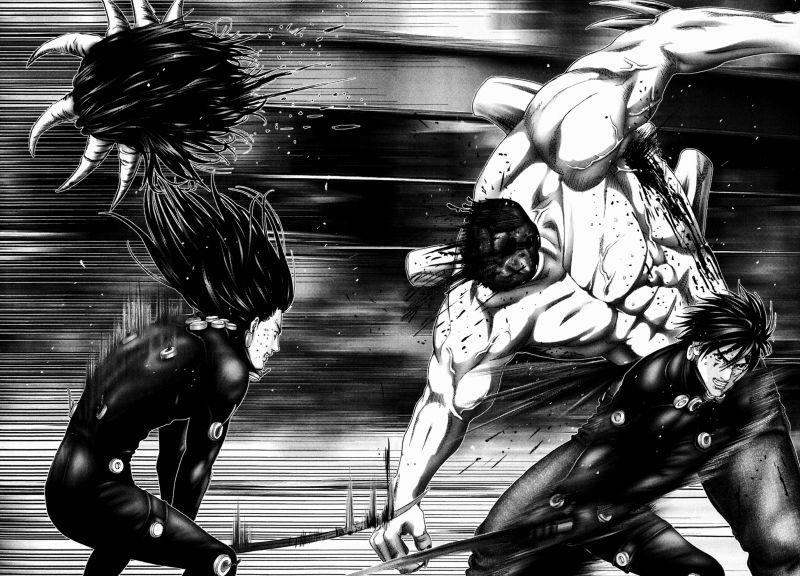
Gantz’s high points are the art and the action. The action is always fluid and fights are rendered in stunning detail. The same can be said for the aliens who are often outlandish and feature fantastic creature design.
Gantz is also absolutely unforgiving. Many times, the people who are sent on missions don’t know what’s going on and serve as nothing more than cannon fodder. We witness as many of them are brutally mutilated, shredded to pieces or even devoured.
Yet, my favorite part about Gantz is its protagonist. Kurono starts out as an unlikeable and egoistic teenager, but develops tremendously and matures into the leader of the Gantz team.
Gantz is an amazing, action-packed and long manga like no other. It’s weird. It’s gory. At times it’s even nonsensical, but it’s always a fantastically wild ride.
6. Liar Game
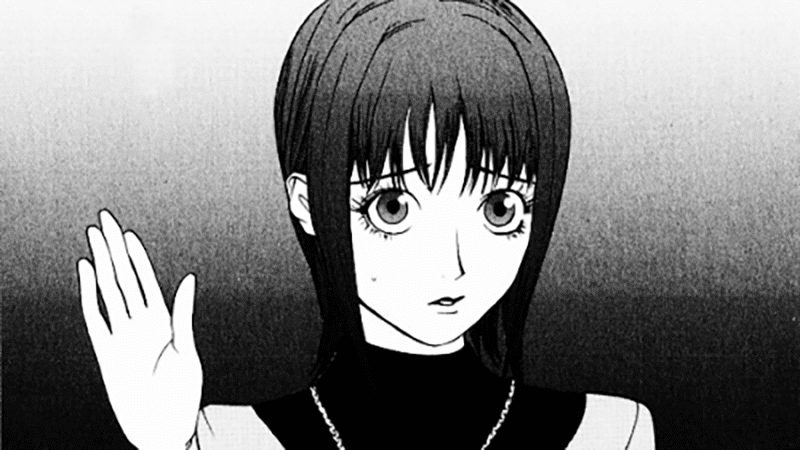
Shinobu Kaitani’s Liar game is amongst the best mind game manga out there.
The story of this long manga centers on Kanzaki Nao. She’s an incredibly honest girl who finds herself a sudden contestant in the so-called Liar Game. It’s a game of deceit and the stakes are in the hundreds of millions.
It isn’t long before Nao is tricked, but finds help from the genius swindler Akiyama.
What makes Liar Game so great are the many games our characters have to partake in. While they start out simple, they become more and more complex as the manga goes on. Yet, it’s not merely the games that are interesting to follow. It’s the many tricks, ploys and strategies used by the characters. It’s fantastic to witness them trying to fool and out-play each other.

My two favorites were the Contraband Game and the Musical Chairs Game. Both of them were absolutely fantastic, but in huge parts because of the characters featured in them.
Most of the characters in Liar Game are simple-minded and are merely there to portray a certain stereotype or to be out-played by our protagonists. During the two aforementioned games, however, we’re introduced to Yokoya and Harimoto, respectively. They both were worthy foils for Akiyama and made the games much, much more interesting and suspenseful.
Liar Game is brilliant and amongst the most well-written long manga I’ve come upon. It features not only complex games but also clever strategies and complex characters. If you’re a fan of mind game manga, I highly recommend reading it.
5. Kamisama no Iutoori and Kamisama no Iutoori Ni
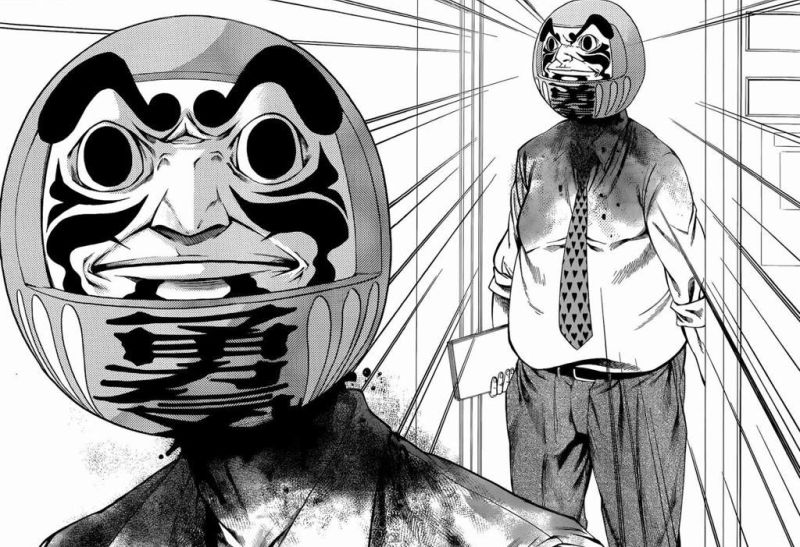
I love death game manga and Kamisama no Iutoori and its sequel by Kaneshiro Muneyuki is probably the best the genre offers.
Takahata Shun, our protagonist, is a high school student who’s incredibly bored with his life. All that changes when his teacher’s head explodes and a Daruma doll appears. It’s the start of the very first death game in the series.
Over the course of this long manga, we’re introduced to a cast of fascinating characters and games that are as deadly as they are weird.
While the death games featured in this manga are weird, the same is true for its characters. Especially Amaya and Ushimitsu appear to be utter nutcases. This is slightly reverted in the case of Ushimitsu, who develops markedly over the course of the manga and eventually became my favorite.

One thing I truly enjoyed about this long manga was how it handled its characters. Since it’s a death game manga, you can expect people to die, but in Kamisama no Iutoori no one seems safe. Even members of the main cast will die and at the most unexpected moments. It gives the manga an unforgiving atmosphere.
The art is another high point of the series. While it was decent enough in the first part, it improved markedly in the second. Near the end, the art is nothing short of fantastic and many of its page spreads are stunningly gorgeous.
I had an absolute blast reading this series. If you’re a fan of weird and surreal death games, read this manga.
4. Jojo’s Bizarre Adventure

With eight different parts and over nine-hundred chapters, Jojo’s Bizarre Adventure by Hirohiko Araki is the longest manga on this list and one of the longest manga in general.
In its earlier parts it was more reminiscent of other manga from the eighties, especially Fist of the North Star. Our protagonists, who are always named Jojo, have to fight vampires or Aztec super humans.
All that changed with Part 3: Stardust Crusaders. It’s here Jojo’s Bizarre Adventure introduced the so-called Stands, an element that should change Jojo forever. Stands are a manifestation of a person’s life force in the form of an ethereal figure and give its user superhuman powers.

Hirohiko Araki proved to be extremely creative when he created Stands. There are, of course, pure combat Stands, but they are far from the norm. Instead, Stands take on a variety of forms, some extremely weird. They can be game consoles, toy fighter jets, can transform people into snails and even turn back time.
The story of Jojo’s Bizarre Adventure centers on the various members of the Joestar family who battle various antagonists.
While the plot of the earlier installments of the series is rather typical and centers on saving the world, later parts can be vastly different. Part 4: Diamond is Unbreakable, for example, centers on the events in the small town of Morioh and Part 7: Steel Ball Run on a cross-country horse race.
As mentioned before, Jojo’s Bizarre adventure is an extremely long manga series, but I think anyone interested in manga should check it out. While the first two parts are weaker, things get much more interesting in Part 3: Stardust Crusaders. My favorite, however, has to be Part 7: Steel Ball Run.
3. Vagabond

Vagabond by Takehiko Inoue is based on Eiji Yoshikawa’s novel Musashi, a romanticized version of the life of Musashi Miyamoto.
After the battle of Sekigahara, our protagonist, Shinmen Takezo, is declared a wanted criminal. A manhunt is started. He’s eventually caught and strung up at a tree. He’s left there to die, but gets freed by a monk named Takuan. As he sends him off into the world, he gives him with a new name, Musashi Miyamoto.
From this point onward, the plot focuses on Musashi’s travels, his pursuit of the sword and to become ‘Invincible under the Heavens.’
The first thing one will notice about Vagabond is the art. This long manga is absolutely gorgeous to look at and features some of the best art I’ve seen in the entire medium.

Vagabond is a samurai manga and thus it’s full of stunning battles. They are blood, violent and rendered in stunning detail, yet, the violence is never glamorized.
What makes Vagabond so great are its characters. There’s Musashi, who starts out as a demon child and eventually matures into a calm and philosophical man who questions what it truly means to be invincible.
As much as this manga’s the story of Musashi Miyamoto, however, it’s also the story of Sasaki Koichiro. Long parts of Vagabond are dedicated to a retelling of Koichiro’s life. As much as I enjoyed Musashi’s character, in time, I grew to like Koichiro even more.
This focus on two characters also makes the manga much more interesting. We often switch between the two of them, showcasing each character’s unique path.
There’s no need to say much more about Vagabond. It’s one of the greatest long manga of all time.
2. Berserk

Rest in peace Kentaro Miura, thanks for sharing your gift with the world.
Berserk is one of the greatest and most influential manga of all time.
It’s a dark fantasy manga centering on the character of Guts, the Black Swordsman. He’s out on a quest for revenge and hunts down demonic beings known as apostles.
At first glance, Berserk might appear a simple, almost generic story. The more we learn about Guts, his past and his connection to the man known as Griffith, the more we realize just how complex this manga truly is.
Kentaro Miura did an amazing job showcasing their relationship, testing it and ultimately severing it at the end of the Golden Age arc.
While Berserk features amazing characters, its most known for its art and its violence.

Kentaro Miura was one of the most talented manga artist of all time. I’ve read a lot of manga, but scarcely few can compare to Berserk when Kentaro Miura was at the top of his game. The manga’s nothing short of breathtakingly beautiful.
Berserk is never shy about showcasing violence and the many atrocities committed in its world. We witness war and battles, but also rape, torture, religious fanaticism, and even ritualistic sacrifices.
Yet, the violence is always greatest when Guts is around. He fights using a sword as big as himself and cleaves his way through humans and apostles alike, leaving behind nothing but carnage.
Berserk’s apostles are, of course, the highlight of the series. They are towering, grotesque monstrosities. They are both gorgeous and terrifying.
Overall, Berserk is one of the greatest long manga of all time. I highly recommend it to anyone.
1. Blade of the Immortal

I’m a big fan of samurai manga and Blade of the Immortal by Hiroaki Samura’s not only my favorite samurai manga, but my favorite manga of all time.
Manji’s a man known as the ‘Hundred Men Killer.’ To punish him for his deeds, an eight-hundred-year-old nun has placed bloodworms inside his body, rendering him immortal. To atone for his crimes and to free himself from the curse of immortality, Manji vows to kill one thousand evil man.
After a brief introduction, Manji meets Rin Asano. She’s out on a quest for revenge against Kagehisa Anotsu, the leader of the Itto-Ryu, who murdered her parents.
This premise might appear simple, but the manga becomes increasingly complex when more factions and characters are introduced.

What I enjoyed the most about Blade of the Immortal were the characters. While Rin and Manji are both excellent characters, it was other characters I truly came to enjoy. Almost every single one of them is incredibly complex and well developed. My favorite amongst them was Anotsu Kagehisa who was the most complex character in the entire manga. Others I truly came to love were Makie Otono-Tachibana, Taito Magatsu and, of course, Shira.
While we follow Manji and Rin on their quest for revenge, the manga makes no distinction between good and evil. Every character has their own goals and reasons for what they are doing. Anotsu Kagehisa is the story’s antagonist for one reason alone and that’s because Manji and Rin are our protagonist.
As you can expect, this long manga’s full of fights. They are all absolutely outstanding and amongst the best in the entire samurai manga genre.
Blade of the Immortal is an absolutely brilliant long manga, one I recommend to anybody.
JoJo’s Bizarre Adventures – All Jojo Parts Ranked
Jojo’s Bizarre Adventure by Hirohiko Araki has become one of the most popular and well-received manga and anime of all time. There’s a reason I included it in my list of the best manga of all time.
With almost a thousand chapters, Jojo’s Bizarre Adventure is also one of the longest-running manga of all time. It comprises eight different parts, all of which feature their own protagonist, cast of characters, setting and plot.

It’s one of the most unique and creative series I’ve come upon and I couldn’t help but fall in love with it.
While I enjoyed all Jojo parts, some are better than others.
In this article I present to you my ranking of all the Jojo parts and which I think is the best one.
Part 1: Phantom Blood

Phantom Blood is the very first Jojo part. While it can be considered a classic, it’s also the weakest part.
The first thing one notices is how similar it is to other manga of its time. The general style and art is very reminiscent of that of Fist of the North Star by Buronson.
This Jojo part is set in the late 19th century and follows Jonathan Joestar and his adoptive brother Dio Brando. It’s soon revealed that Dio’s after the family’s fortune and doesn’t shy away from terrible deeds to reach his goal.
When his plan fails, he uses a mysterious stone mask to turn himself into a vampire. From here on out, Jonathan sets out for revenge against Dio.
It’s a story of drama, betrayal and, of course, vampires.
The biggest problem with the first Jojo part is that it’s rather bland and formulaic. It doesn’t stand out amongst other manga of its time and especially not when compared to other Jojo parts.
Jonathan himself has much the same faults. He, too, is a rather bland character, and can be best described as a hero archetype.
The high point of this Jojo part was without a doubt Dio, who served as a pure evil, Machiavellian and entertaining villain.
Part 2: Battle Tendency

Battle Tendency is the second Jojo part and features Joseph Joestar, Jonathan’s grandson.
This time, the story centers on The Pillar Men, a race of ancient super humans and the original creators of the stone mask.
Battle Tendency does everything that the Phantom Blood does, but it does it better and much more interesting.
The first difference is the protagonist. Joseph is much more interesting than his grandfather. He’s more of a trickster who uses ploys and psychology to defeat his enemies. This makes fights much more interesting because Joseph doesn’t beat his enemies by sheer force, but by outwitting them.
The problems of this Jojo part start with the supporting cast, who’s overall rather weak and uninteresting.
While the art style is better than in Phantom Pain and shows hints of the strangeness to come, it’s still rather uninspiring.
The antagonists, The Pillar Men, felt rather bland. They had their own motifs and ideals, but they were essentially nothing but super powerful human beings that needed to be stopped.
While Joseph was an improvement over Jonathan, he was also extremely cocky, to the point of being arrogant and even unlikeable. I also disliked his many tricks and ploys which were at best unrealistic cop-outs and at worst Deus ex machines.
While this Jojo part isn’t bad by any means, and it proves popular among many fans, but it just didn’t work for me.
Part 3: Stardust Crusaders

Stardust Crusaders was the first big Jojo part and the one that put it on the map. Even today, it’s probably still the most well-known Jojo part out of all of them.
The main character, Jotaro Kujo, has likewise become the most popular Jojos of all time and has frequently appeared in other parts. He’s a mixture of Jonathan and Joseph, making him well-rounded and less bland.
The secondary cast, including Battle Tendency’s Joseph himself, are all likeable and feel much more important to the story than those in the earlier two Jojo parts.
The story takes us on a wild hunt from Japan all the way to Egypt for one reason alone: Dio is back.
Learning this, Joseph is hell-bent on avenging his grandfather and thus enlists the help of Jotaro, who’s recently developed a Stand.
Here we have the one element that changed Jojo’s Bizarre Adventures forever: Stands. Their importance to the series can’t be overstated, and they have been a vital part ever since.
As popular as Stardust Crusaders is, I feel it’s a bit overrated. The pacing’s a bit off, especially during the first half. Frankly said, this Jojo part takes a bit to get going. There are also a few plot points that could very well be cut since they added nothing to the story.
The art is again rather old-fashioned. It’s, however, an improvement when compared to Phantom Blood and Battle Tendency.
The last problem is the Stands themselves. As fantastic an addition to they were, one could tell that Araki was still testing the waters. Overall, they can be hit or miss in this Jojo part, especially in the earlier half.
Part 6: Stone Ocean

Stone Ocean is the first Jojo part to feature a female Jojo. Her name’s Jolyne Cujoh, the daughter of Jotaro Kujo.
She’s sent to Green Dolphin Street Prison for a murder she didn’t commit. It’s soon revealed that this is only part of a bigger plan by a disciple of Dio Brando.
The prison setting was an interesting choice and makes for a fascinating setting.
The mystery about Jolyne’s framing, the prison and Father Pucci Enrico was well-done and really kept you engaged.
Stone Ocean is, at least in my opinion, the weirdest of all Jojo parts, and it also features some of the strangest stands. The weirdest one amongst them is probably Weather Report.
The overall strangeness of the Stands, however, made for some great, dynamic and interesting fights.
Even the cast of characters is as weird as the Stands and very weird when compared to other Jojo parts. I thought they were a mixed bag. While I enjoyed some of them, like Weather Report, I also really disliked others like Anasui and Emporio.
While I enjoyed this Jojo part, I also had my problems with it.
The first was the prison setting. While I enjoyed it at first, I soon felt the story stagnated because it was always restricted to the same location. After a while, I even found it uninspiring, especially when compared to the settings of part four and five.
The last thing was the overall weirdness of the part. I’m usually a big fan of weird and bizarre ideas, but Stone Ocean often felt a bit too strange for even my liking.
Part 8: JoJolion

JoJolion is the most recent Jojo part. While it has recently finished, I haven’t kept up with it. That’s the reason its position in this ranking might change.
This Jojo part is once more set in the town of Morioh, but one that’s set in the alternative universe that Steel Ball Run was set in.
The story follows a different version of Josuke Higashikata, but only in name because he’s entirely shrouded in mystery. The story follows him as he tries to regain his memories. This makes him quite the unique protagonist, for he’s literally a blank slate with no background.
JoJolion was actually my very first venture into the world of Jojo’s Bizarre Adventures and one I did by complete accident. What I discovered was weird as hell. I knew nothing about Jojo’s Bizarre Adventures, or Stands so it was a wild ride, reminiscent of a fever dream. I soon discovered that it was the eights part of an ongoing manga series and went back to read the entire manga from the beginning.
The art in this Jojo part is absolutely fantastic and as bizarre as we’re used from Jojo, maybe even more so as in other Jojo parts that came beforehand.
The story’s mystery’s engaging and it keeps you wondering just what the hell’s going on. As we read on, things only server to get stranger.
The Stand fights in this Jojo part were all extremely interesting and well-done.
Overall, I had a blast with this Jojo part so far, but I unfortunately haven’t finished it yet. What I read so far, however, didn’t really feel on par with the best Jojo parts out there.
Part 4: Diamond is Unbreakable

Diamond is Unbreakable changed Jojo’s Bizarre Adventure forever and marked a departure from every established convention.
It’s not only the setting but also the art, the story, and the Stands that were different. This time, the story’s not about saving the world from megalomaniac villains. Instead, we’re confined to the small town of Morioh in Japan. Our main character Josuke Higashikata is a normal high schooler.
This Jojo part is a more intimate affair, centering on the events in a small town.
The side characters are also different from those in other Jojo parts. They are, mostly, normal people or other high schoolers.
The story starts out when Jotaro Kujo arrives in Morioh. He’s on the search for the Bow and Arrow, an artifact which can awaken people’s latent Stand abilities. Where this Jojo part really shines, however, is in its second half.
It’s here we get to know Jojo’s Bizarre Adventures’ most iconic antagonist, the serial killer Yoshikage Kira. He’s a fascinating and extremely well written character. He doesn’t want to conquer the world. Instead, he just wants to continue his quiet, normal life.
The biggest change, however, is in the art. Throughout this Jojo part, the art evolves and changes from the muscular frames that came before to bendy, effeminate fashion divas. It was a style that should come to dominate the series ever since.
Apart from the art, Stands also evolved vastly and became much more defined. Pure combat stands took a step back and were replaced by a large variety of Stands with weird powers.
The high point of this part, however, was, without a doubt, Yoshikage Kira.
Part 5: Golden Wind

It was a tough choice to decide between Diamond is Unbreakable and Golden Wind. Eventually, though, I put Golden Wind higher, simply for how amazing a Jojo part it is.
The first thing that’s interesting about this Jojo part is that it’s almost entirely removed from the rest of the series and only vaguely related to it.
Giorno Giovanna is a great protagonist. He’s the illegitimate son of Dio who wants to take over the Neapolitan mafia and become a ‘Gang-Star.’
Yet, it wasn’t him who I liked the most, it was the side characters who truly stole the show in this Jojo part, most of all, Bruno Bucciarati.
These characters are a ragtag group, all with their own quirks, motivations, goals and, of course, Stands.
The art in this Jojo part is fantastic throughout the board and while Araki stayed true to the style he developed in Diamond is Unbreakable, he perfected it. Many locations are all beautiful and one can truly see the Greco-Roman influences.
The high point of this Jojo part, however, are the fights. The Stand abilities are amongst the most creative, complex and interesting in the entire series. These make the fights extremely dynamic and interesting and some of them are amongst the best in the entire series.
There are only two points of criticism I have for this part. The first is the main villain Diavolo, who I think is introduced much too late and only appears near the end.
Another is that some Stands are a bit hard to understand. There’s of course Gold Experience, but most of all King Crimson which is a topic of much confusion amongst fans of the series.
Part 7: Steel Ball Run

Steel Ball Run is a favorite amongst fans and my favorite part of Jojo’s Bizarre Adventure. It’s the culmination of everything Araki’s created.
This Jojo part can be seen as a reboot of the series. It takes place in an alternate universe and features many alternate versions of well-known characters.
The story follows Johnny Joestar, an alternative version of Jonathan Joestar. He’s a paraplegic jockey who wants to partake in a transcontinental horse race through the United States. This horse race is called the Steel Ball Run race.
Before the race he meets Gyro Zepelli, another participant. After a duel in which Gyro showcases his weird powers, the Spin, Johnny regains the use of his legs. From then on, the two of them team up to win the race.
The stakes, however, soon rise when the real antagonist of this Jojo part is introduced. It’s Funny Valentine, the president of the United States.
Johnny and Gyro are fantastic characters, but many of the participants are great in their own right. The most interesting among them are Sandman and Diego Brando.
The art is outstanding and amongst the best in the entire series and manga in general.
What made this part so interesting, however, was the horse race. We weren’t just following the general plot, but also the race itself.
The Stands in this Jojo part are also amongst the best in the series and make for some fantastic, high-stake battles. Gyro’s Spin is also a great addition and serves as an homage to Hamon, a technique featured in the first two parts of the series.
Overall, Steel Ball Run is a fantastic Jojo part, and in my opinion the very best one.
Why You Need to Read The Horizon Manga
I’m a huge manga fan. Over the years, I’ve read countless manga, as you can see on my list of the best manga of all time, the best horror manga or the most disturbing manga. In this article, however, I want to talk specifically about The Horizon manga.
The Horizon is a short manga I discovered about a year ago, but it has become one of my absolute favorites.
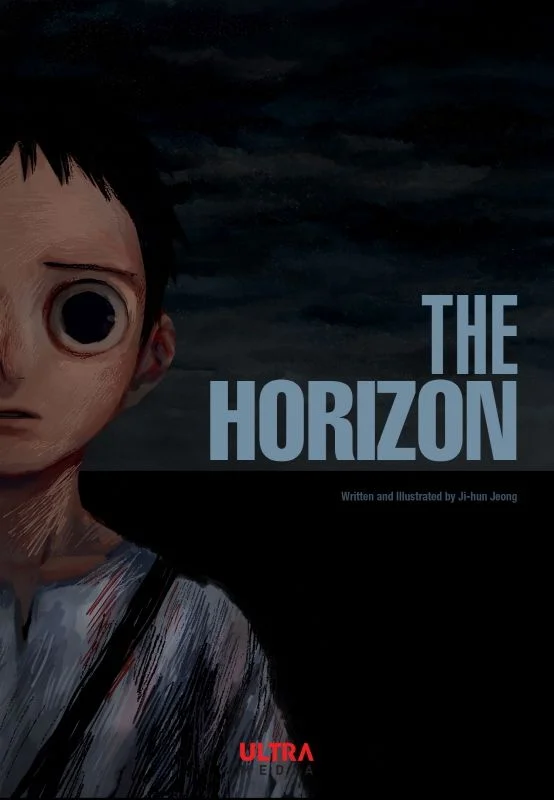
It’s a sad, depressing, sometimes utterly heartbreaking manga. Yet, it’s not a horror manga. No, it’s one of the most emotional and deep works I’ve ever read.
In this article, I want to discuss the various elements of this manga and shed light on why I think it’s such a great work.
Plot

The Horizon starts with a little boy and his mother. There’s chaos, panic and war, as we soon learn. Within moments, the fleeing people we see in the first panels are reduced to nothing but lifeless bodies.
Before long, the boy stumbles upon his mother’s body. Shell-shocked and stunted, he begins to walk. First through the ruined, derelict remains of the city and then down the road, simply walking.
After he spends the night on a school bus at the side of the road, he meets a little girl. From then on, the two of them travel together, always onwards towards the horizon. Over the course of the manga, they encounter various other people.
Setting
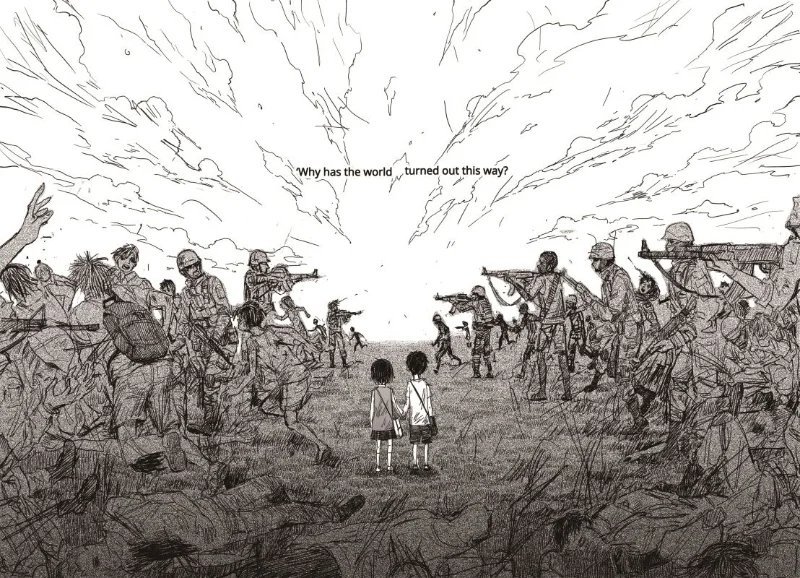
The Horizon manga is set in a torn, derelict world. We don’t know what exactly happened, but it’s clear that it’s war, a war that still seems to go on.
It’s a dark and unforgiving world that showcases war and its aftermath. We see empty roads, ruined cities and encounter traumatized people, people who are lost and broken because of what they saw.
The world’s a brutal place and we learn that right from the start, but also during our characters’ many encounters with other people.
Over the course of the manga, we witness the brutality of the world in a multitude of ways. We witness explosions, fighting, dead bodies and even infectious diseases.
And yet, the death and gore are never glamorized. It’s always shocking, always there to make us feel and to showcase in how terrible a state the world is in.
Even until the end, we never learn how the world became this way, but we don’t need to. This story is about a boy and a girl who are trying to survive. All we need to know is that the world’s ended to understand their suffering.
Characters
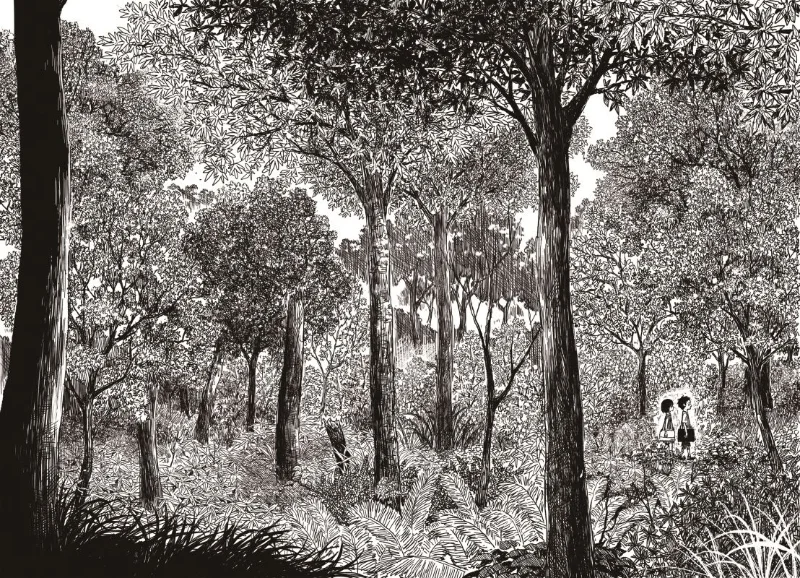
The Horizon manga tells the story of two characters, a little boy and a little girl.
As they continue on their way, they meet multiple characters. Some are traumatized victims of war, others are soldiers or people who’ve found their own meaning in this terrible world, like the man in the suit.
Many other manga feature young characters or children to get an emotional reaction from their readers, even though the story could very well be about adults.
The Horizon manga, however, feels genuine in what it does. It’s a story specifically about children and about how they experience the horrors of war. It tells the story from their perspective, shows us their understanding of it and what their thoughts are. The Horizon manga never feels cheap or like cheating because we all know that scenarios like that are a sad reality in our world. It showcases how terrible things such as war can affect those who are most vulnerable.
Art
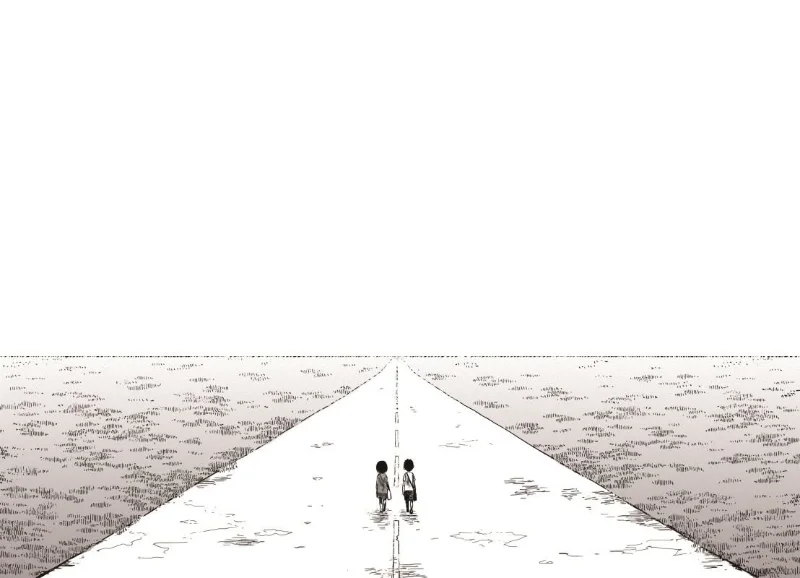
The art in The Horizon manga fits the story extremely well. It’s dark and gritty, at times sketchy and simplistic, at others detailed.
What’s interesting is the omission of dialogues in earlier parts. In the first chapters, the manga relies almost entirely on narration, exposition and the art to tell its story. It succeeds fantastically even without the use of words.
The manga’s atmosphere is extremely strong, and it’s in huge parts because of the art. There are many panels that show nothing but our two characters on long empty roads or in giant empty meadows. This reliance on empty spaces, on scarce colors, and our characters only appearing as tiny dots in a corner really helps to showcase how lost and alone they are.
There’s an underlying feeling of sadness to this manga, to the world it’s set in, one that’s almost nihilistic. This is especially noticeable in the other people our characters encounter and their design. Many of them are traumatized and truly look like it. They have wild eyes, empty faces or appear endlessly tired.
Another interesting aspect is that The Horizon manga is almost entirely held in black-and-white. Yet, there are a select few pages that are in full color. This element is only used when our characters are happy, when the world seems nice for just a moment. It’s nothing short of beautiful.
Emotions
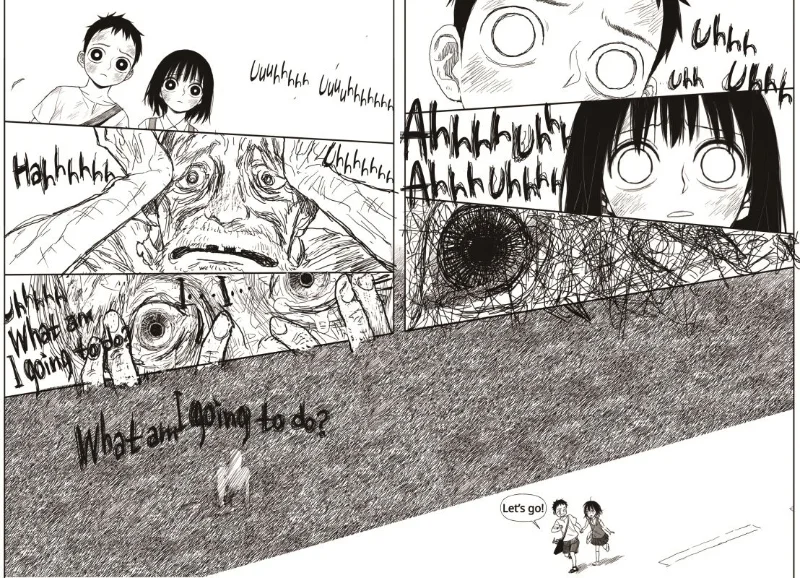
While The Horizon manga is a work about traumatized, shell-shocked and broken people, it’s still full of heavy emotions.
Many times, these emotions are showcased by the art alone. This is most prevalent when a character spirals out of control. We see their eyes growing wide and see them scream in terror. As they do, the art becomes sketchier, simpler, but also more jagged and wild. The more a character’s mental state deteriorates, the more the art does. It fully serves to show the emotions characters feel. This combination of emotions and art makes The Horizon such a fantastic work.
It’s not merely that, however, as with a story such as this, there’s bound to be powerful emotions. It’s not just bystanders, but also our main characters who often show powerful emotions, especially when they are trying to understand war and the state the world is in.
The most emotionally heave segment apart from the ending, however, has to be the backstory of the little girl. It’s as sad as it is fantastic.
Themes
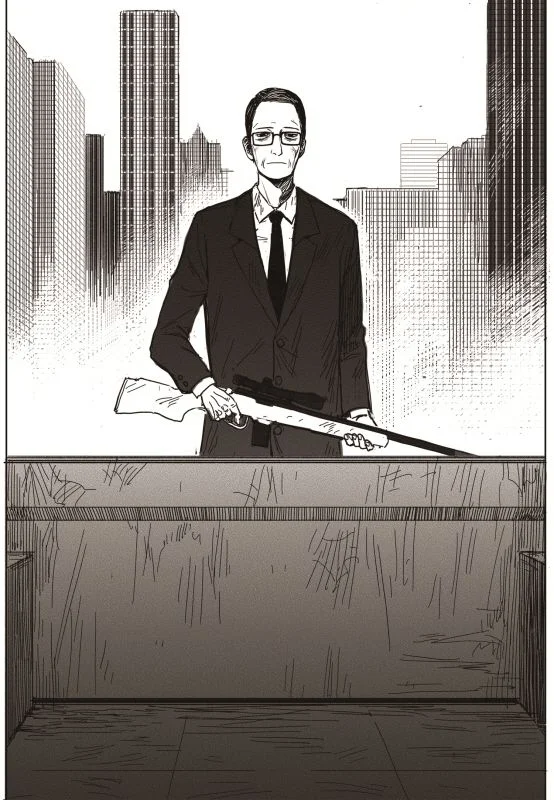
The Horizon manga is a tragedy. It’s a depressing, almost bleak work full of sadness. Still, it also showcases some deeper themes. It’s heavy with topics such as fear, being lost, hopelessness and futility. It shows the darkest of human existence. And yet, there are a few select moments that also show happiness and hope.
When we encounter the man in the suit, we wonder what it means to be good and what it means to be bad. Who even is good and who’s bad in a world such as this? Can a distinction such as this even be made?
The man in the suit talks about killing all the men with guns to make the world a better place. Similarly to the little girl, we too, beg the question if can ever make the world a better place by killing. It’s a moral dilemma.
The chapters with the man in the suit are a discussion of the human condition. We always believe to be in the right, we rationalize our deeds, especially in times of war or those that follow it.
The backstory of the little girl we witness in the second half of The Horizon manga is another sad and depressing part. Here, too, we witness how people handle the situation they are in.
The world’s ended and has become a hopeless place. Is it futile to even try to go on? Does it matter at all if you survive if there’s nothing out there? It shows in perfect detail how different people handle this knowledge and what they’ll do.
Conclusion
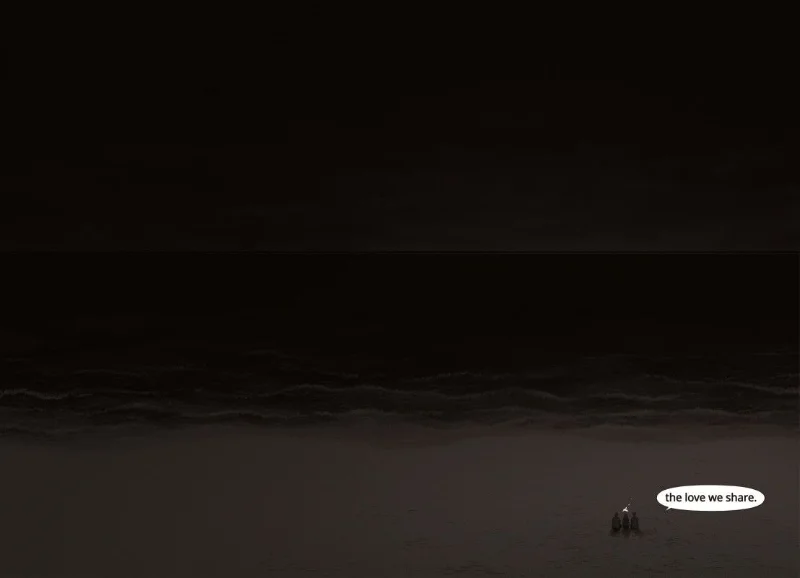
Many sad and depressing manga fail for a one simple reason. They descend into misery porn, throwing their characters into a worse and worse events. The Horizon manga is sad and depressing, but it never fully descends into misery porn territory. The sadness, the emotions and the events depicted never feel gratuitous, glamorized or exploitive. No, they simply showcase what’s happening.
One reason The Horizon manga succeeds so well at what it does is because of its length. At only twenty-one chapters, it’s a rather short work, but I feel it’s the perfect length. If it would’ve been any longer, the gloomy atmosphere would’ve been dragged out. We would’ve gotten used to it. And thus, the emotional impact of the story would’ve been weakened.
What I came to like truly about The Horizon manga was the ending. As sad and depressing a work as it is, it ends on a positive note. It shows that as long as there’s love, there’s always hope, even in a world such as this.
Overall, The Horizon manga is a hidden little gem. It’s a fantastically dark, depressing and sad tale, but one that’s truly beautiful.
Read it, it’s a masterpiece.
You can now also by the print-version on Amazon. You can find it right here:





